2025 DIE ECKE ARTE CONTEMPORÁNEO
Te regalaré un abismo [I Will Gift You an Abyss]
Solo show, Die Ecke Arte Contemporáneo, Santiago de Chile
January 10 – April 11, 2025
Te regalaré un abismo 11-20 [I Will Gift You an Abyss], 2024
Acrylic paint and gouache on Arches 300 gr. watercolor paper
10 units of 2 sheets (61 x 46 cm each) painted on both sides, all works reversible
The exhibition was supported, in part, by FONDART, Ministry of Culture, Arts and Heritage, Government of Chile.
With the special exchange with students from Balmaceda 1215, Sede Metropolitana >>>
////////////////////////////////////////////////////////////////////////////////////////////////////////////

























Photos by Álvaro Mardones, courtesy Die Ecke Arte Contemporáneo
////////////////////////////////////////////////////////////////////////////////////////////////////////////
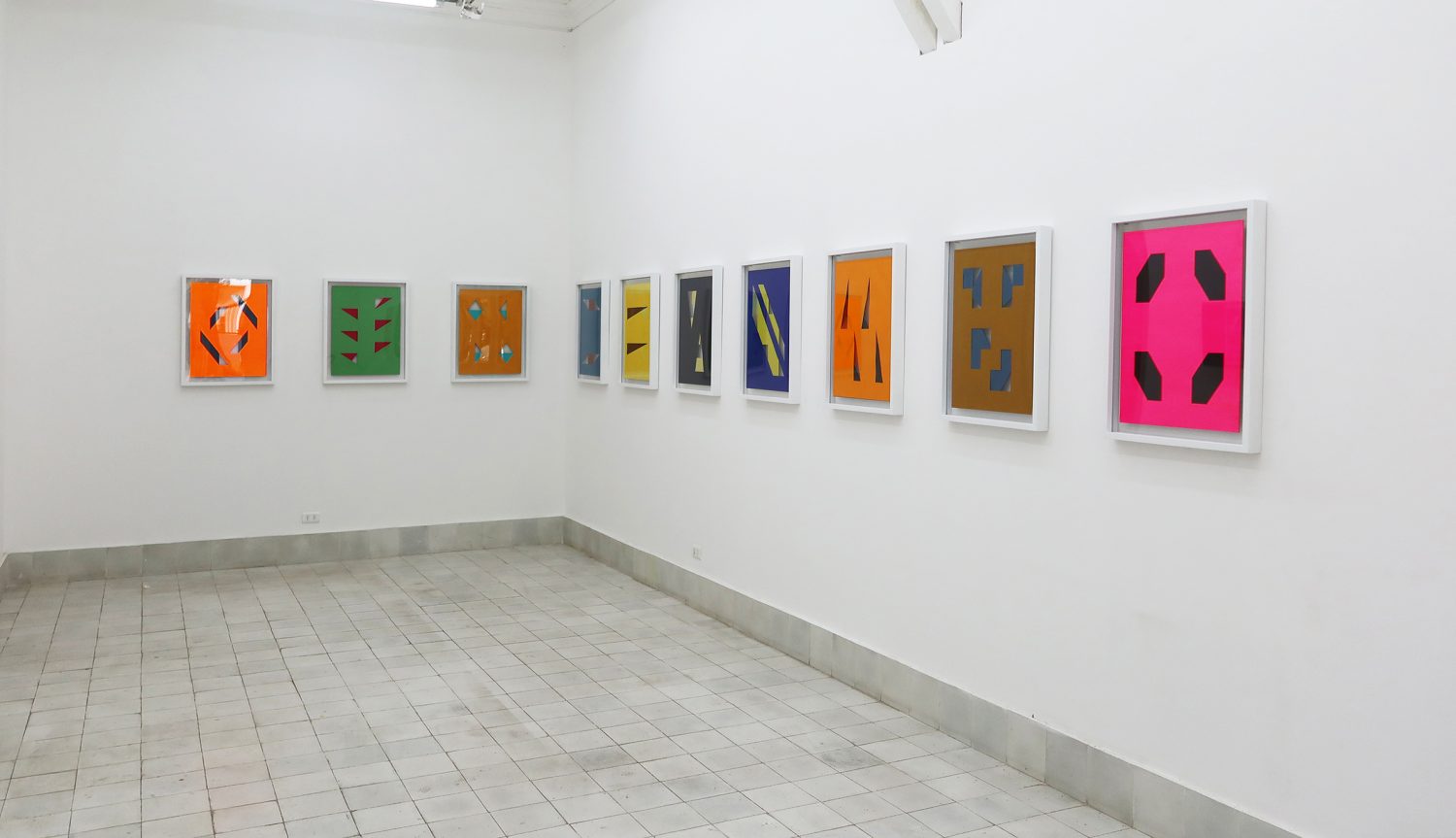
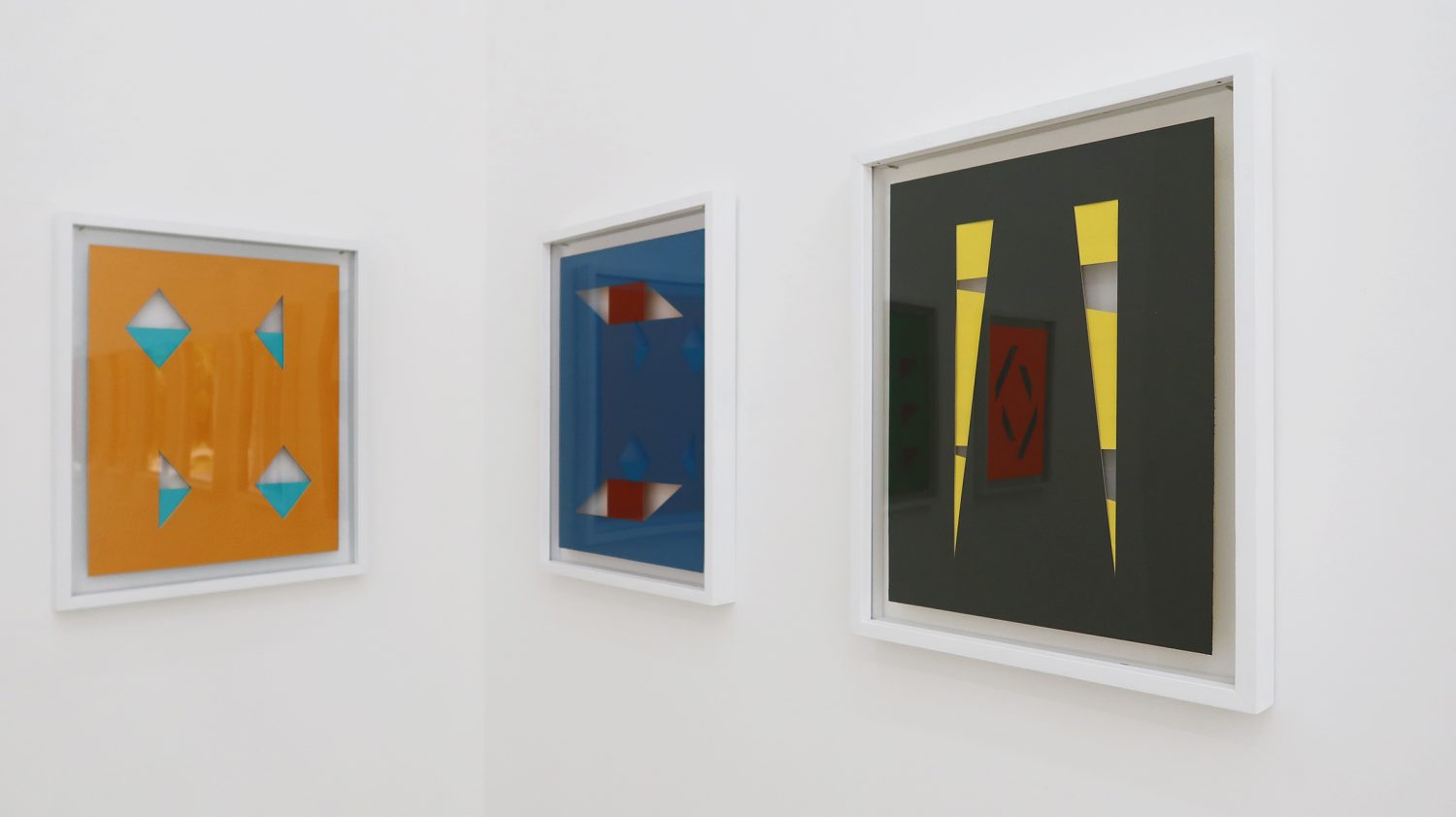
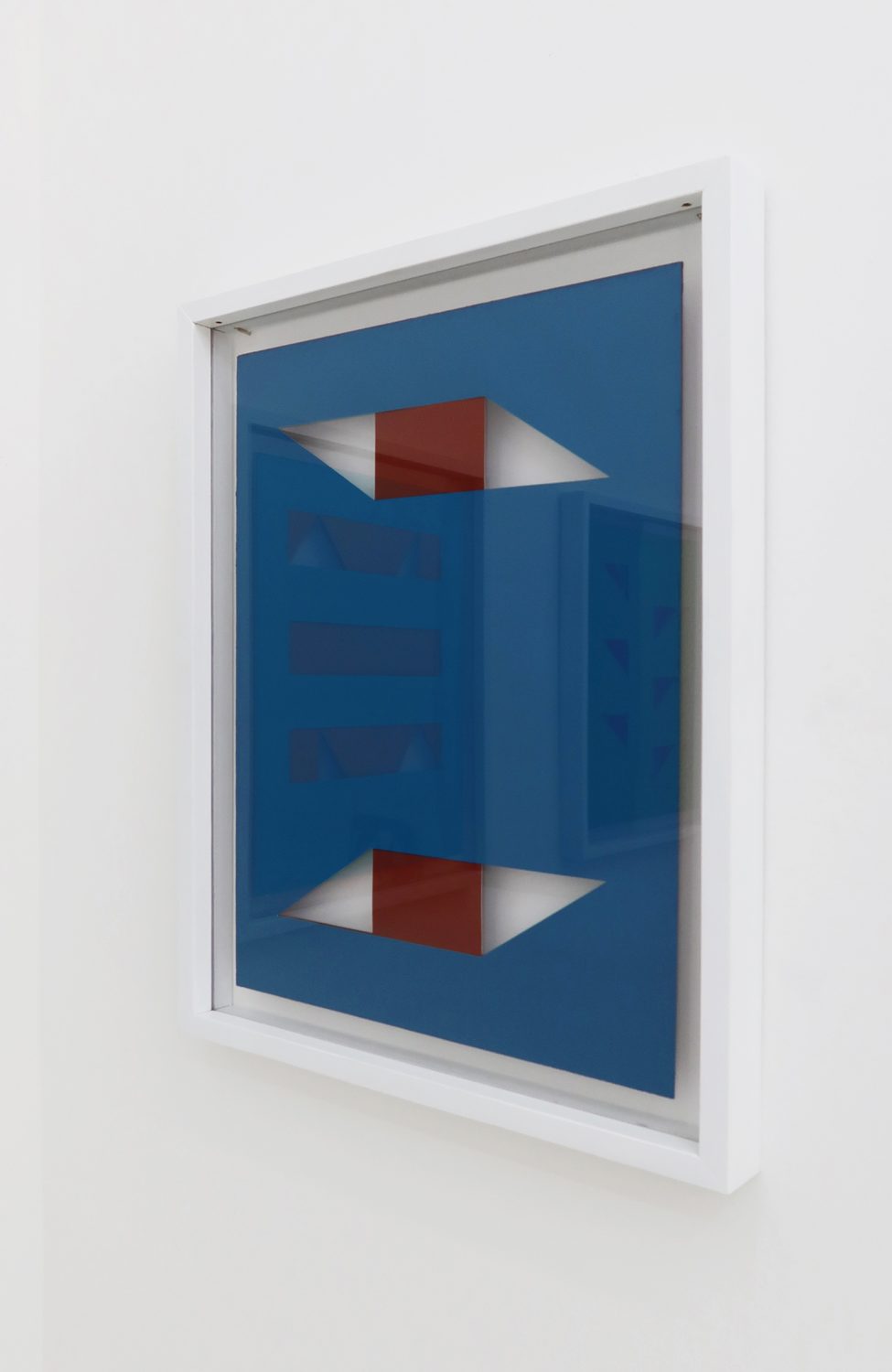
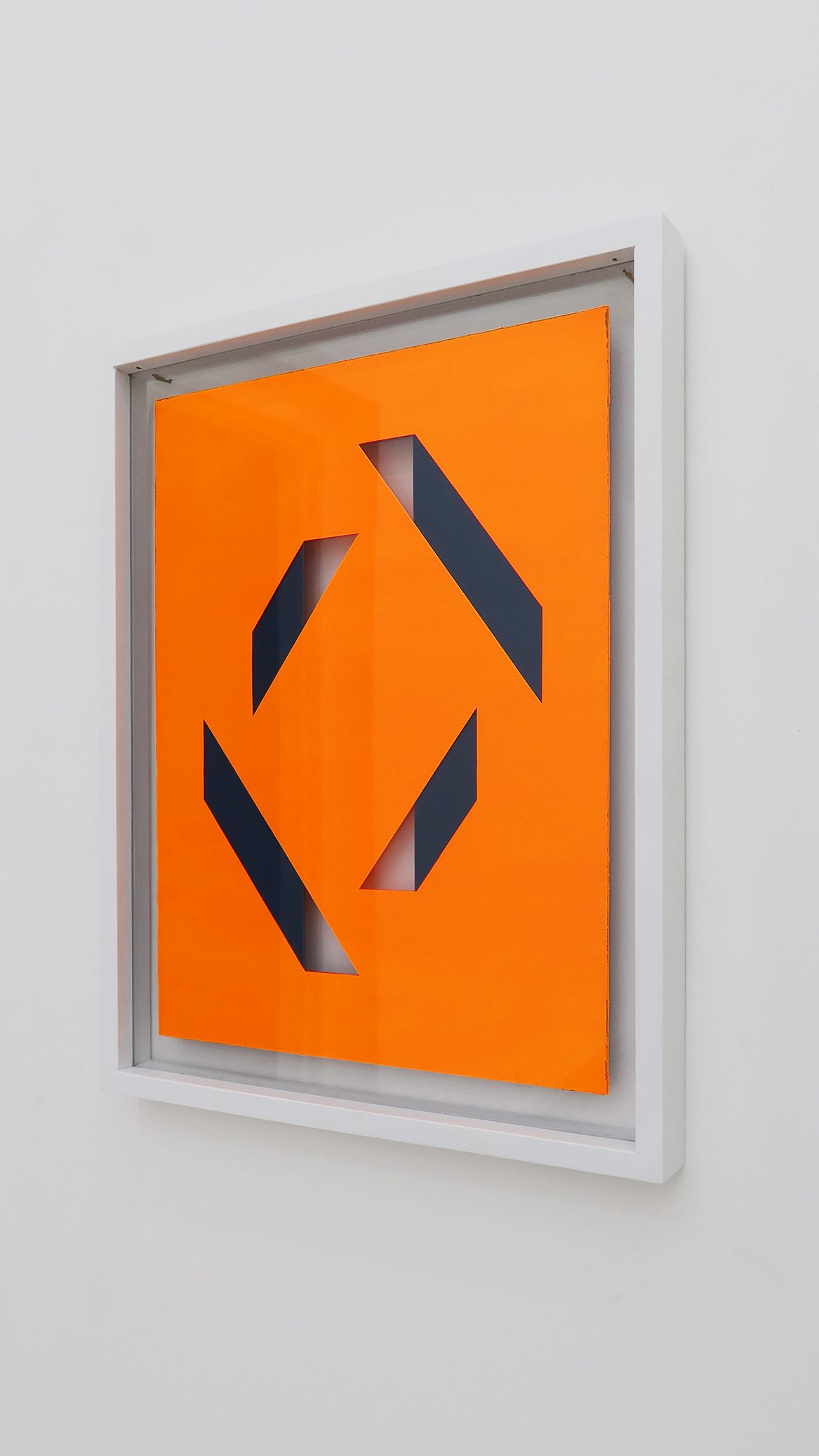
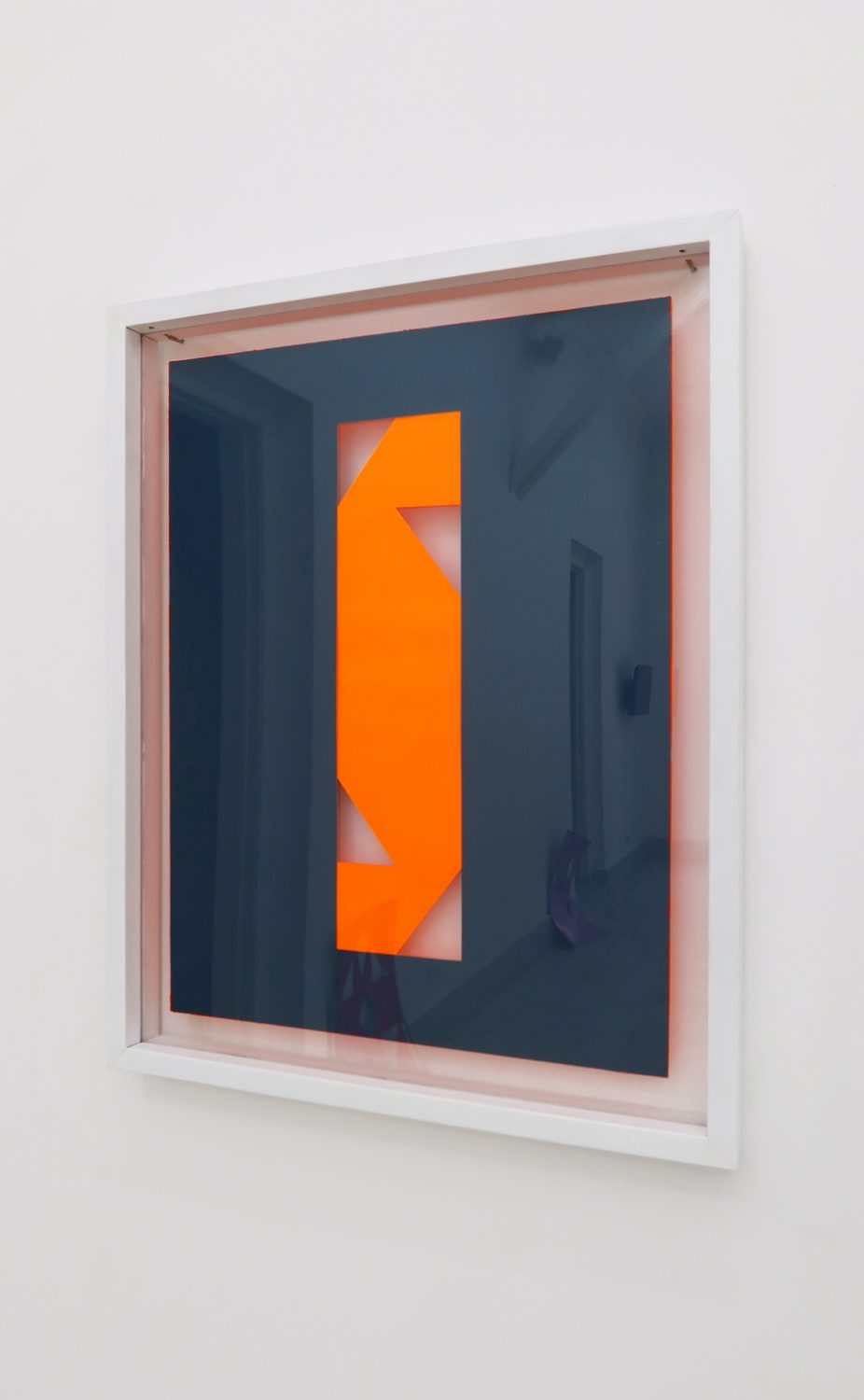
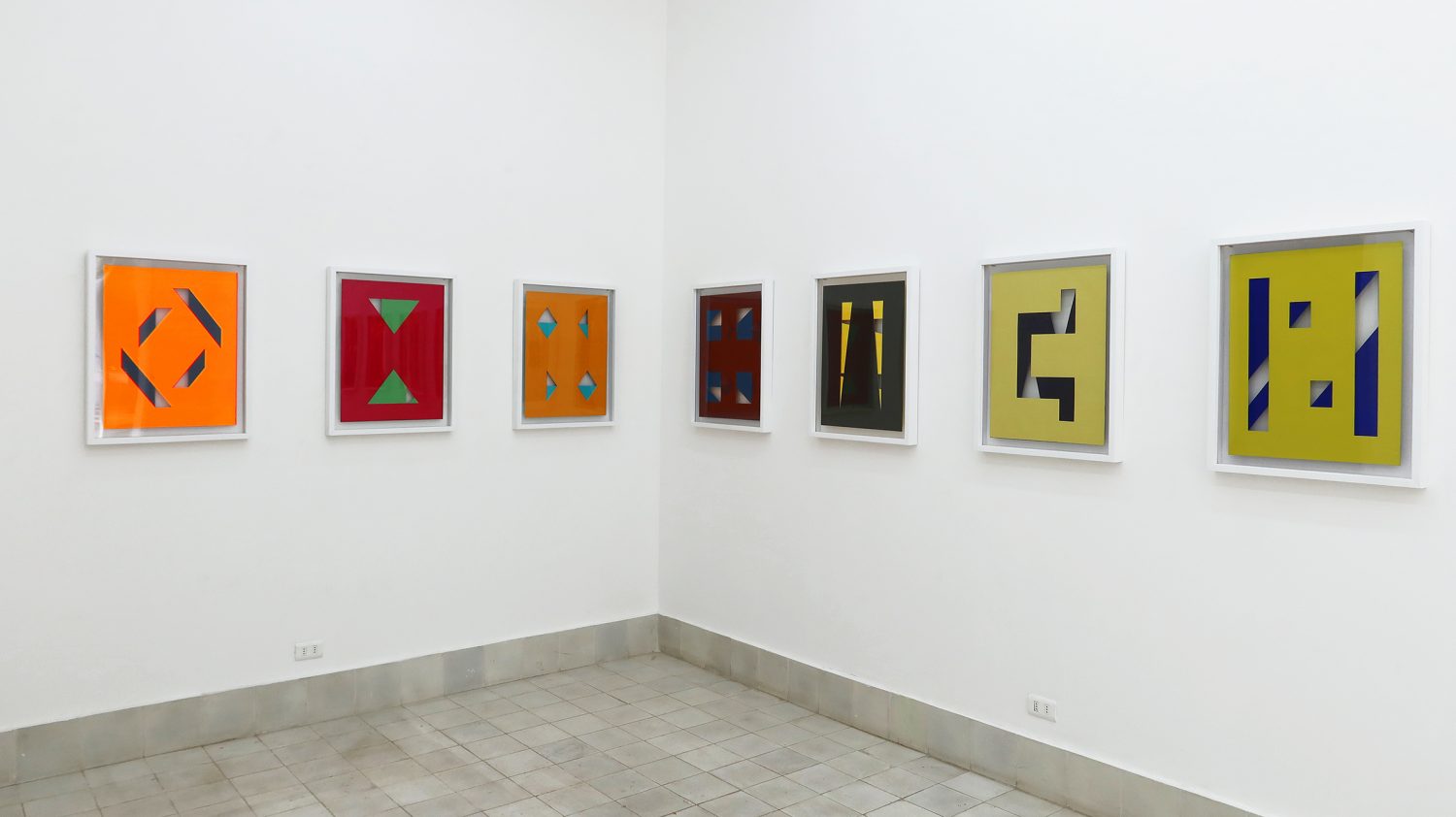
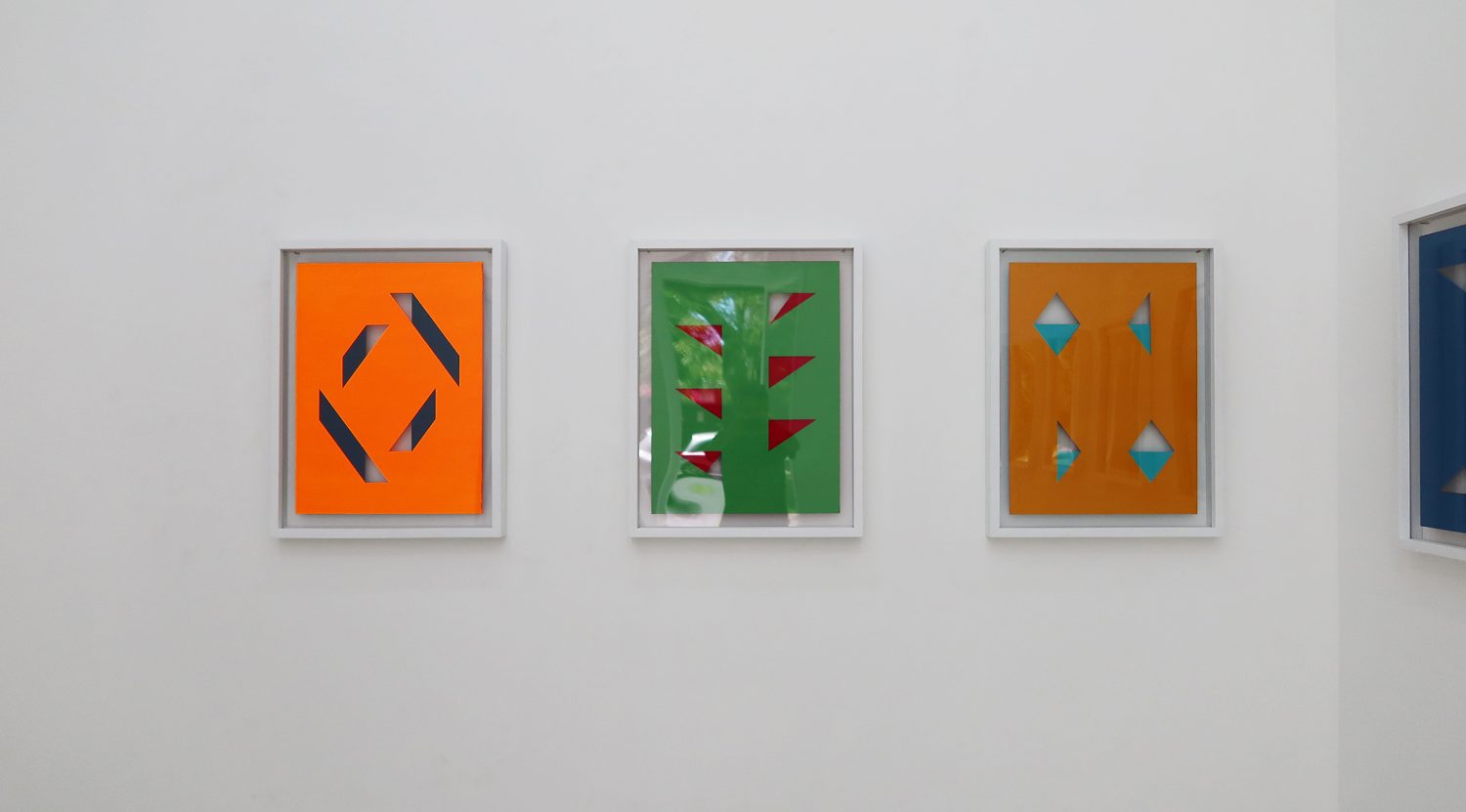
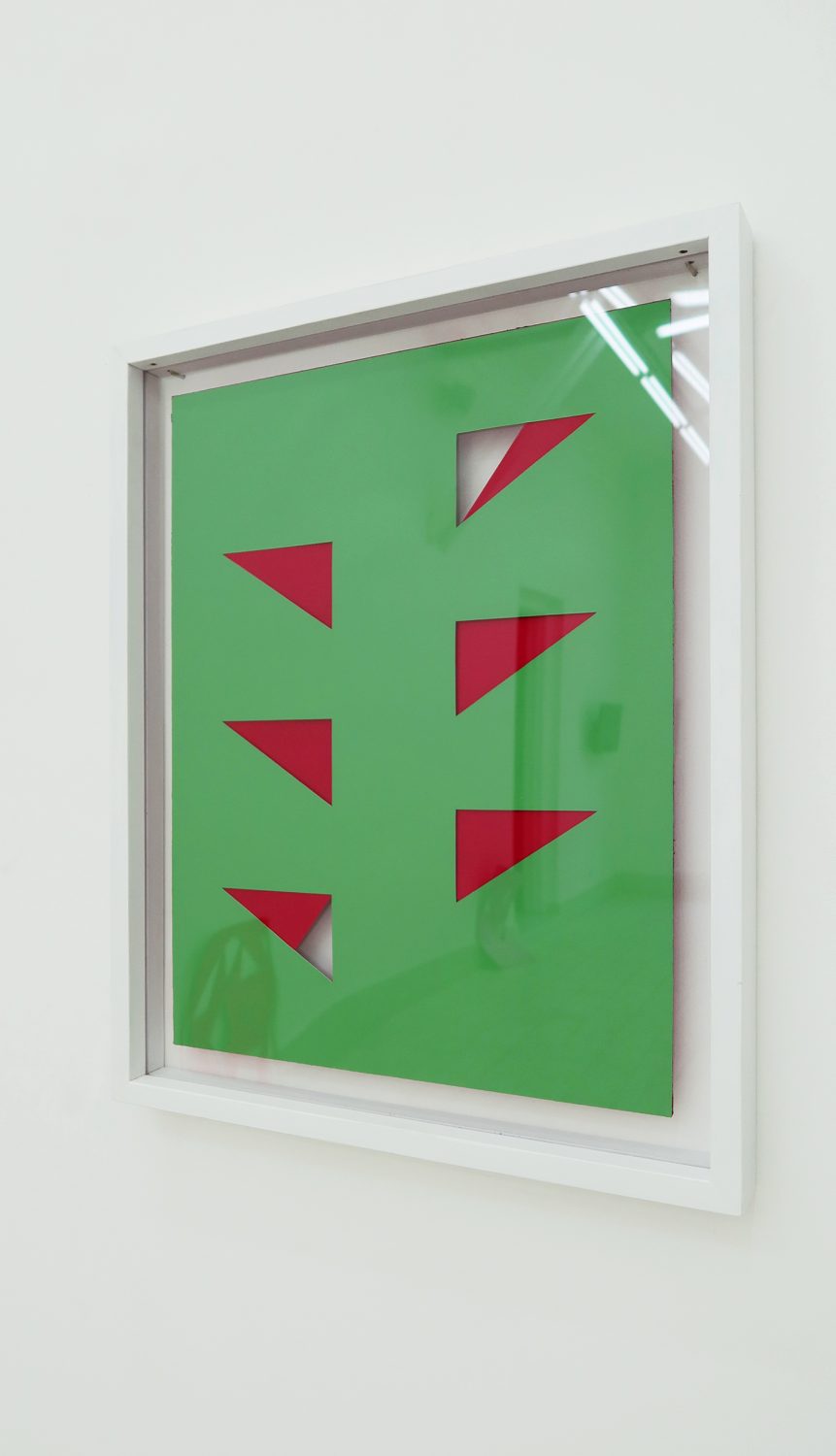
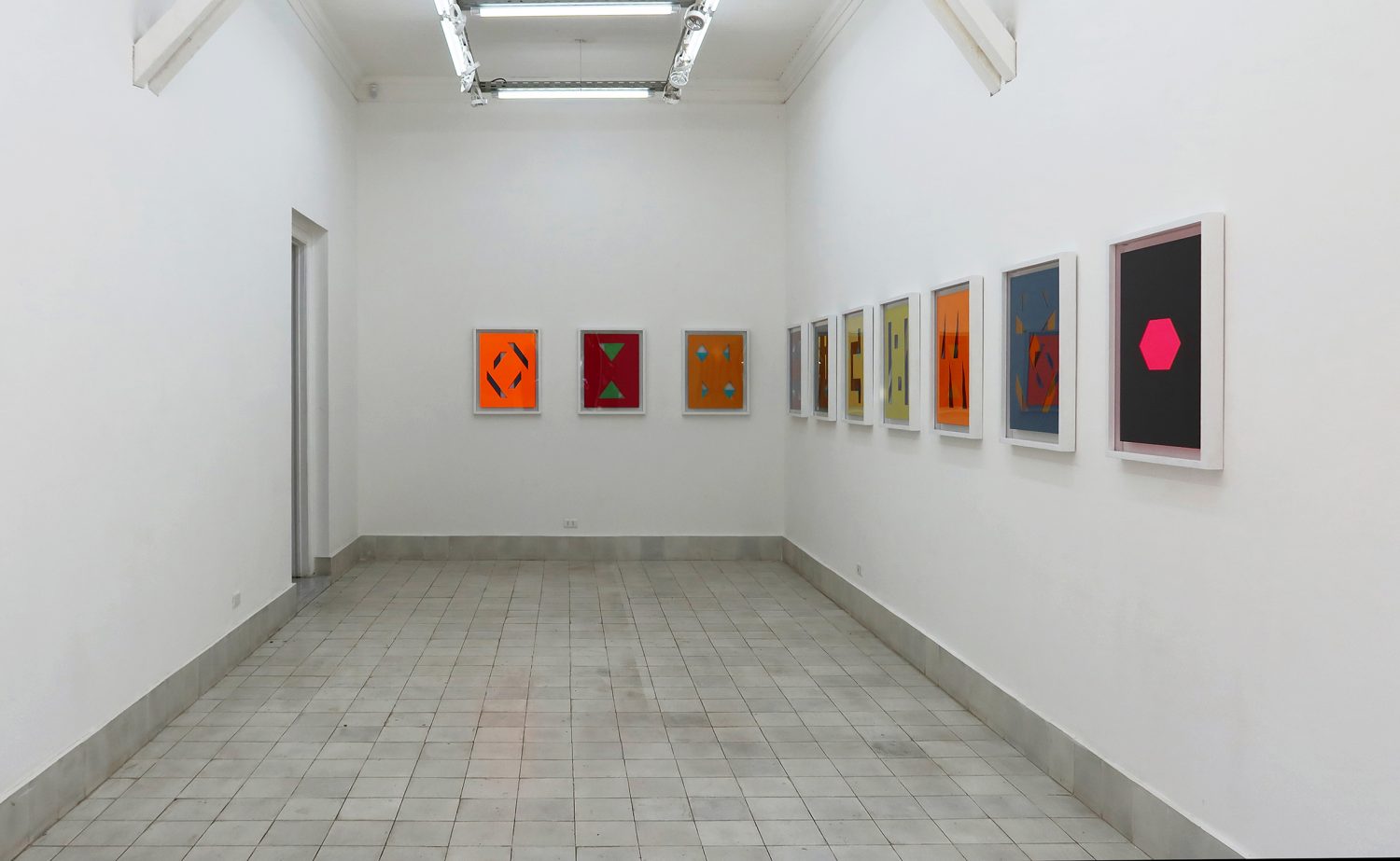
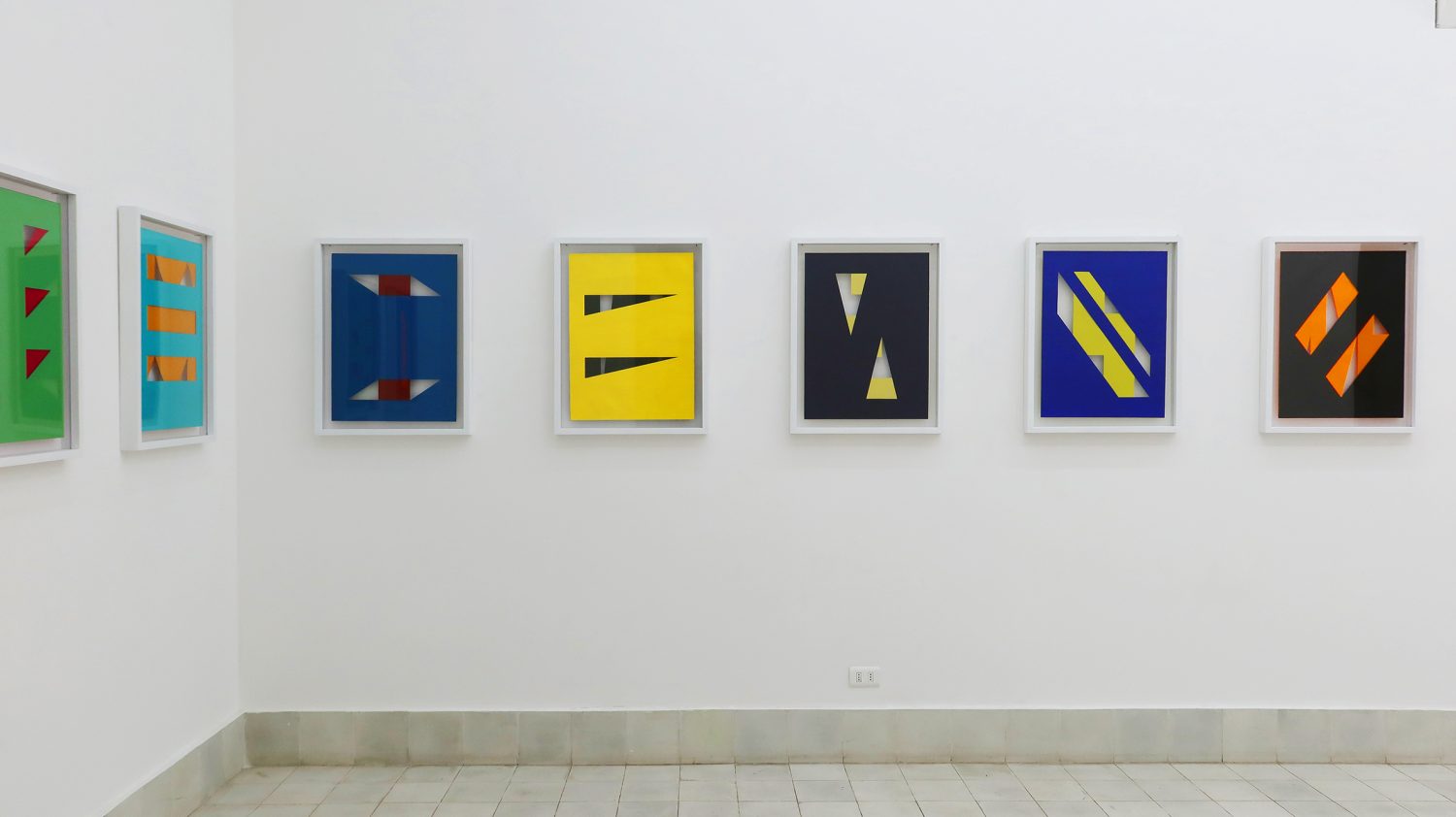
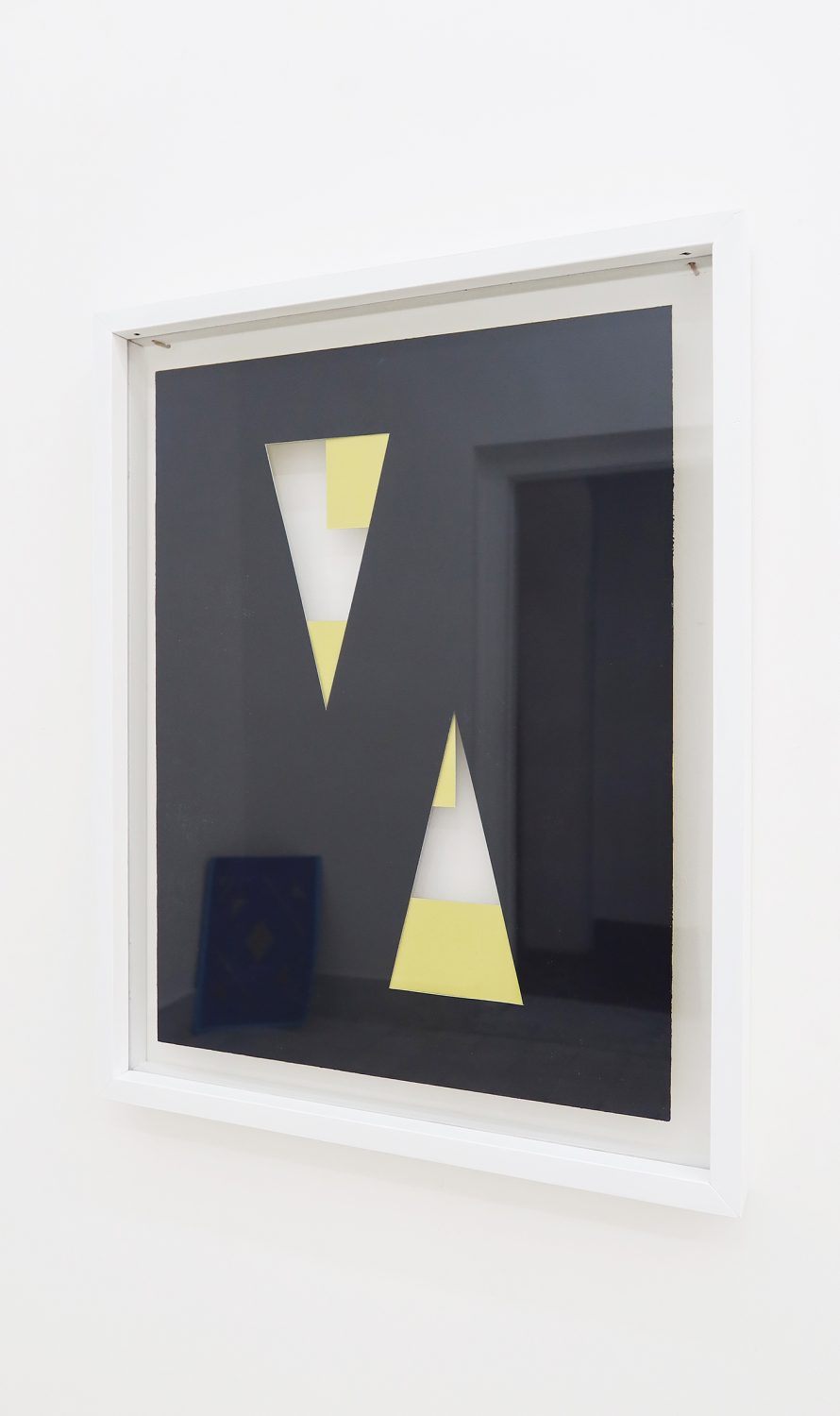
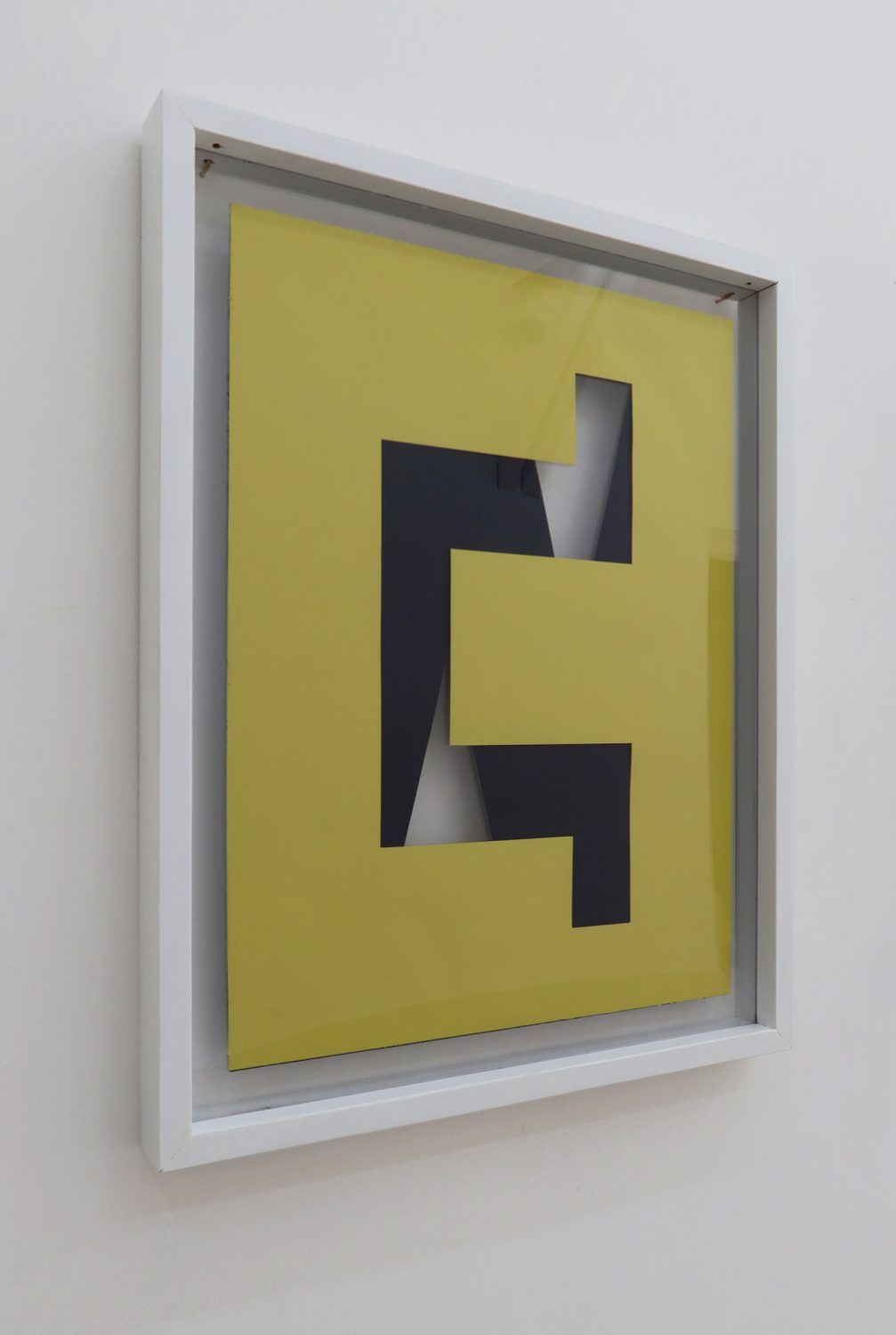
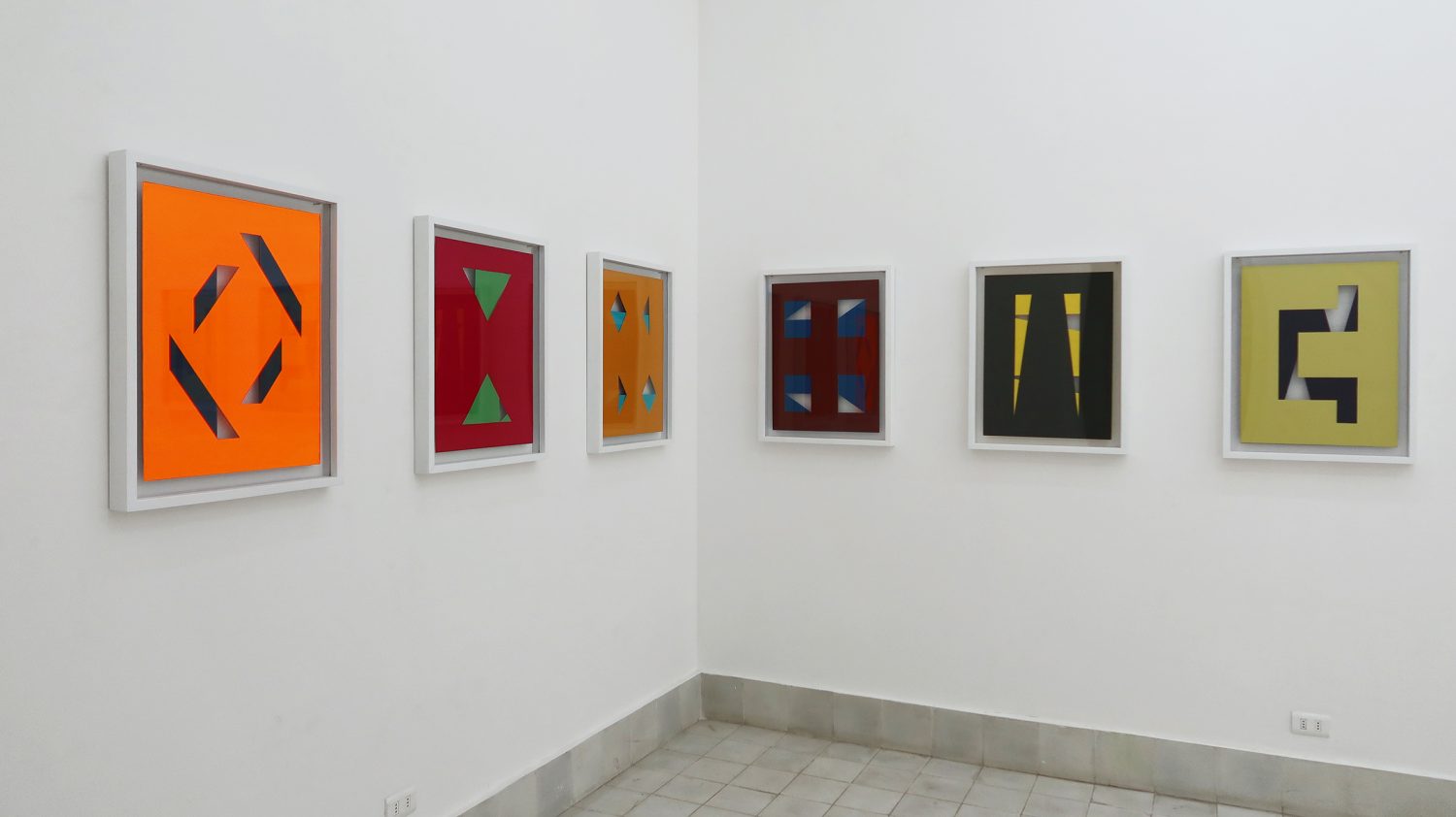
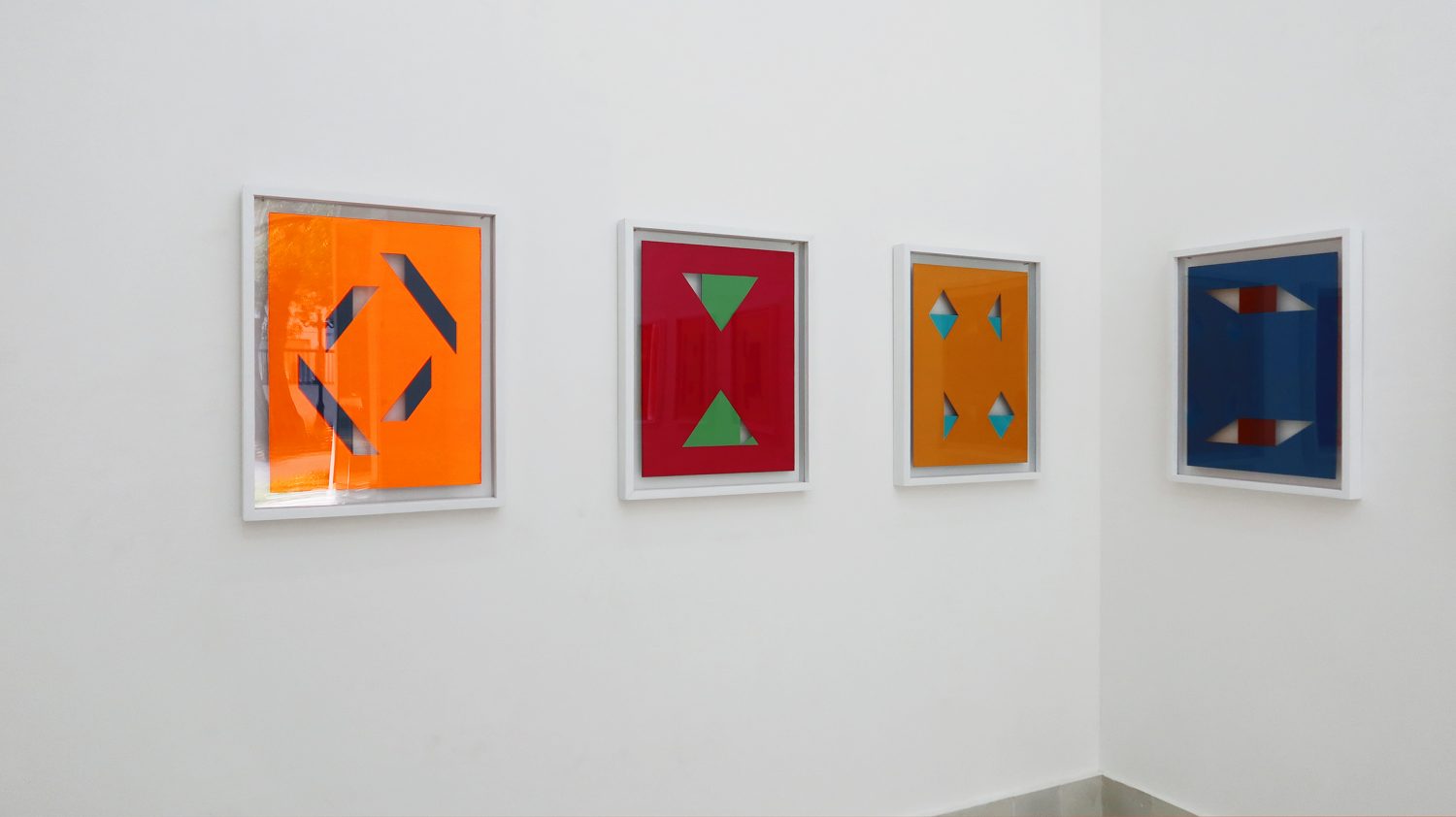
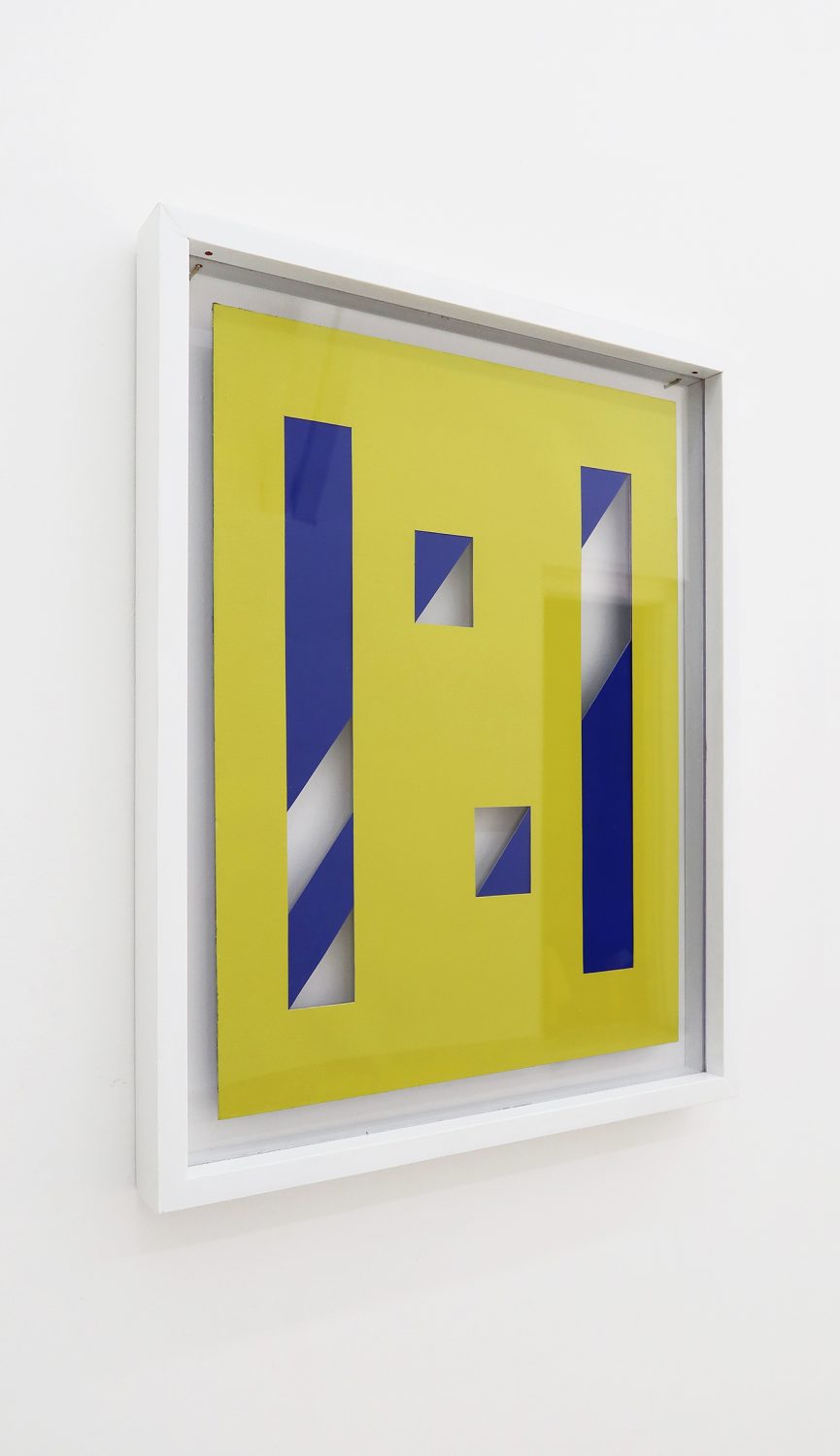
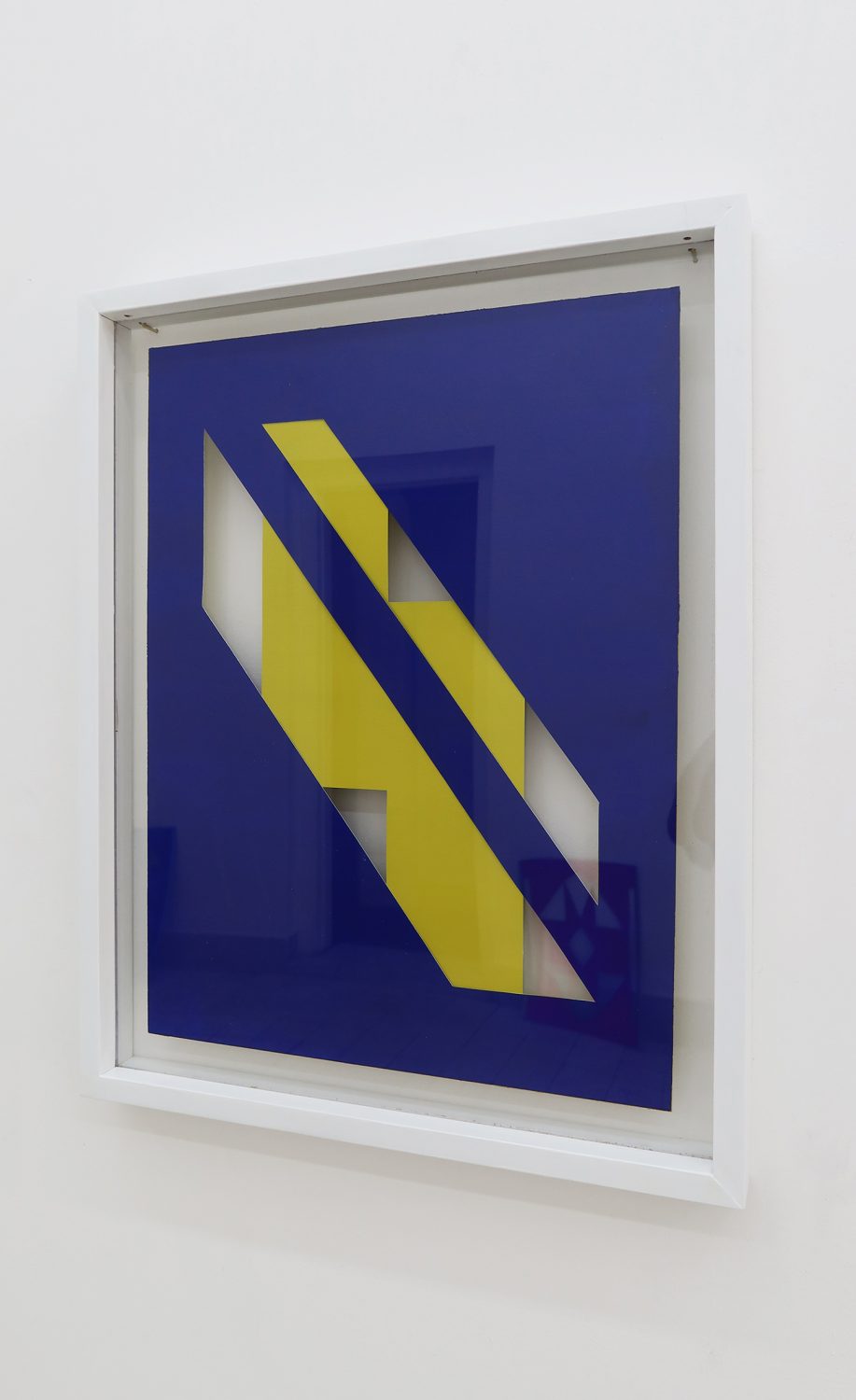
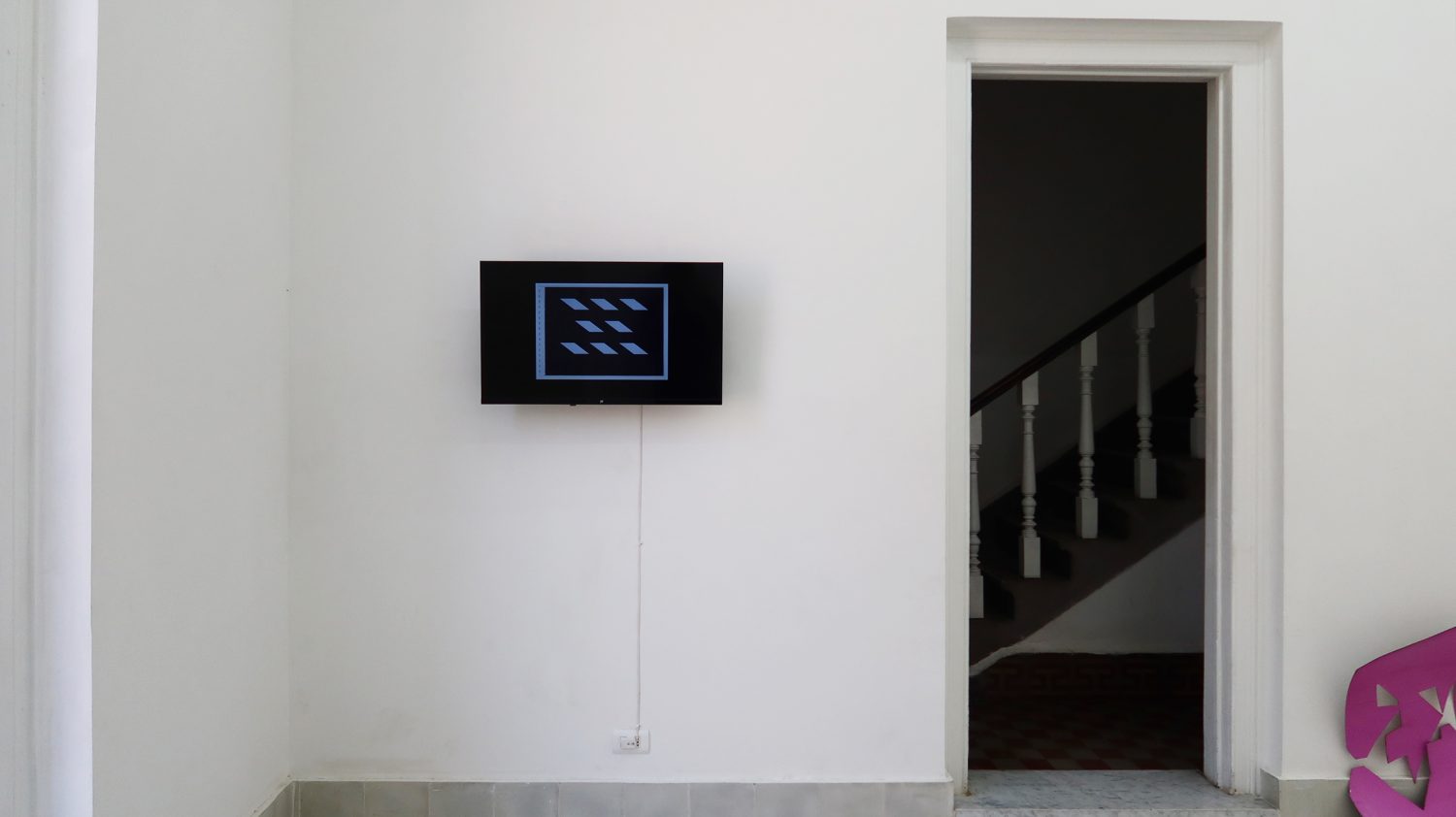
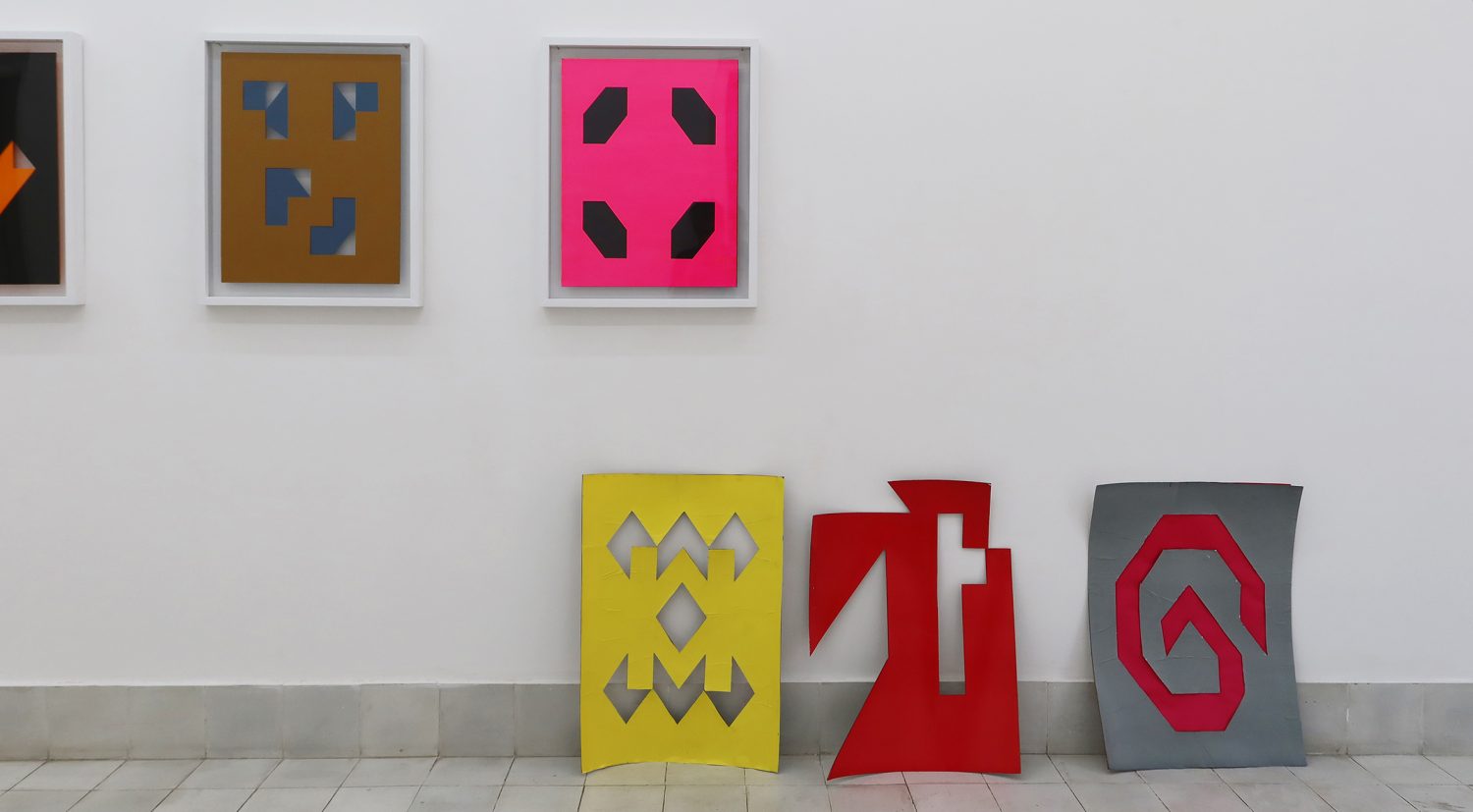
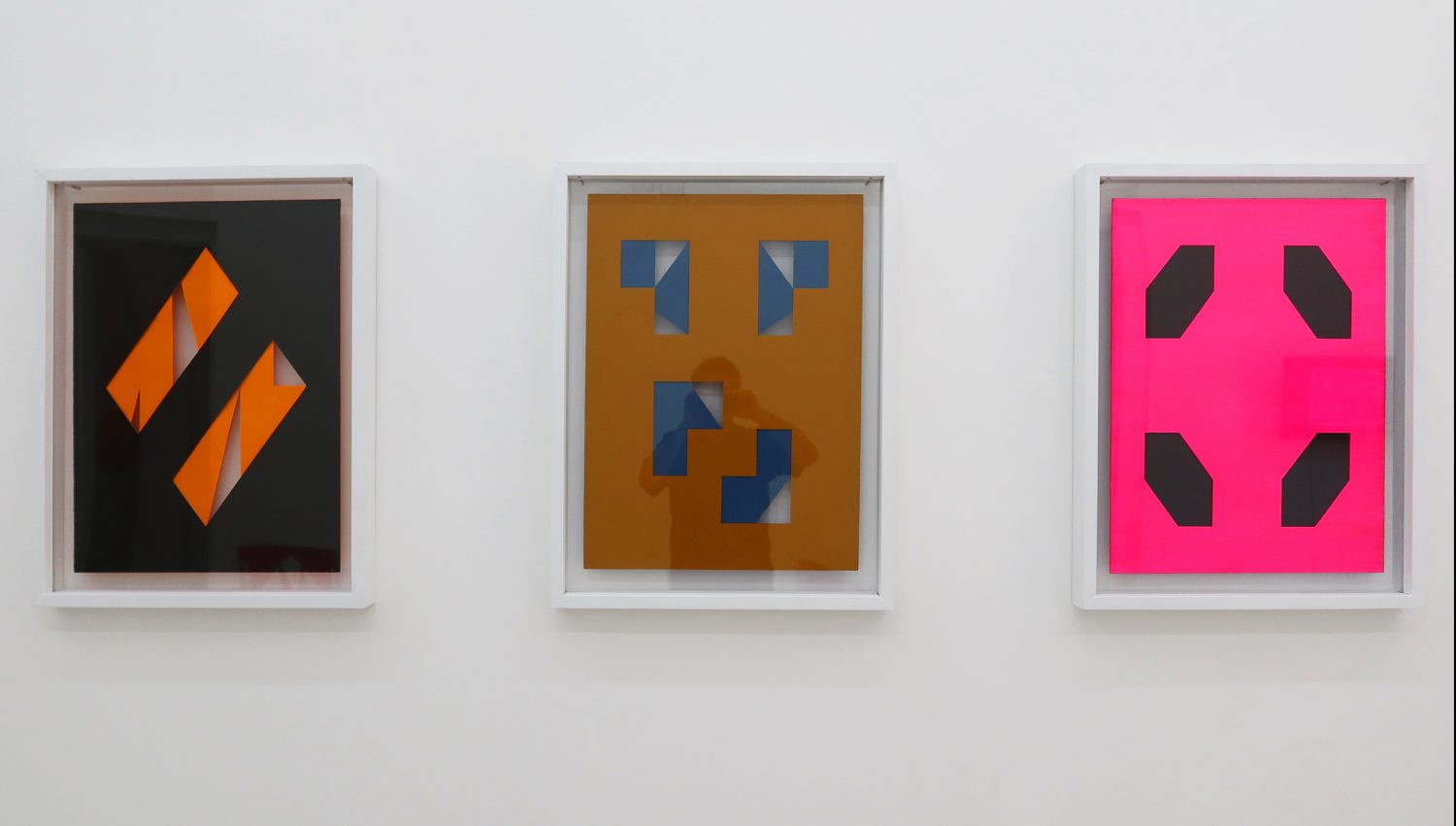
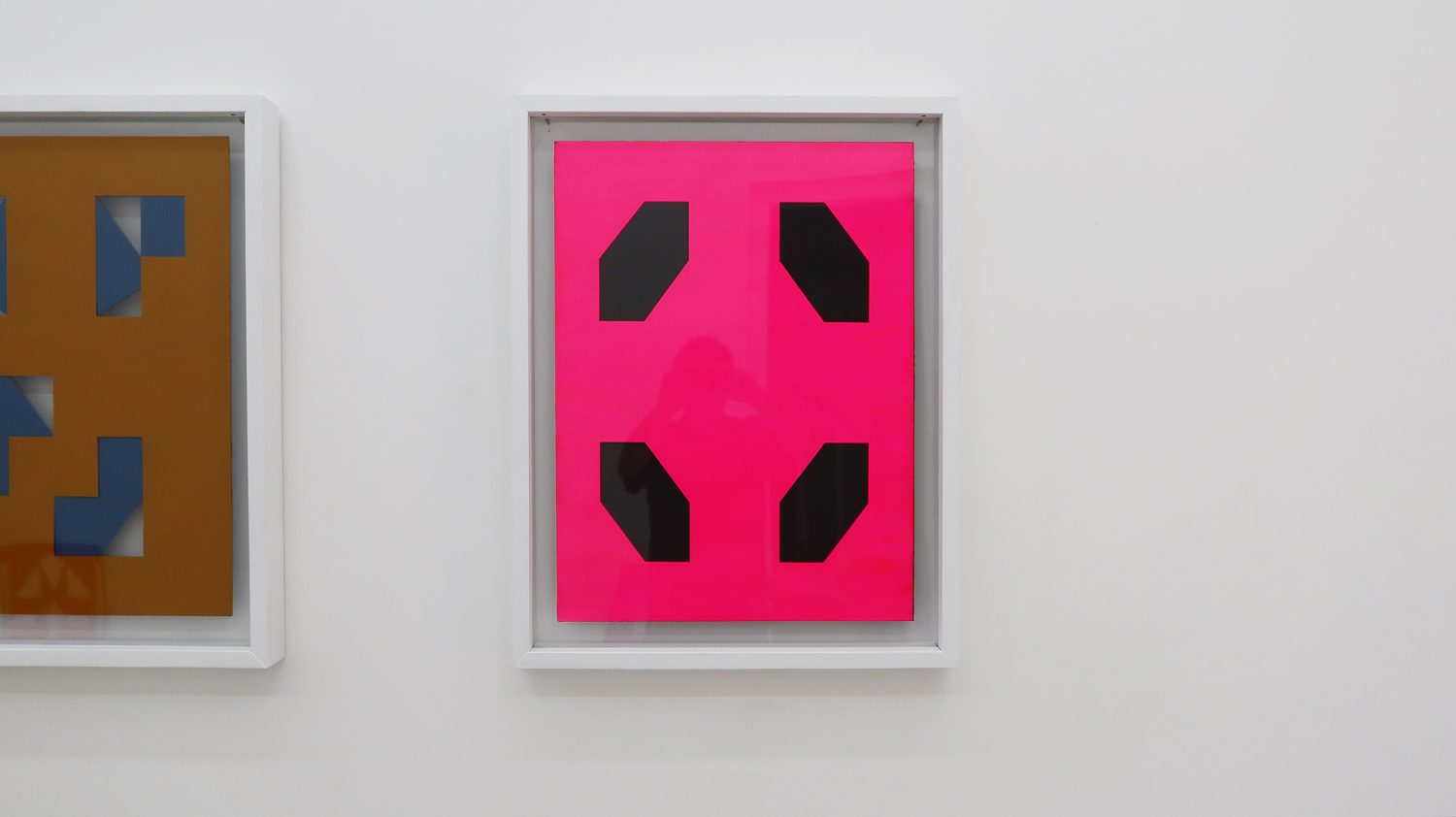
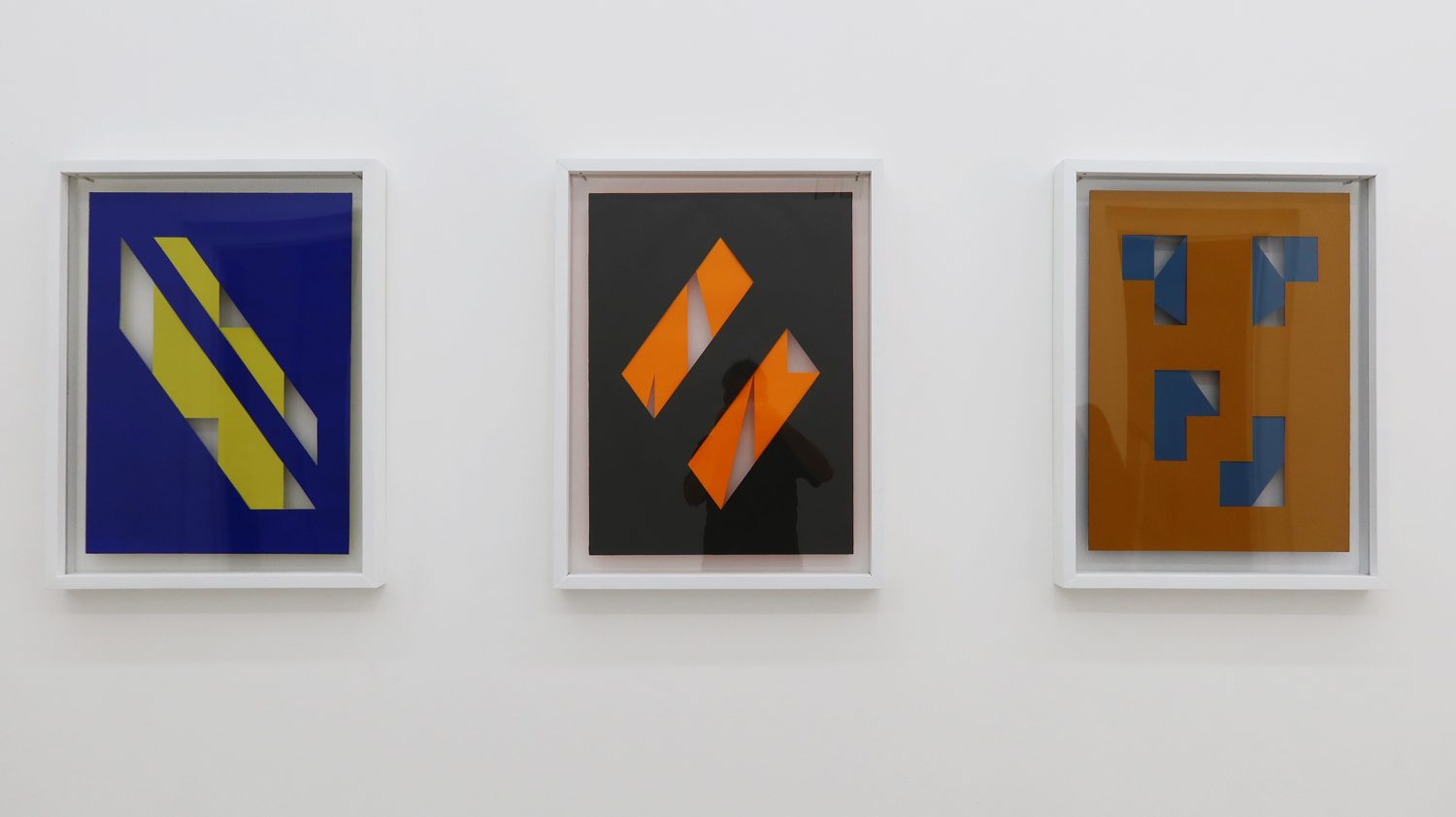
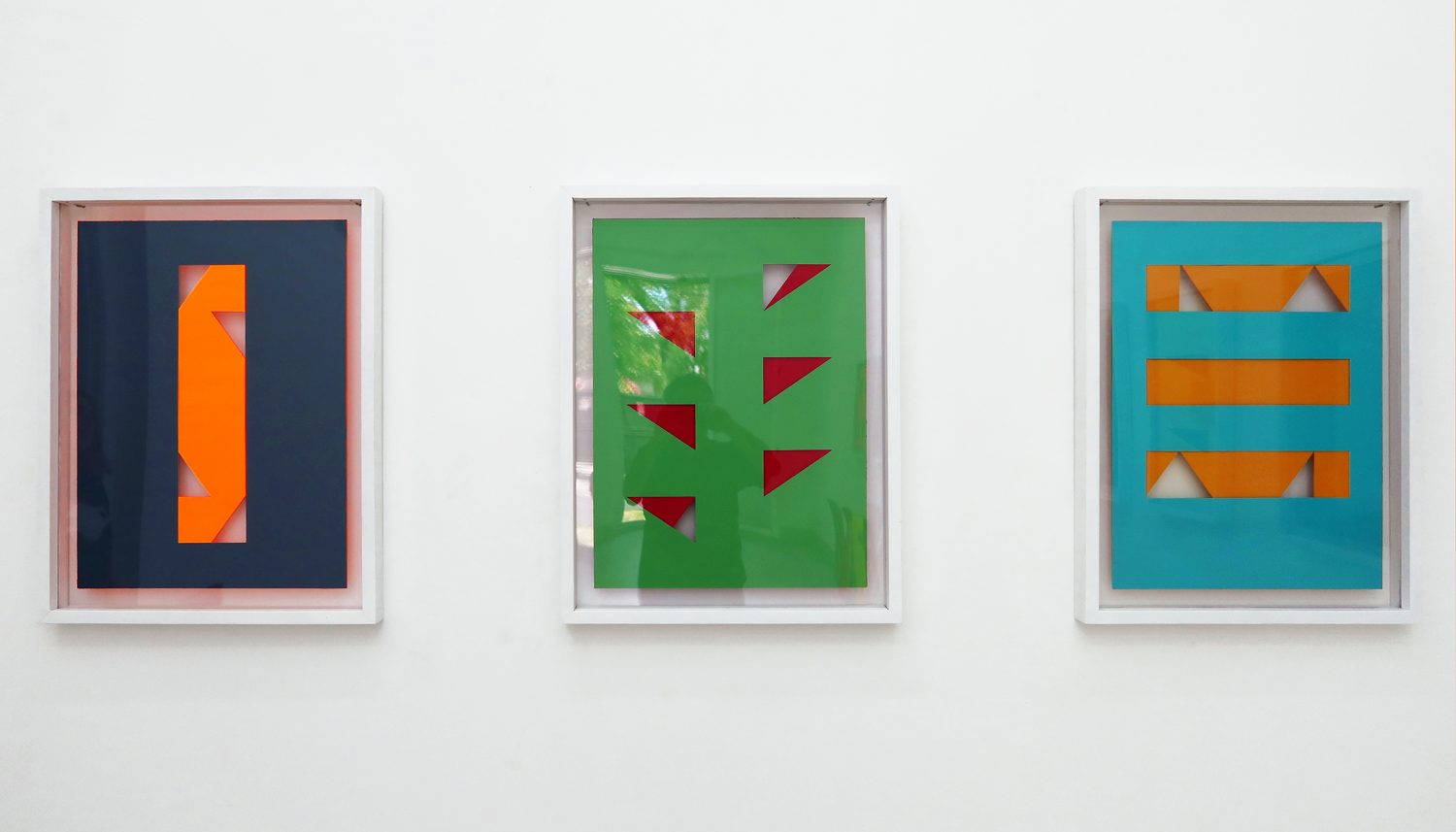
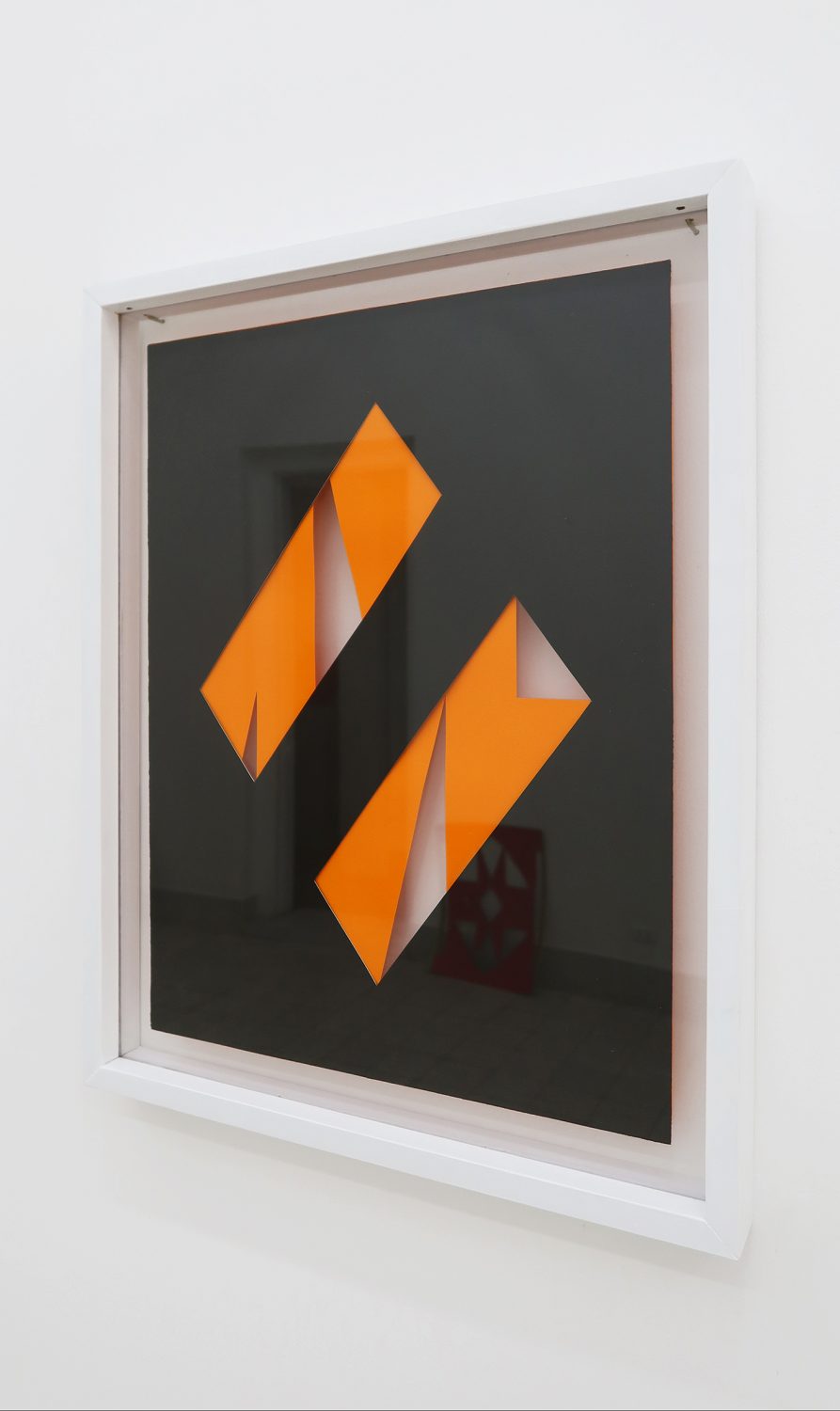
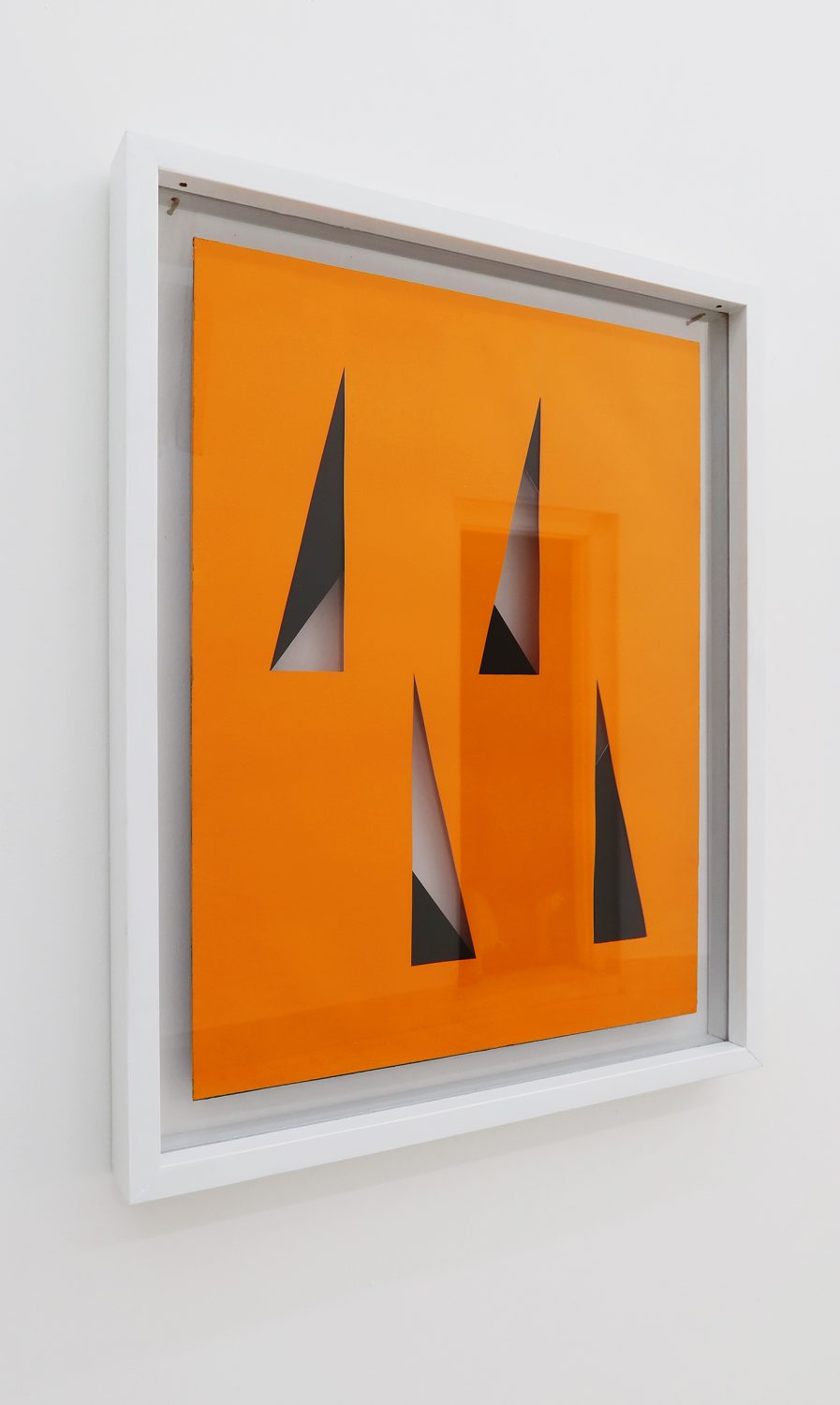
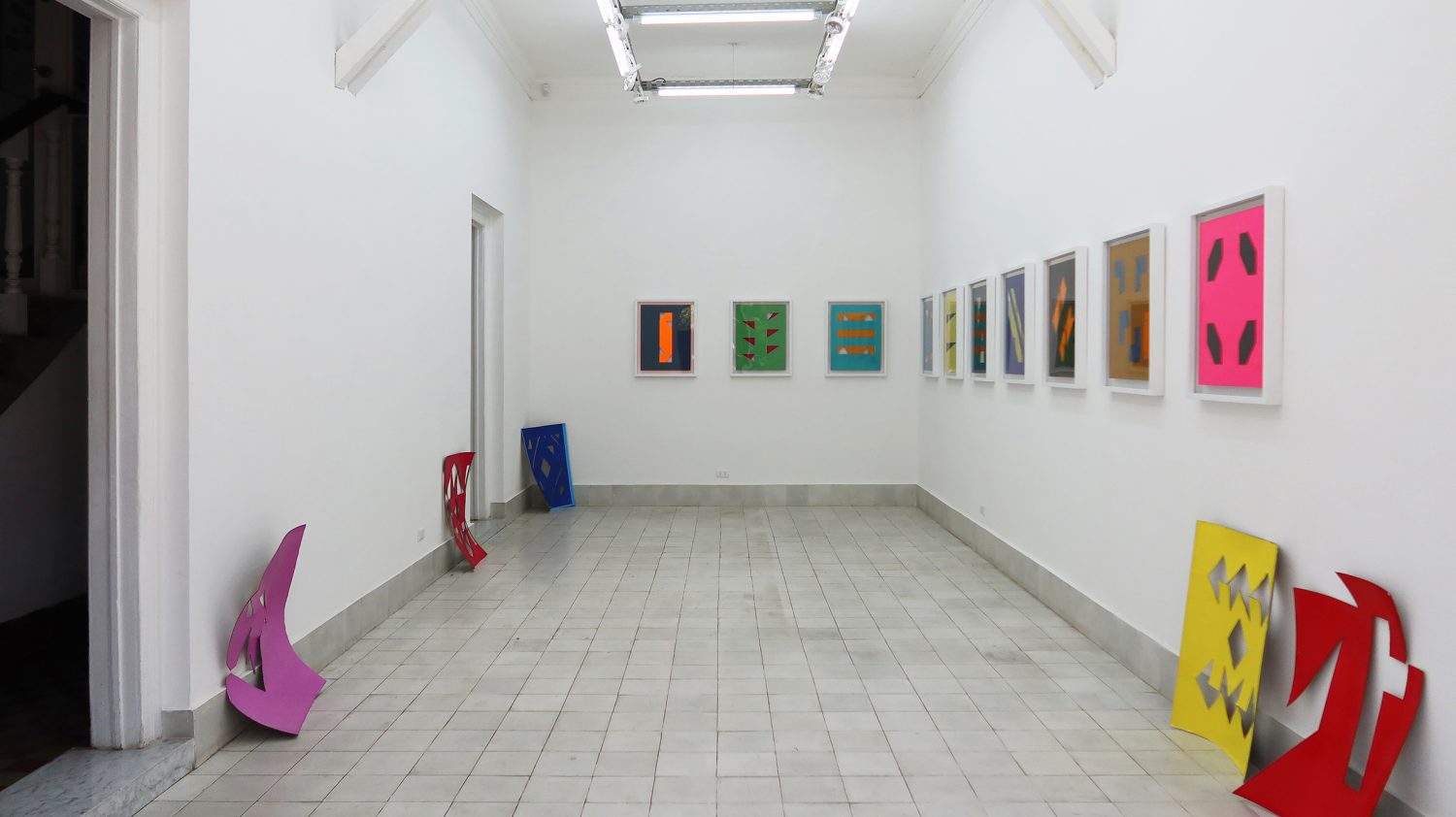
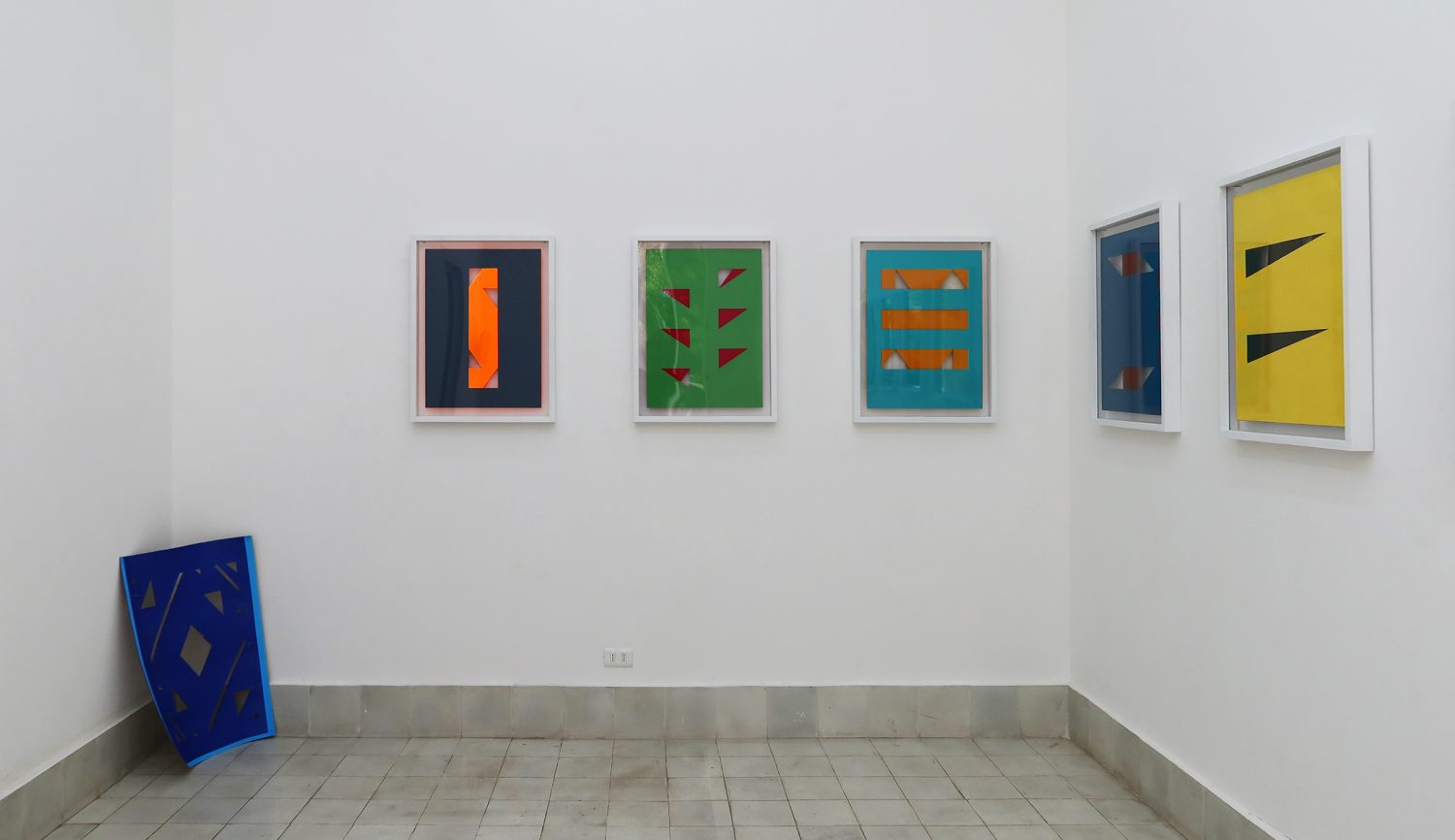
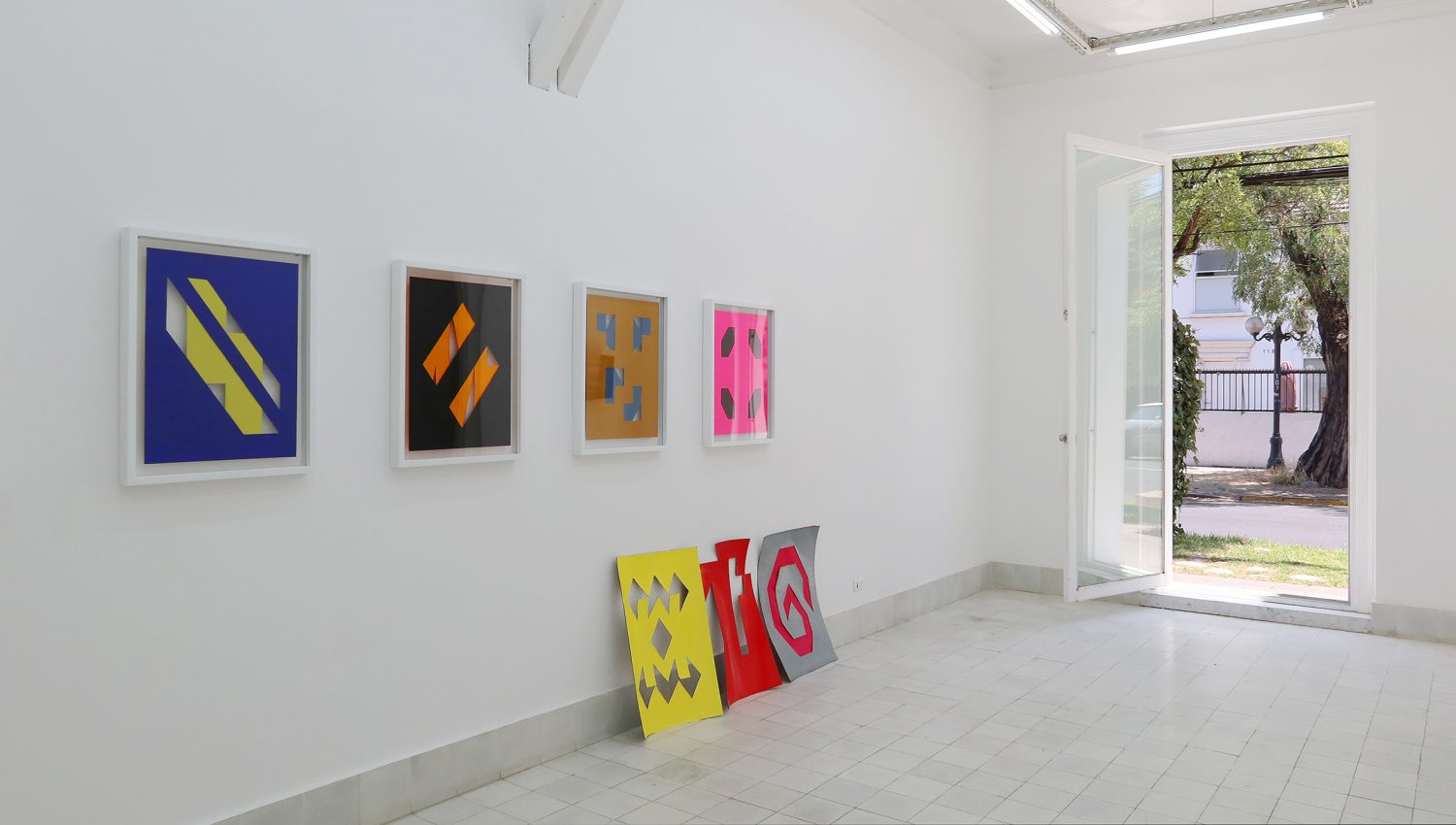
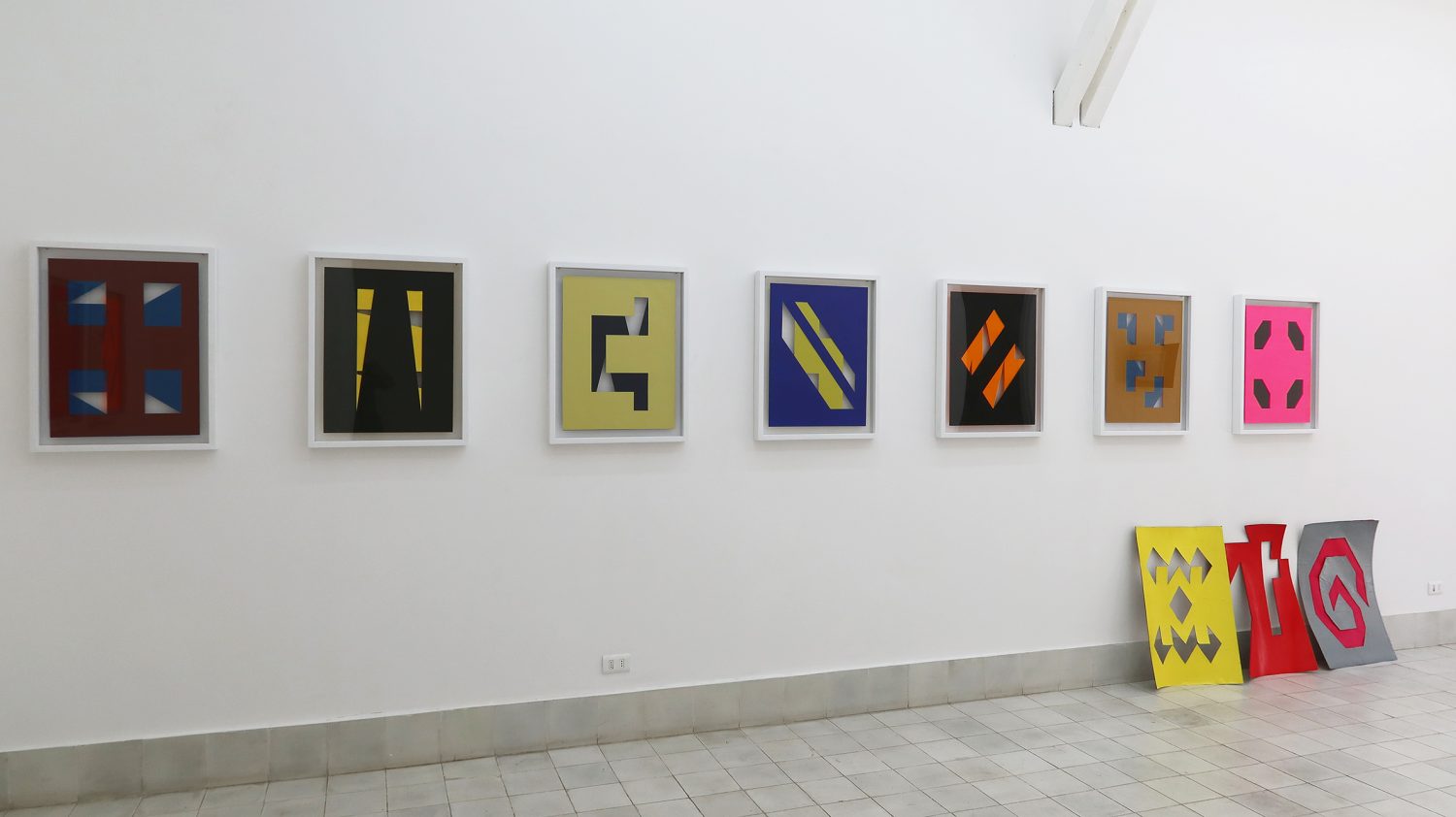
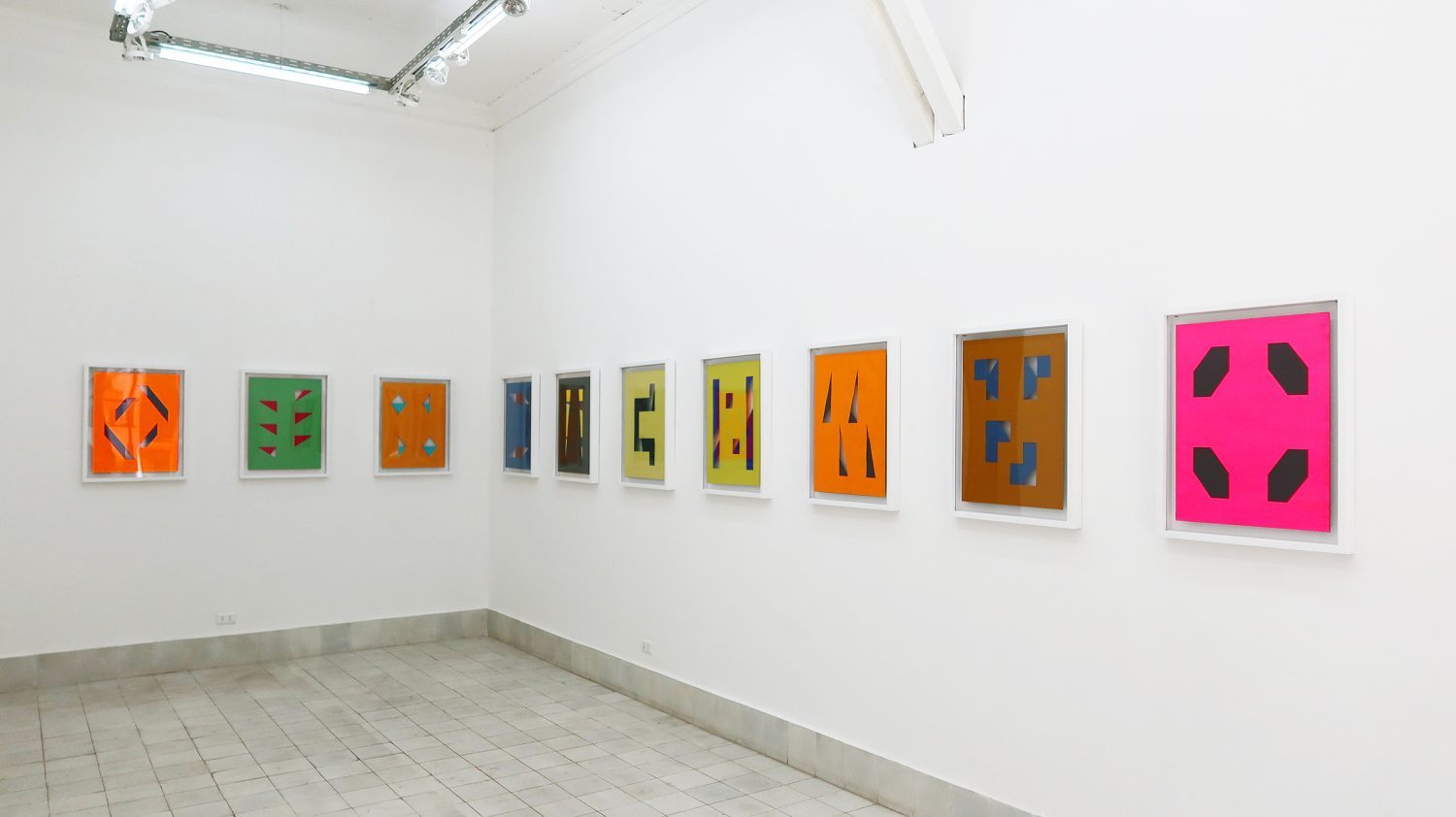
////////////////////////////////////////////////////////////////////////////////////////////////////////////
Text by Carolina Arévalo:
Te regalaré un abismo comes from a homonymous poem written by Roberto Bolaño, which Felipe Mujica (Santiago, 1974) quotes to title this new body of work developed during 2024 and that expands the artist’s conceptual polyphony. It is simultaneously open to the infinite interaction of the series exhibited at Galerie von Bartha in Basel (Switzerland), Proyectos Ultravioleta in Nottingham (UK), and Die Ecke in Santiago (Chile).
In these series, Mujica returns to his origins;, the elemental color, form, figure, and background, learned in Eduardo Vilches’ color seminar course at the school of art at the Catholic University in Chile during the nineties. The incidence of Albers’ color theory–by extension–in his work is manifested in a ludic proposal, a game to experience the alternate relationships of color and figure. Here, the artist proposes a series of artworks on hand-painted paper, with figures created in the exercise of a grid and geometric rules that he has been repeating and differentiating for more than twenty years. Each work, then, is a geometric possibility in front of the same grid, becoming a method, a system, a game that is re-invented, re-created, re-limited with different rules in each series. The game implies a certain order, a structure, limits for the creative exercise, but instead of restricting, knowing the rules of the game gives a space of freedom.
In Te regalaré un abismo, that possibility is translated into cut figures, empty figures–window figures, which give the sensation of openness that something could come through the window. The artworks confront each other and overlap, creating a polyphony of variations and possibilities, and thus, creating new identities. Visual glossolalia, a system of incomprehensible but relational glyphs. Each work does not seek a definitive centrality or position but explores a field of possibilities where form, color, saturation, and light, generally intense and vibrant, differentiate and dialogue. Repetition here does not imply copying or duplication, but an opening, polysemic potentialities. Each artwork accounts for this infinite difference –and repetition, as proposed by Gilles Deleuze. In this sense, the grid Mujica uses, far from being a fixed and static framework, operates as a Deleuzian rhizome, a system that allows infinite connections and reconfigurations. Although the set of features of each unit gives it an identity, by overlapping, the intersection of both units creates a new identity that does not erase or cancel each unit that integrates it. From a post-structuralist aperture, the works suggest the absence and the presence simultaneously, generating a play of meanings that transcends the surface of the pictorialwork; what Jacques Derrida proposed in 1967 as différance, a notion that underlines the coexistence of absence and presence in the production of meaning. The game addresses the infinite as well as the void –or the abyss, literally and metaphorically. Bolaño continues:
“I’ll give you an abyss (she said).
but in such a subtle way that you will only perceive it
when many years have passed
and you are far away from Mexico and from me.”
In the overlapping of Mujica’s works, there is a ‘between’ in becoming, a space of difference and possibility, where identities are neither fixed nor static, but emerge in the tension between the internal and the external, between solid and empty.
Exhibited in the offices of Galerie von Bartha, 180 works on 300 gr. watercolor paper, A4 size, painted on one side with acrylic paint and gouache, with extracted figures that are individual solutions to the same grid of eight-by-eight sections per side. In addition, the artist installed three Curtains that follow the same principle, they overlap and in the intersecting void, reframe reality. The art interacts with the space, and not only the artworks are re-signified, but also the context is re-signified. It reframes reality, it gives the possibility for something new to emerge in what it enables to be seen.
The second group consists of 20 works on the same paper that will be exhibited in February 2025 by Ultraviolet Projects in collaboration with Beam Editions (Gallery Bookshop) in Nottingham UK. These works are larger (61 x 46 cm.) and this time painted on both sides, erasing the distinctions of verso and verso, with gouache and acrylic, keeping the geometries cut in relation to the same grid.
For Die Ecke Arte Contemporáneo, Mujica exhibits a third group (of the same dimensions) along with a video and a collective happening with a student workshop to be held at Balmaceda 1215 Cultural Center. Here the play is open, the artist uses it to dialogue a few days before the vernissage, enabling the possibility of even new and infinite combinations. The game is re-signified, and rules are the agreement of a collective to carry out a series of actions in a delimited space and time. The game recovers the notion of non-seriousness, of losing time in the best of senses, time is dilated and is not necessarily productive, but it is a relational experience. It is the abstraction of a utopia, so it removes the oppressive connotation of rules, and exhibiting these, liberates them, not only for the collectivity of the agreements but also liberates them from the notion of inspiration in the pursuit of a relational experience. Mujica dialogues with the relational qualities of abstraction, in a continuous and collective creation process that opens a ground of immanence where identity and multiplicity coexist.
////////////////////////////////////////////////////////////////////////////////////////////////////////////
On January 9th, between 5 and 8 pm, I led a workshop that shared my work methodology, opening an isolated production experience to a collective and public aspect. In addition to being a collaborative exercise, the idea was to take “the work” out of the gallery space to insert it and make it dialogue in the public space. The workshop participants were mostly students, either out of High School or attending University, coursing art or design careers. On January 10th, the workshop participants visited the exhibition at Die Ecke Arte Contemporáneo. After a short guided tour, we took all the cardboard pieces to Plaza Julio Prado, a small neighborhood square and playground, where we experimented together, trying out different spatial arrangements and appropriations.
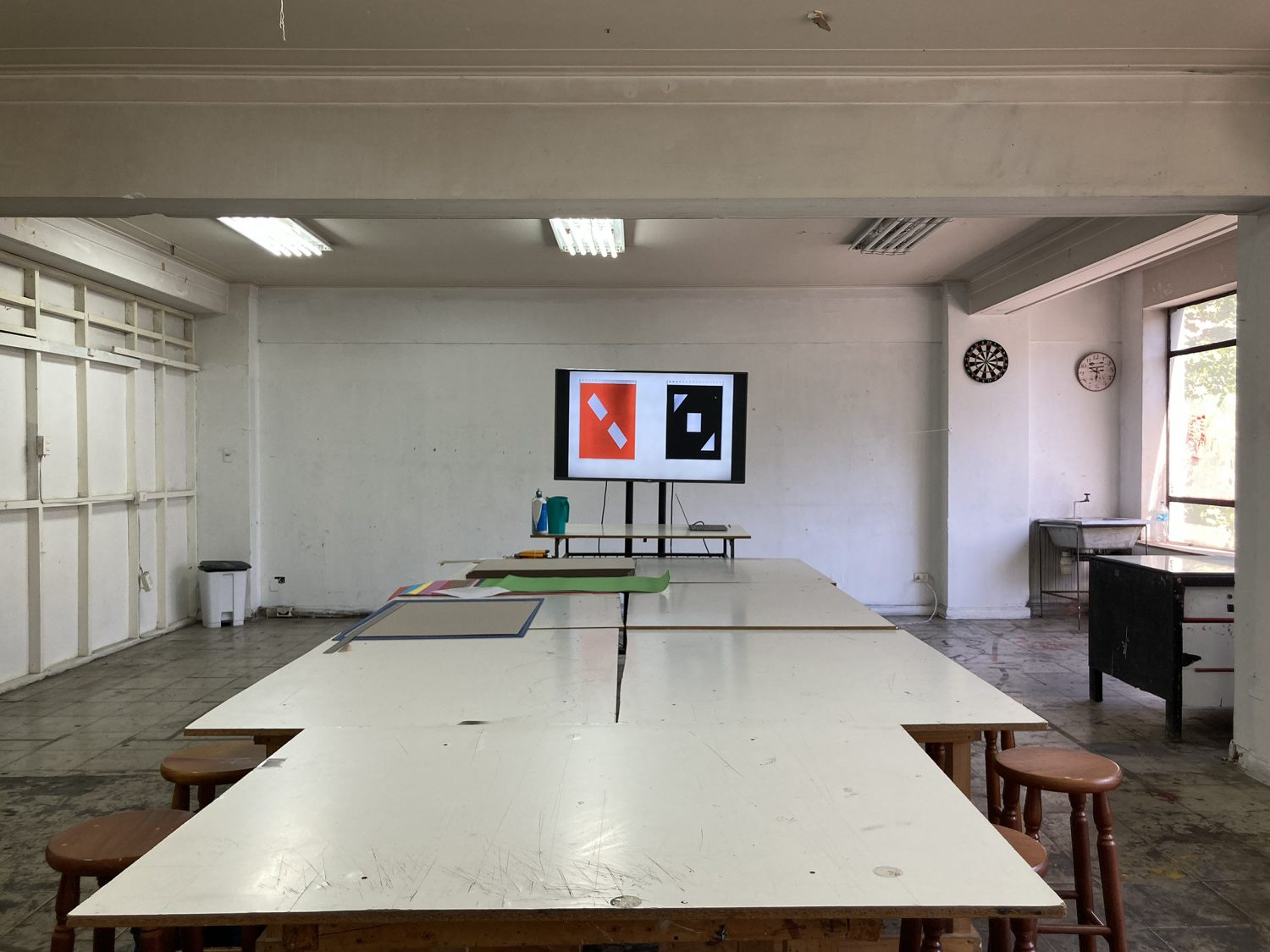
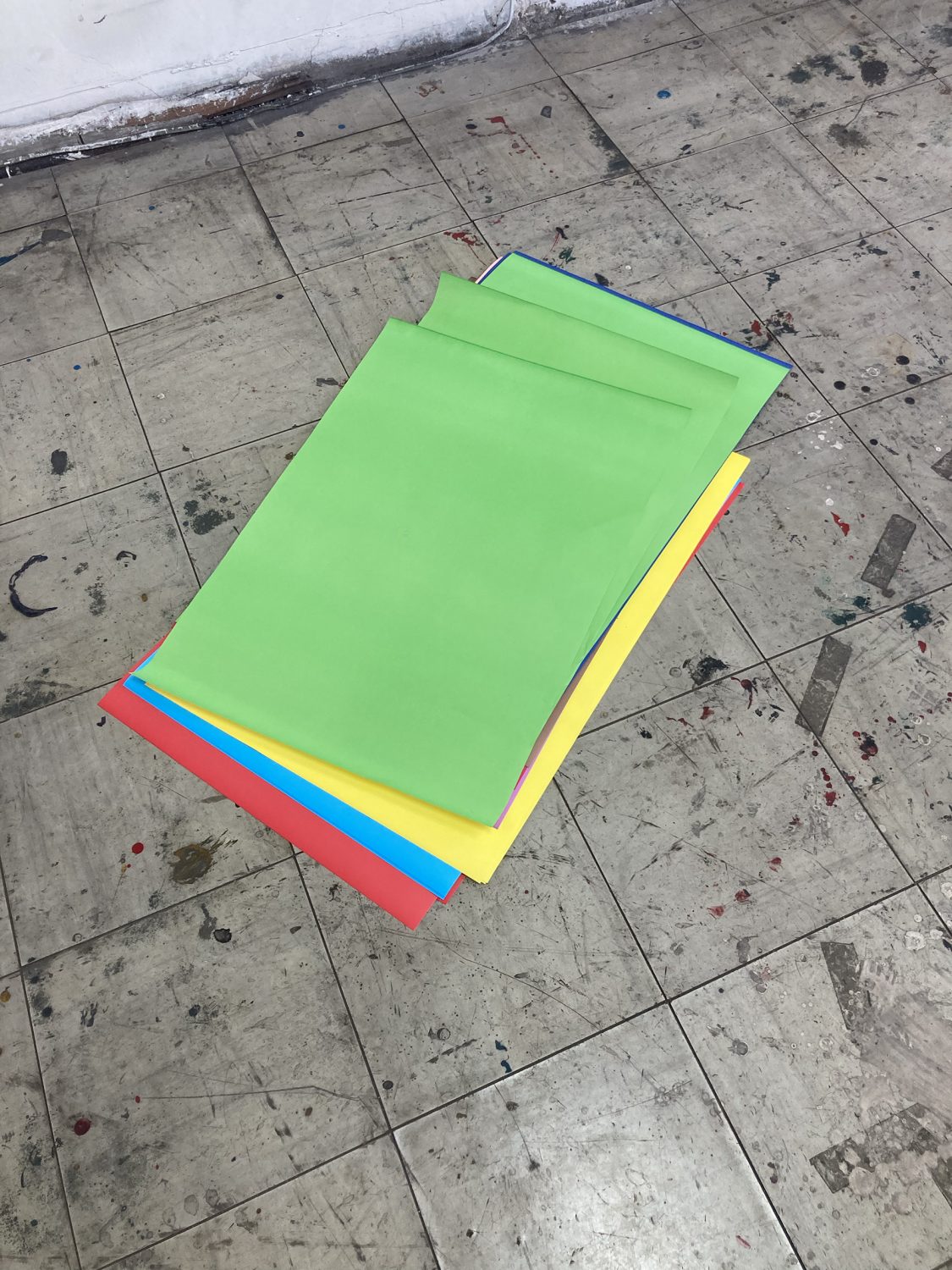
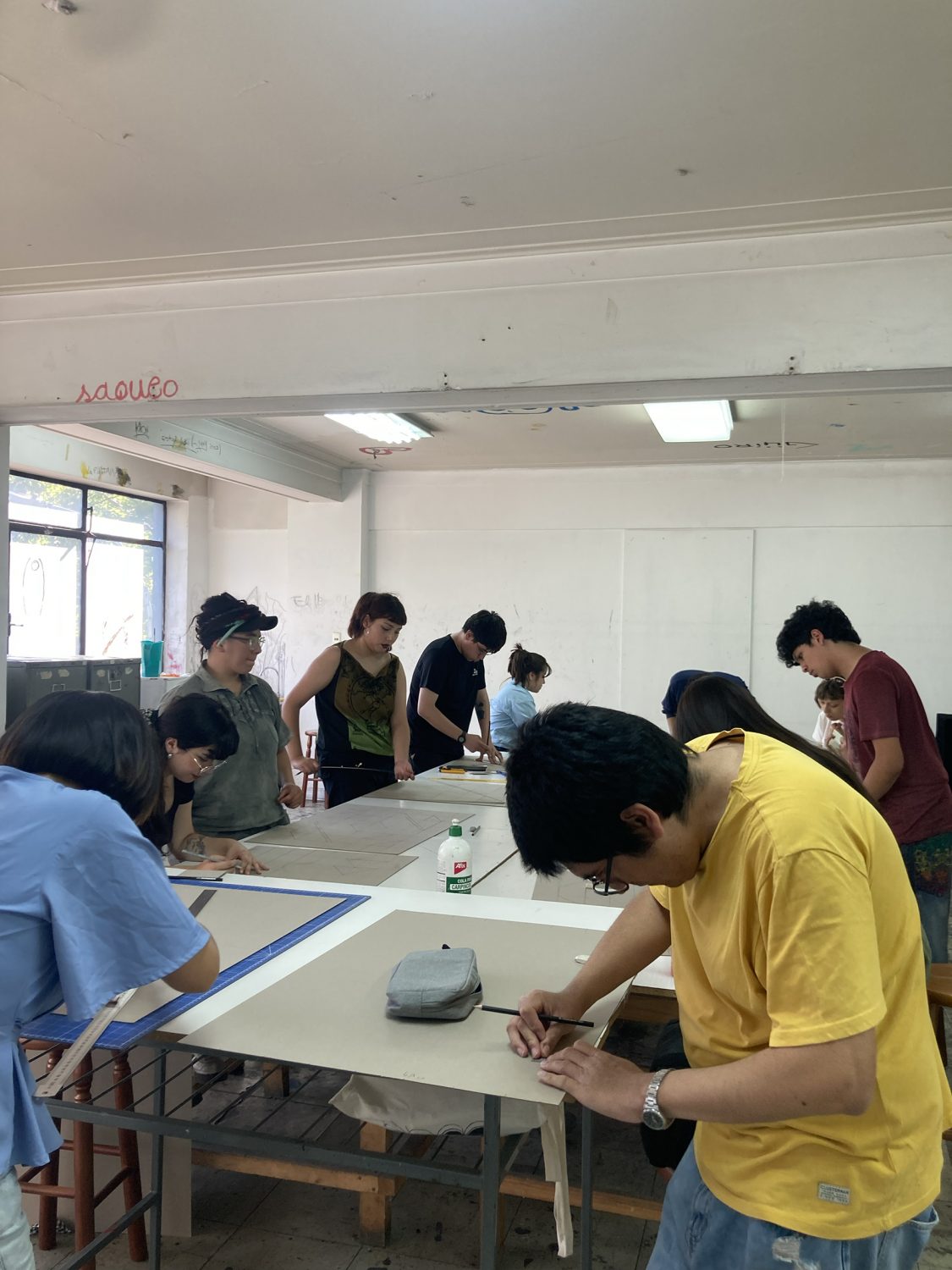
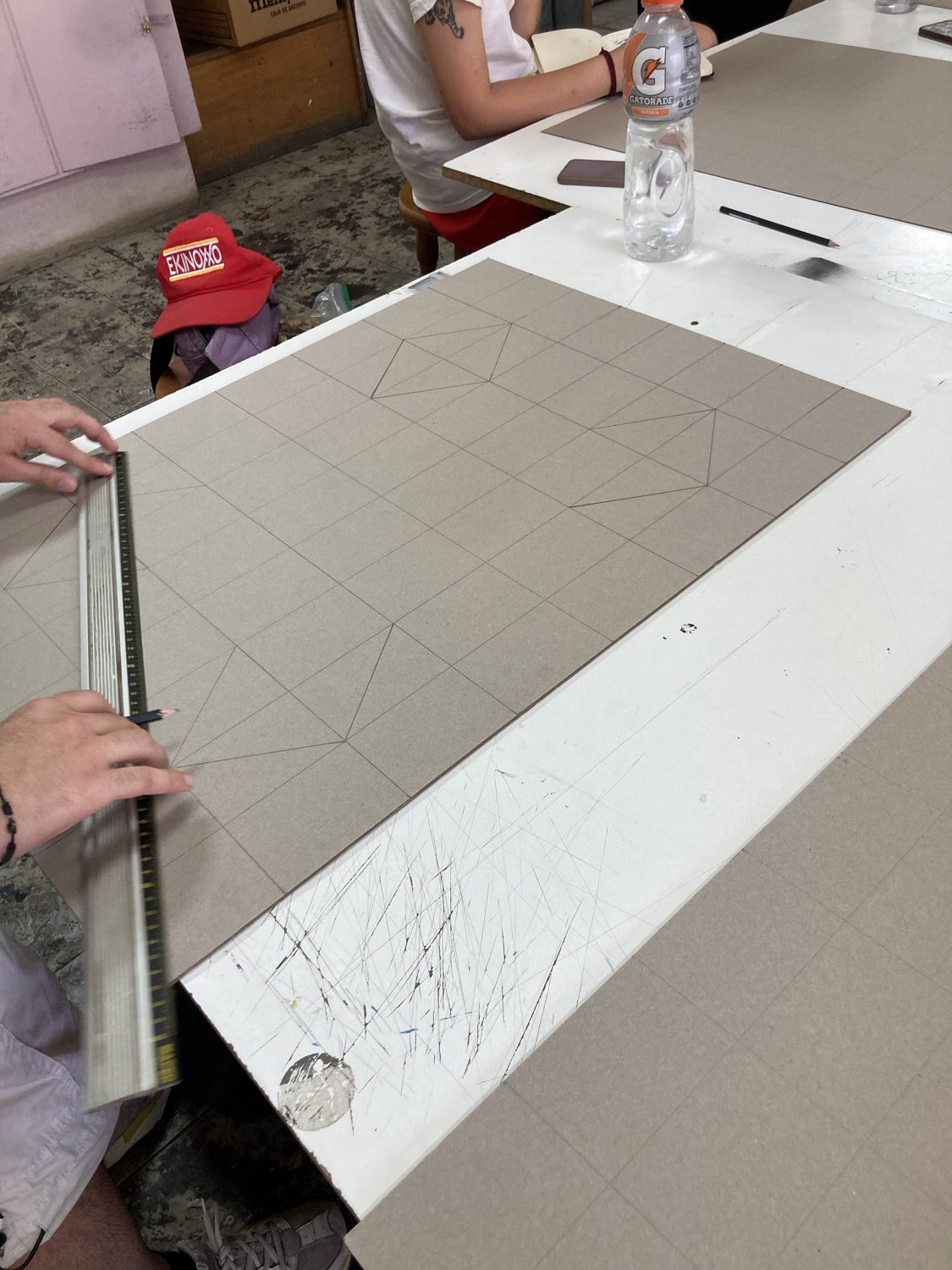
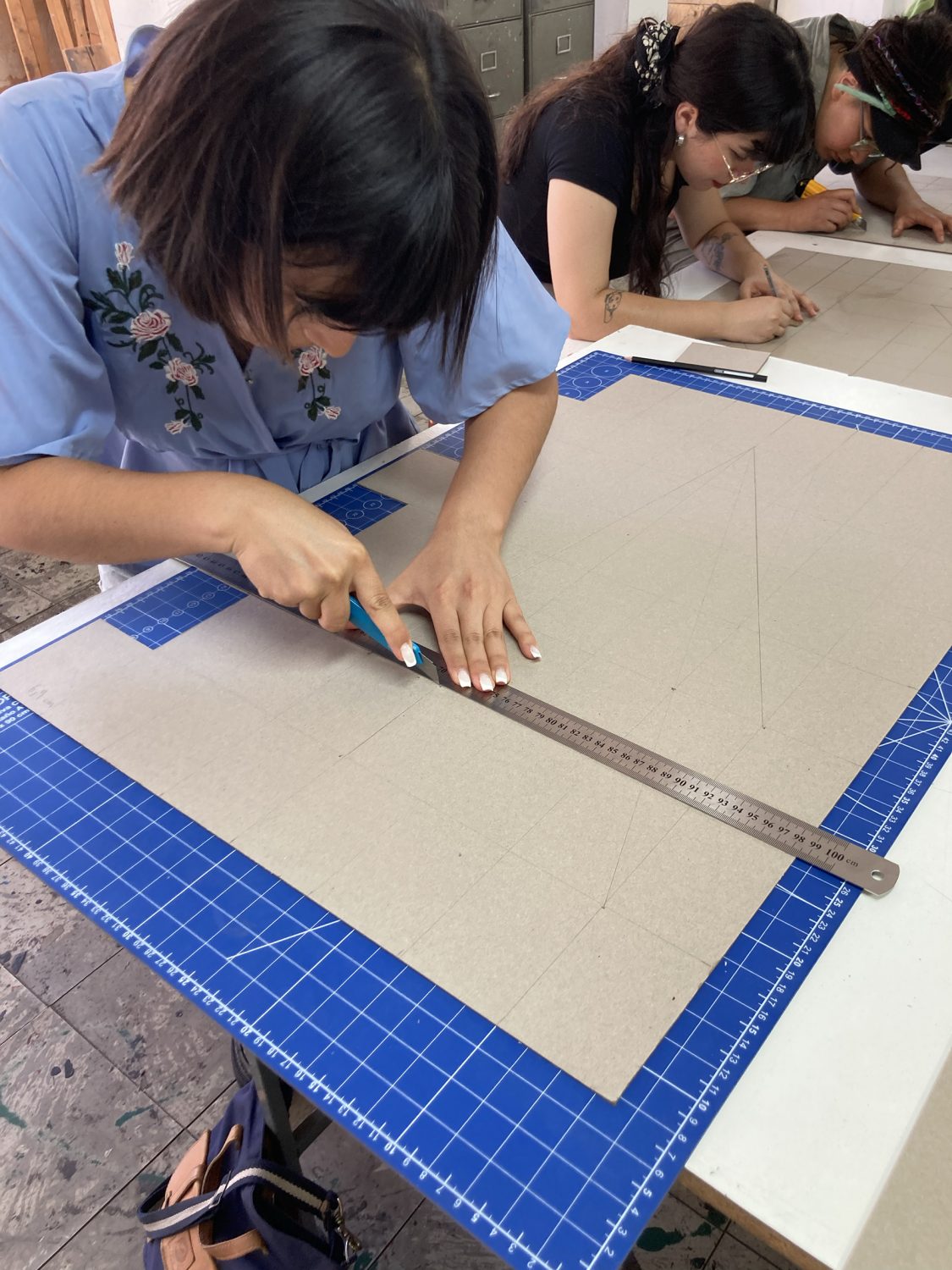
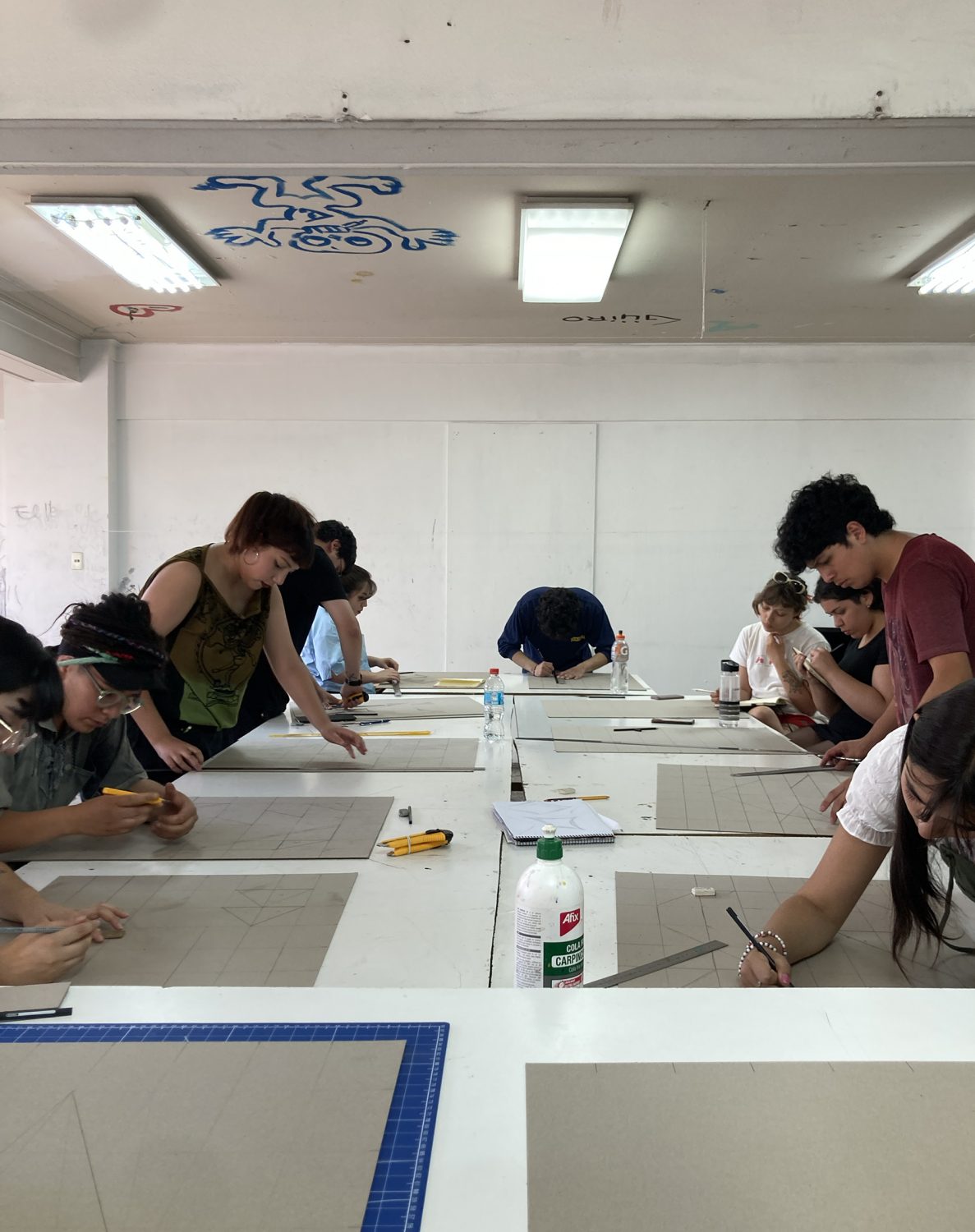
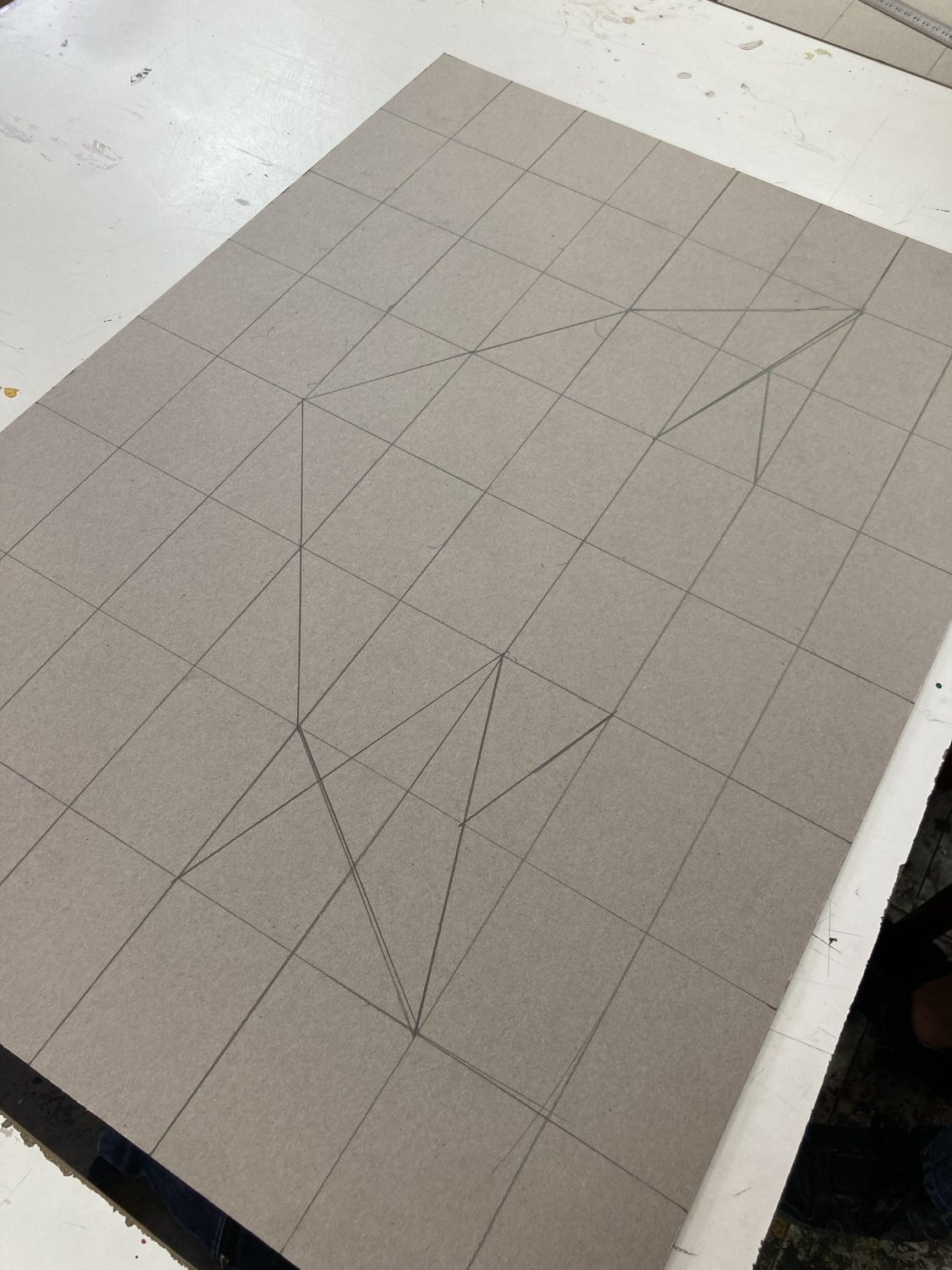
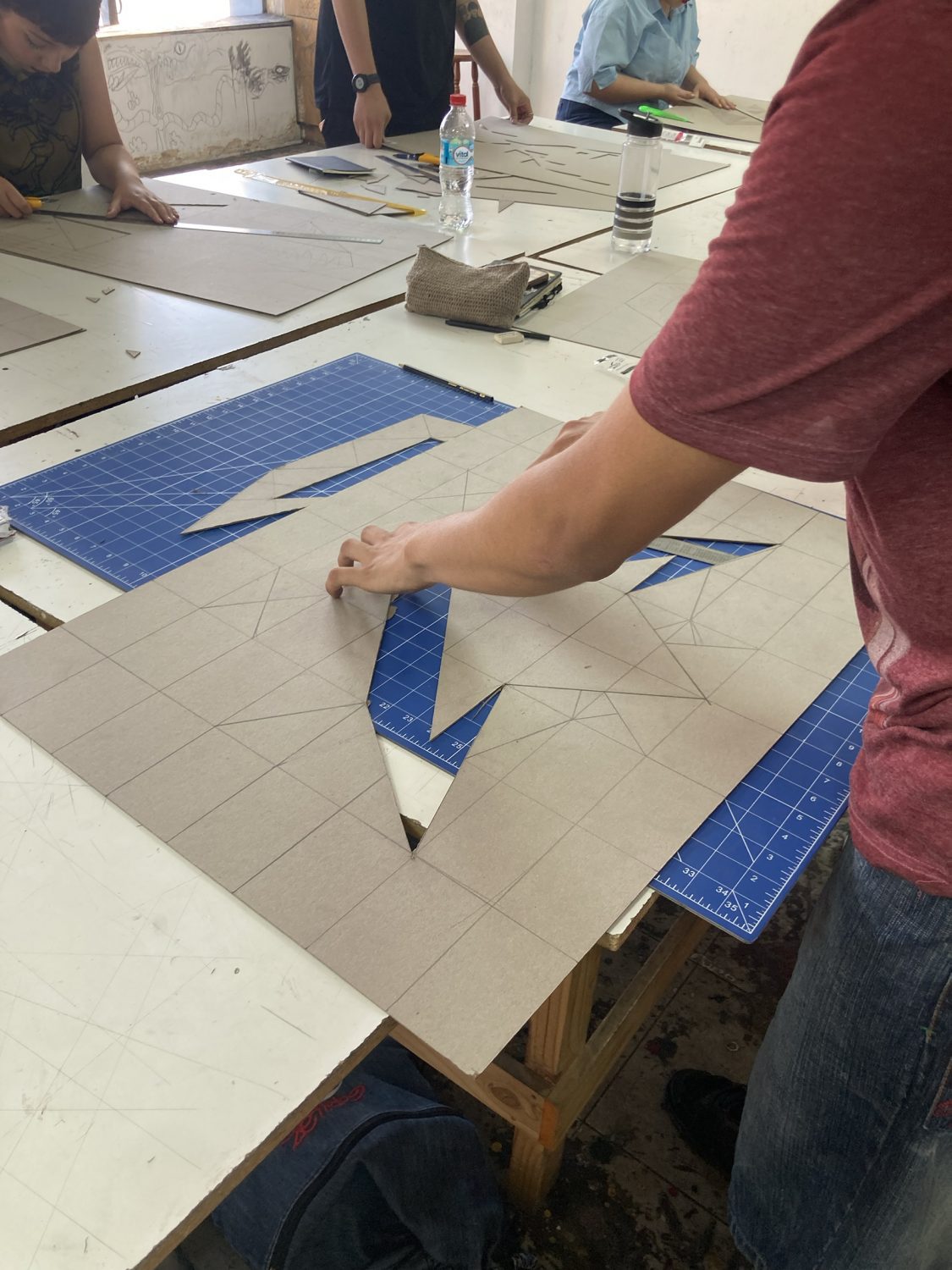
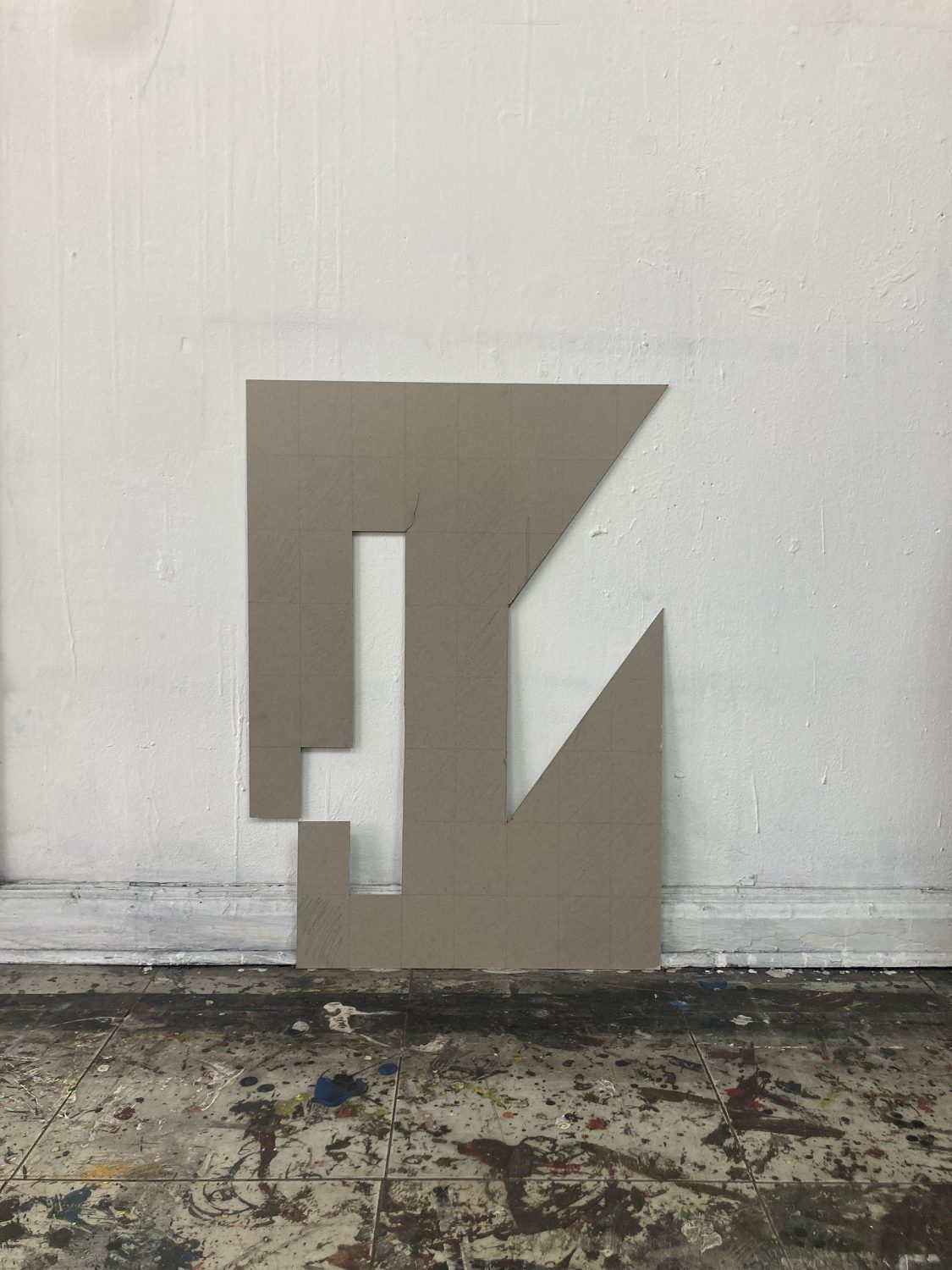
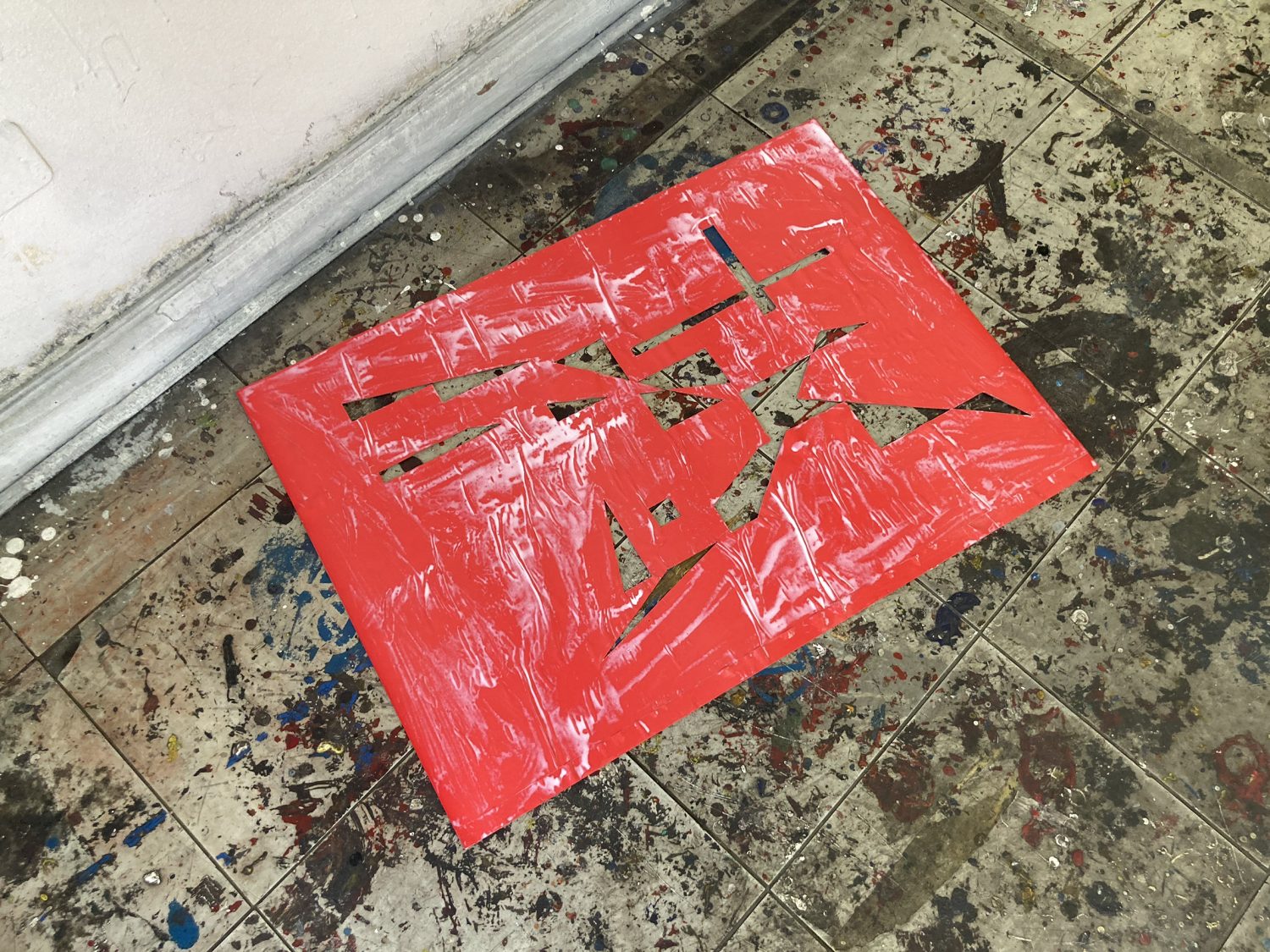
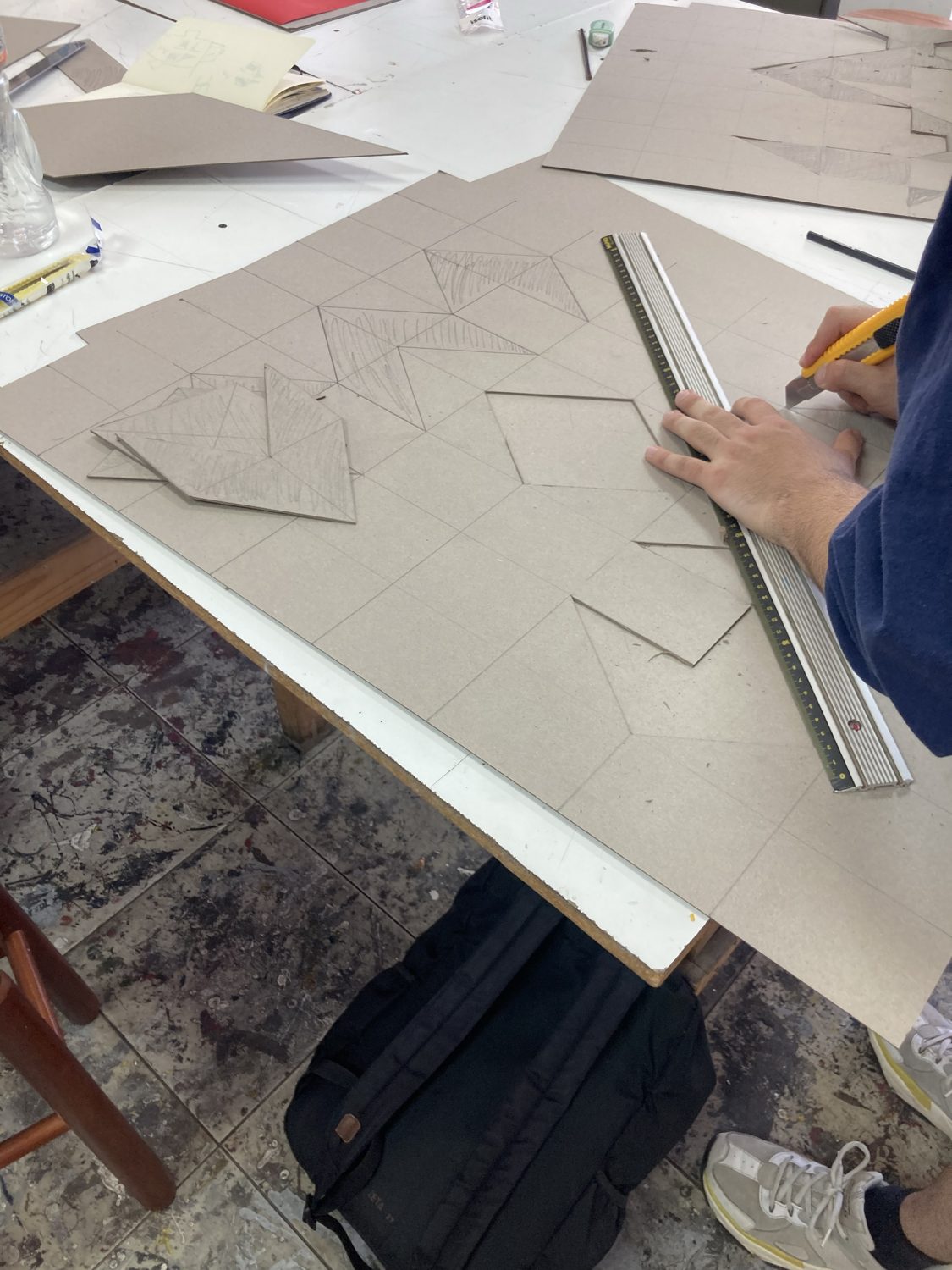

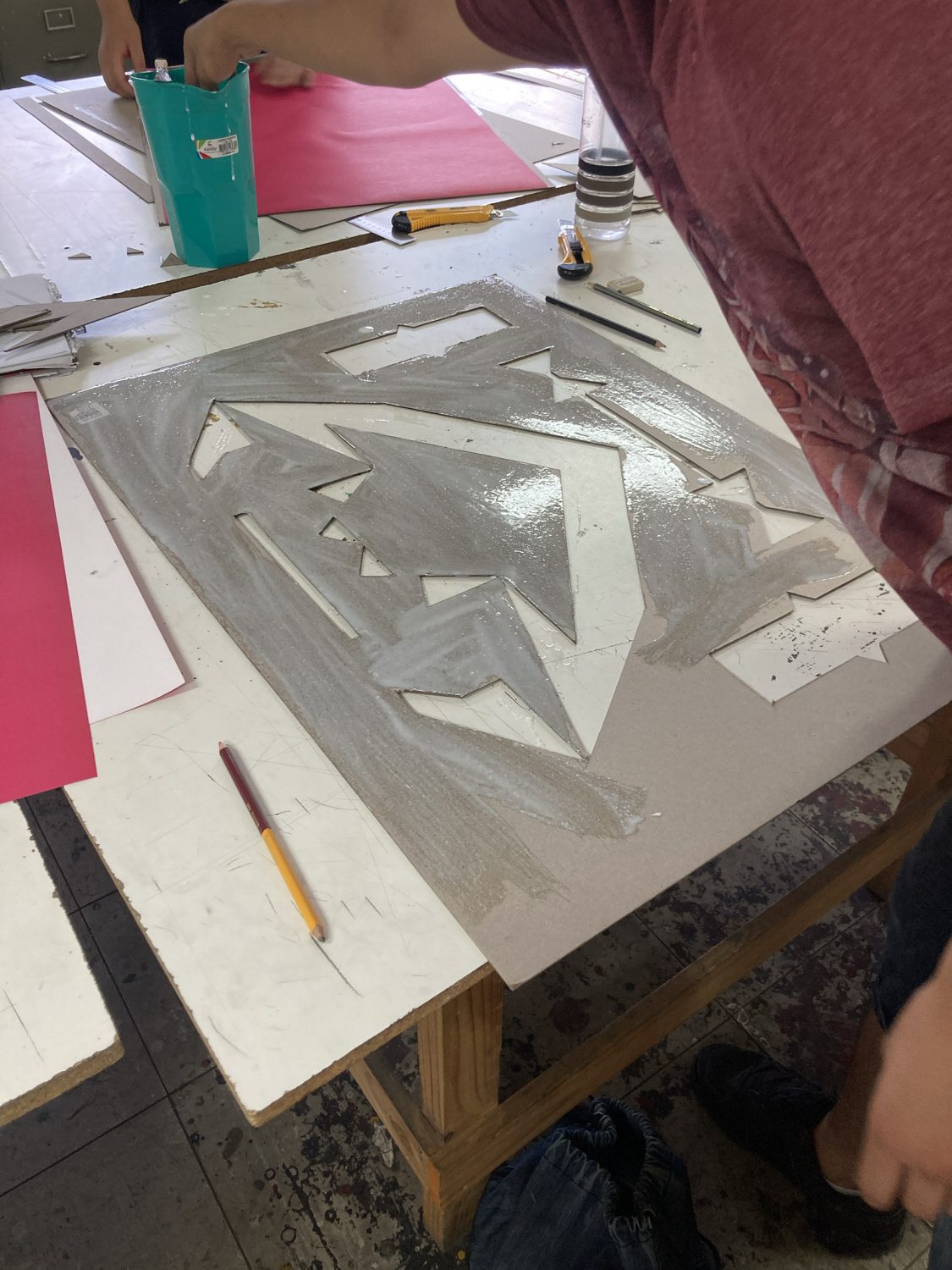
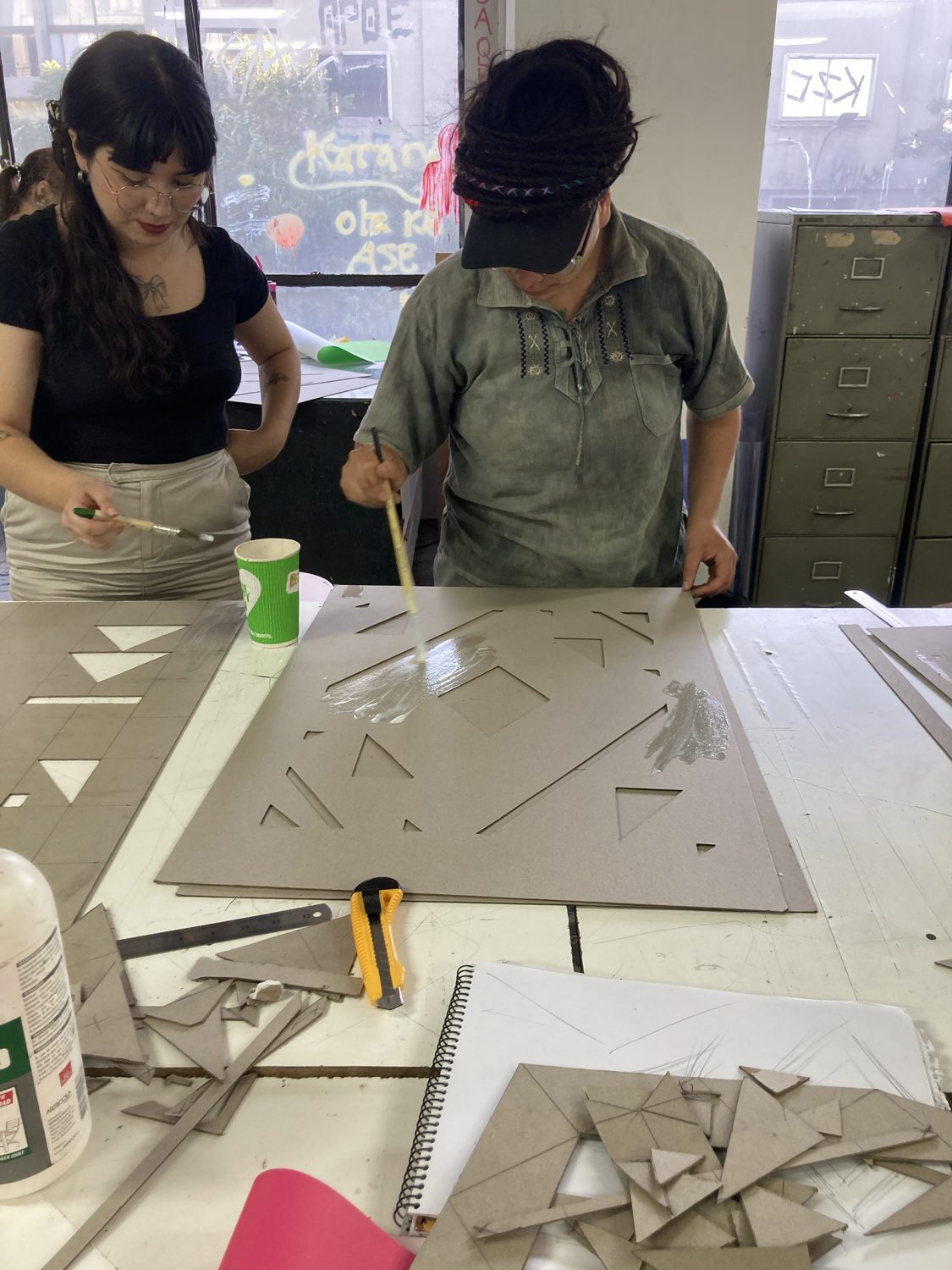
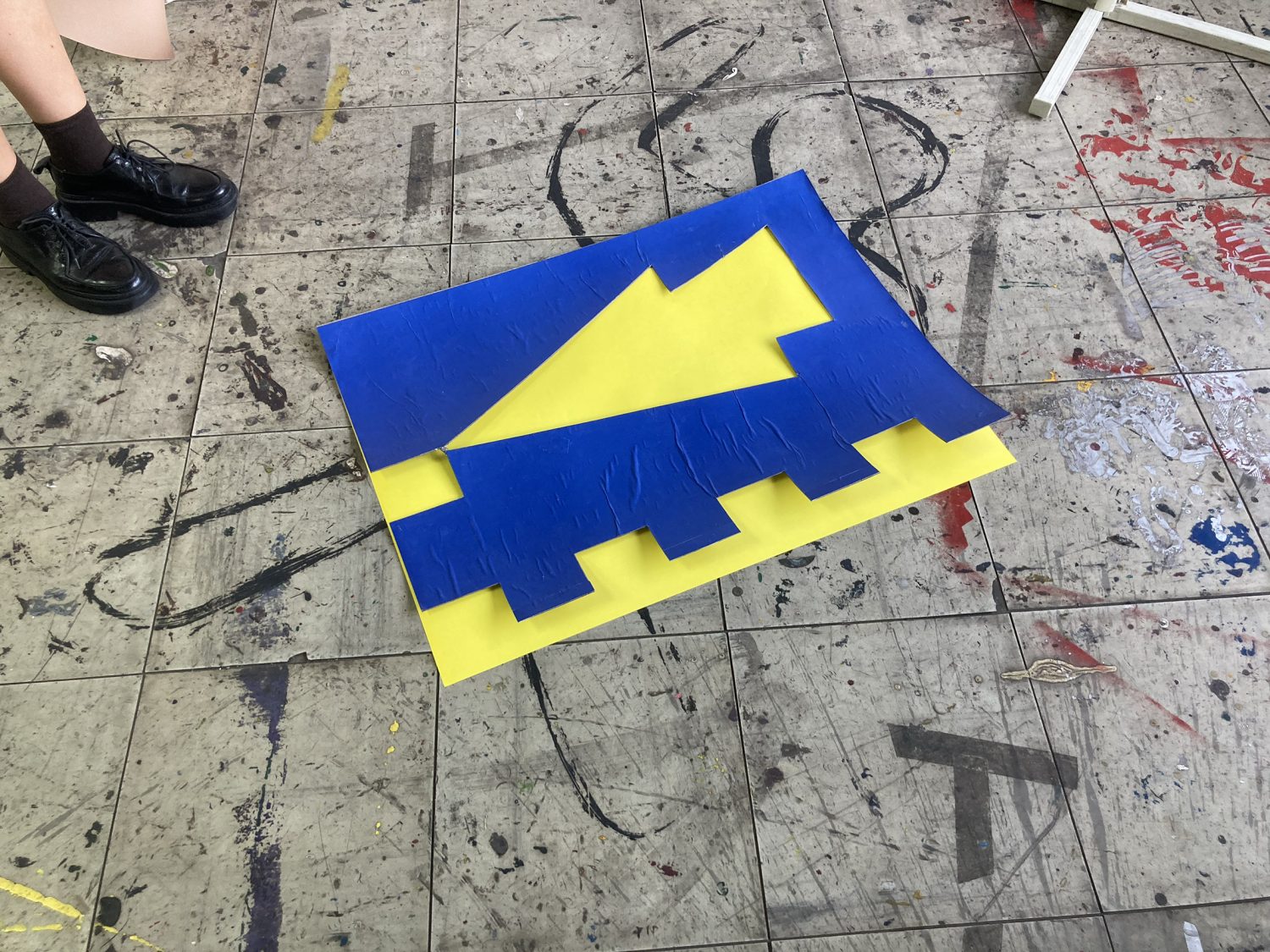

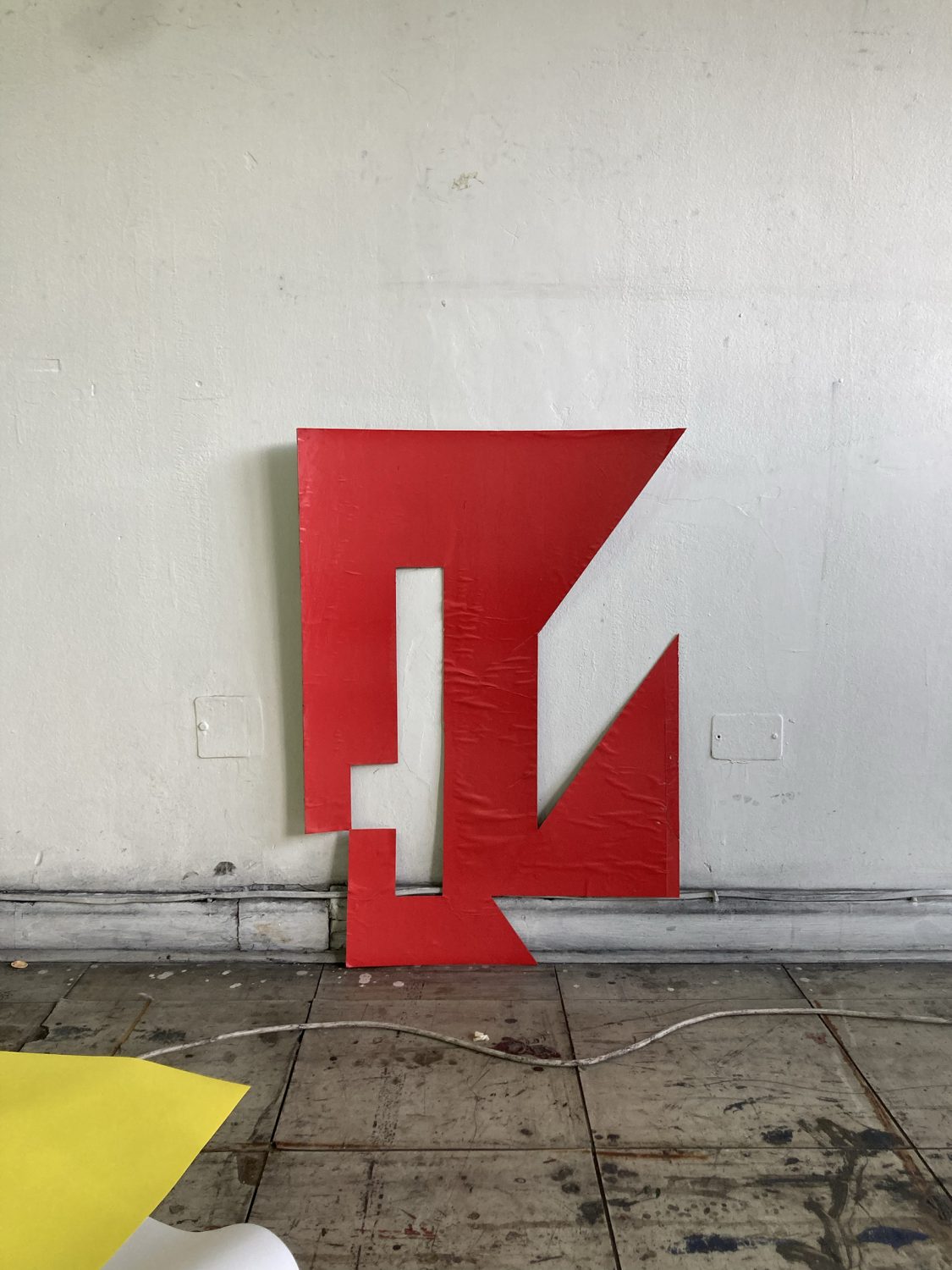
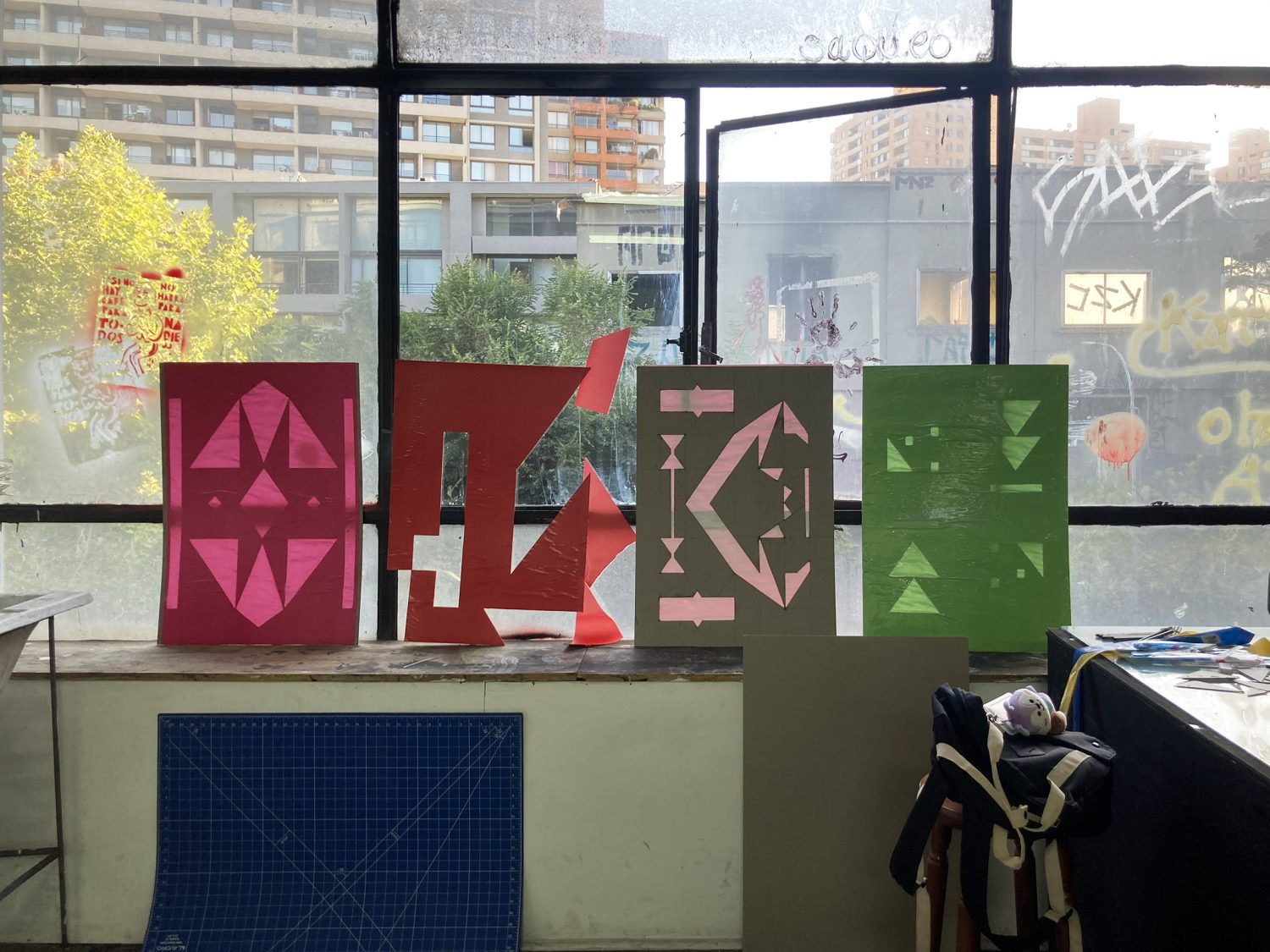
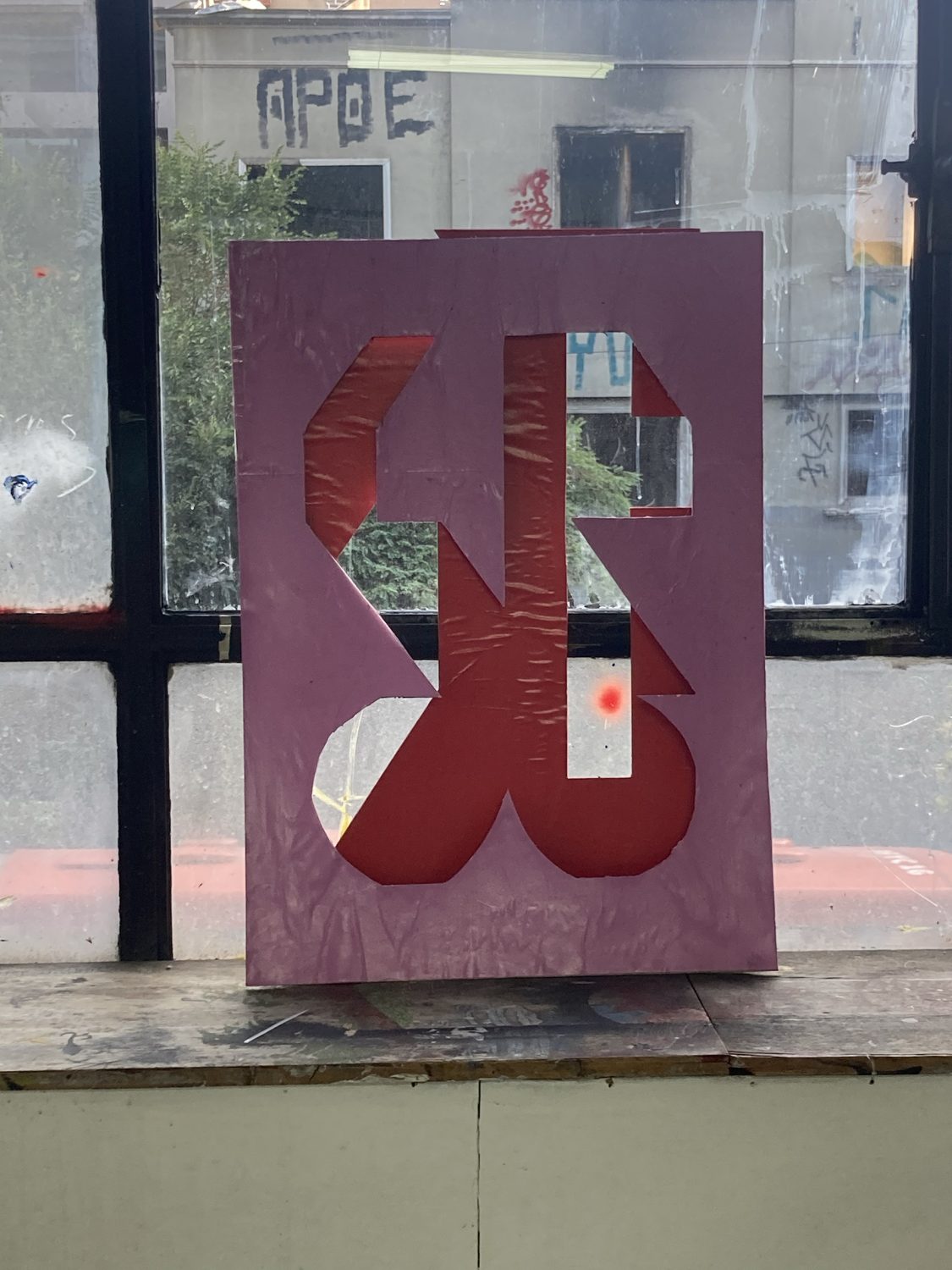
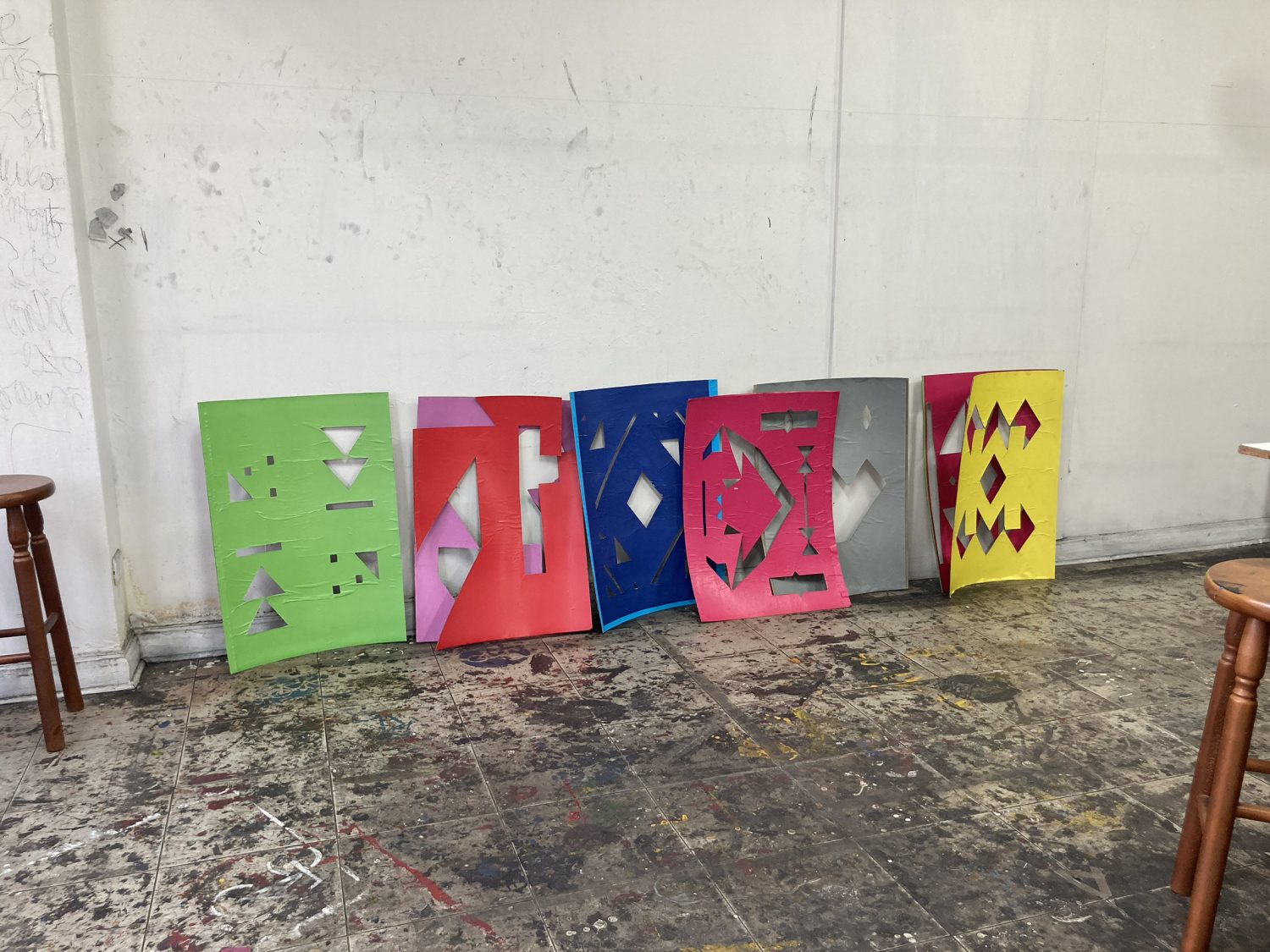
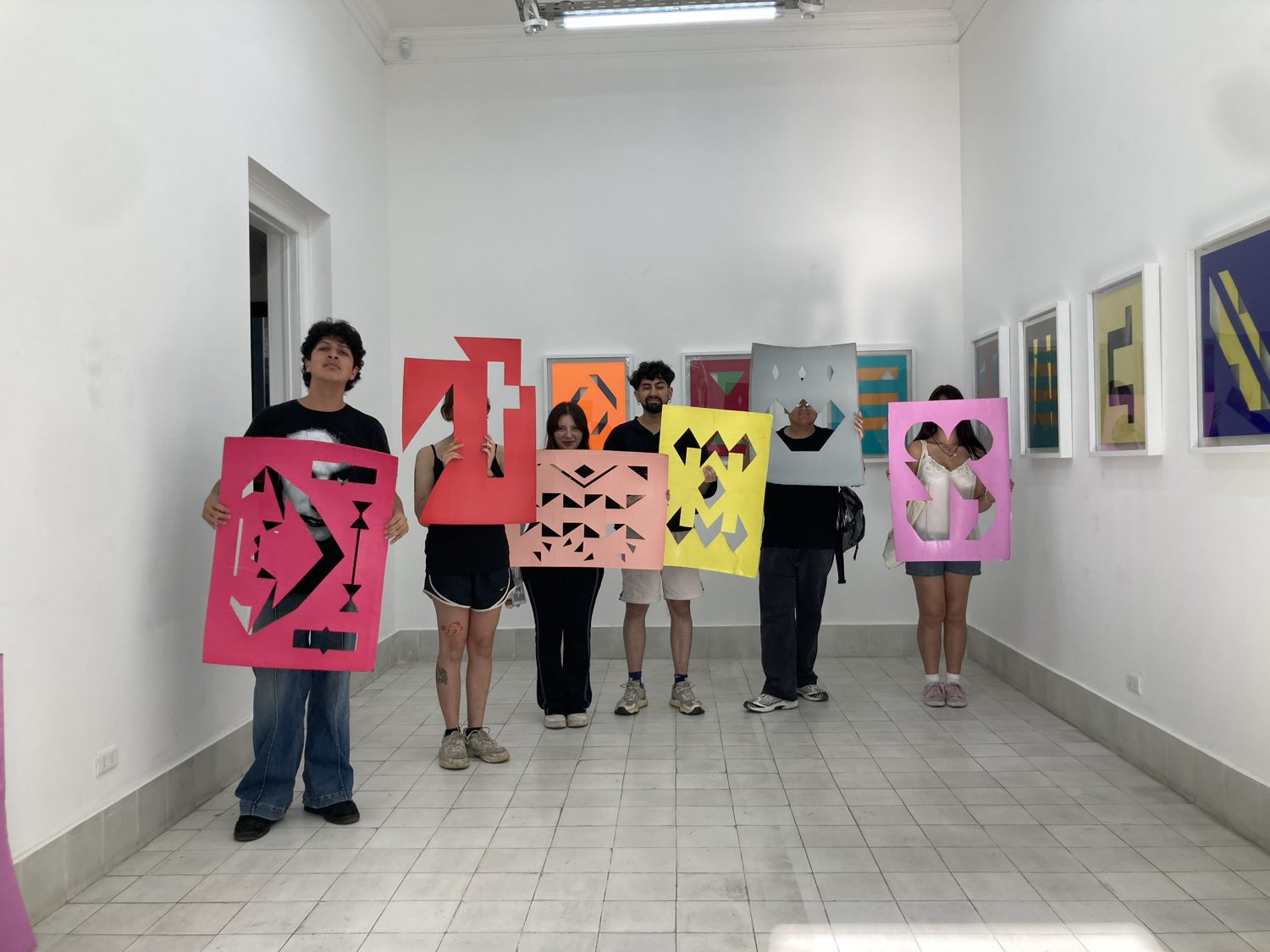
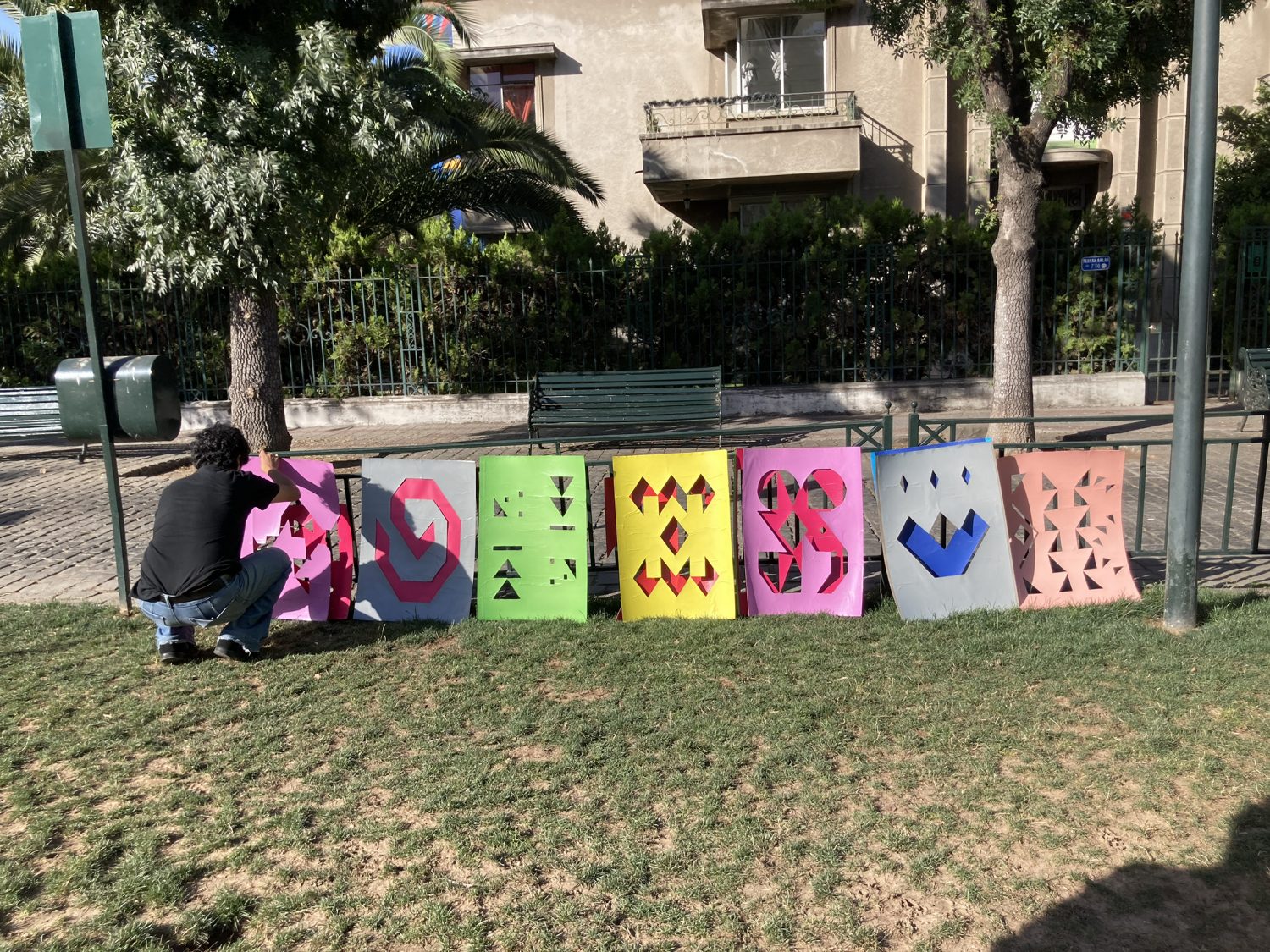
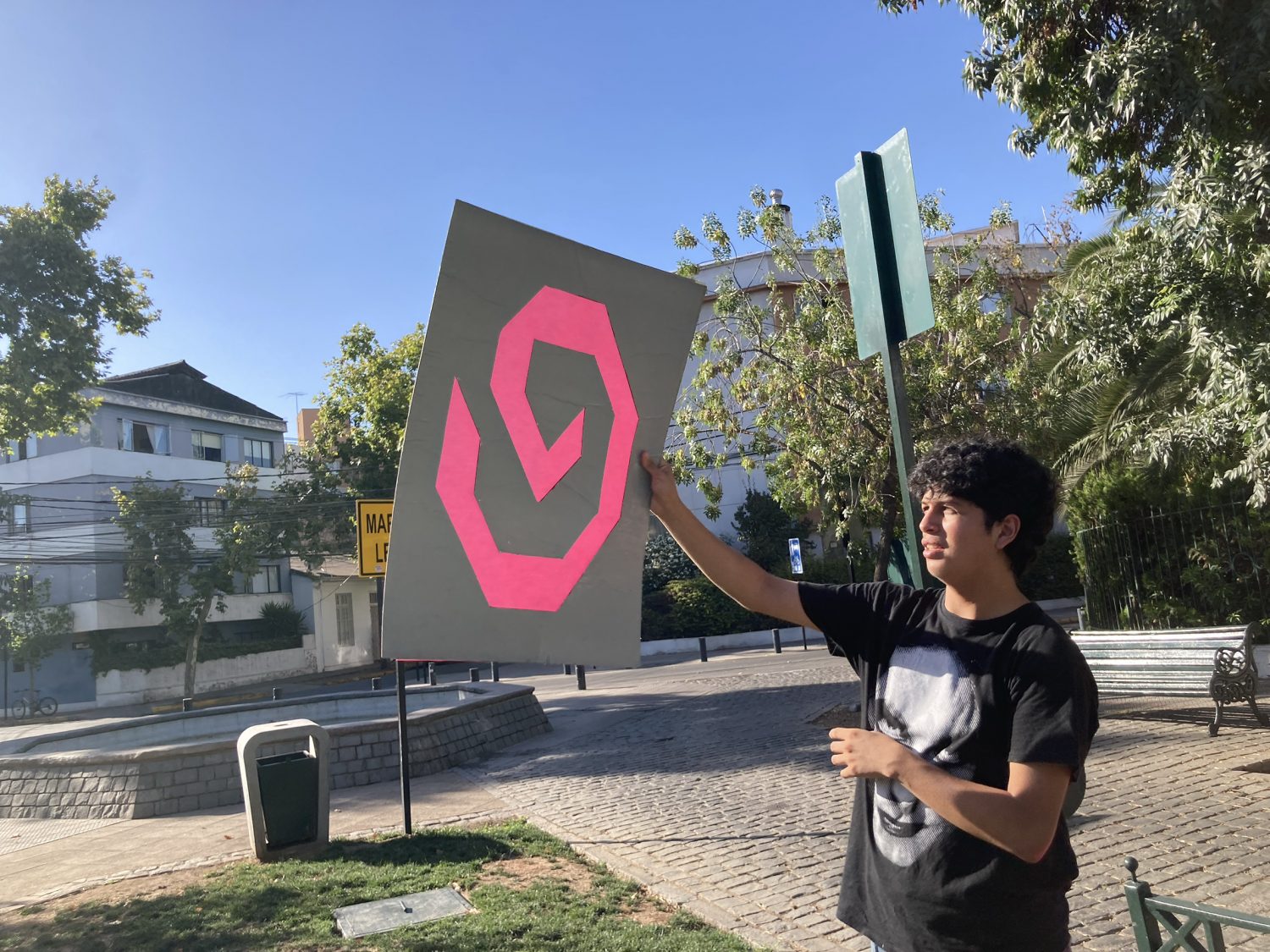
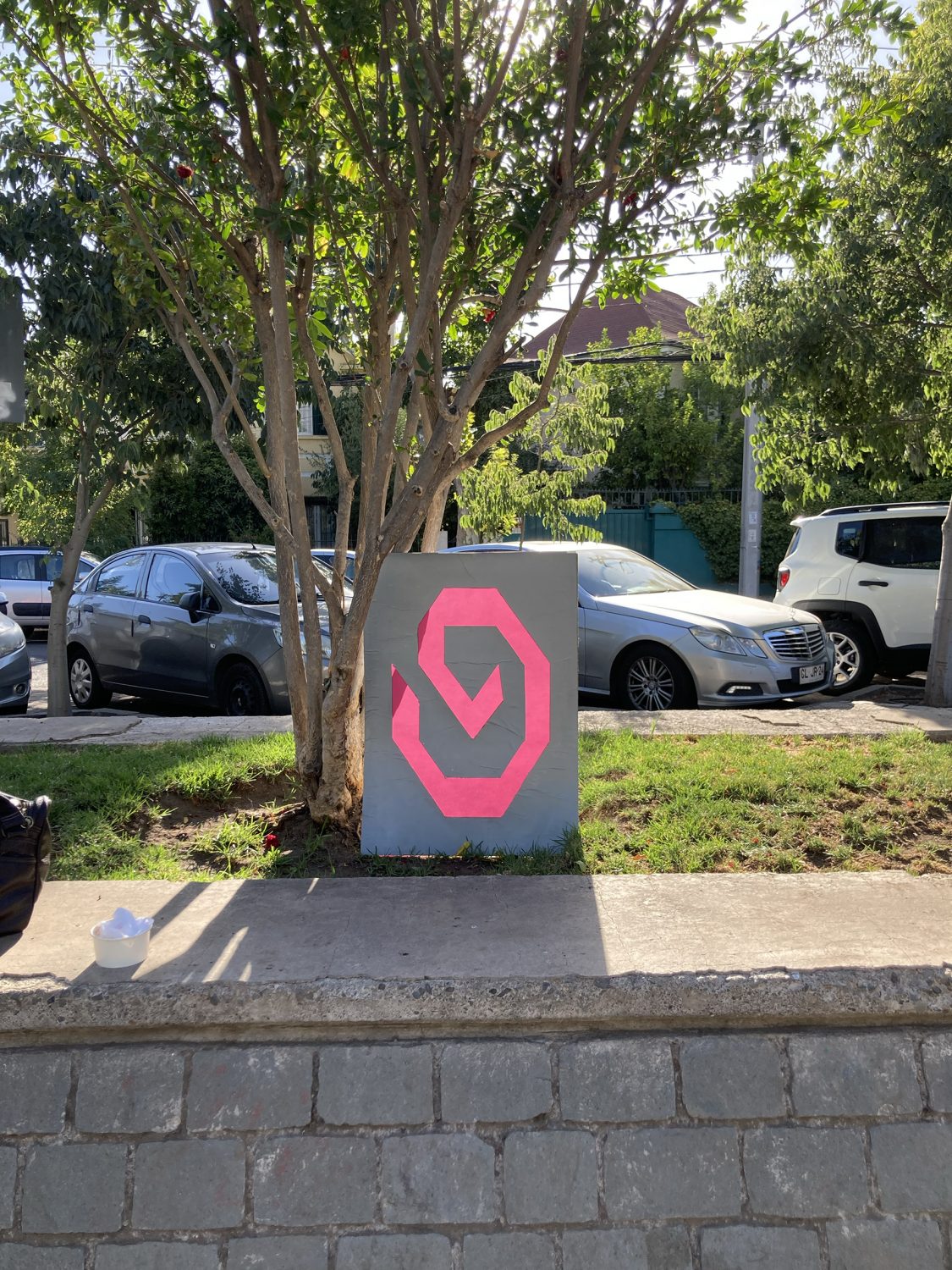
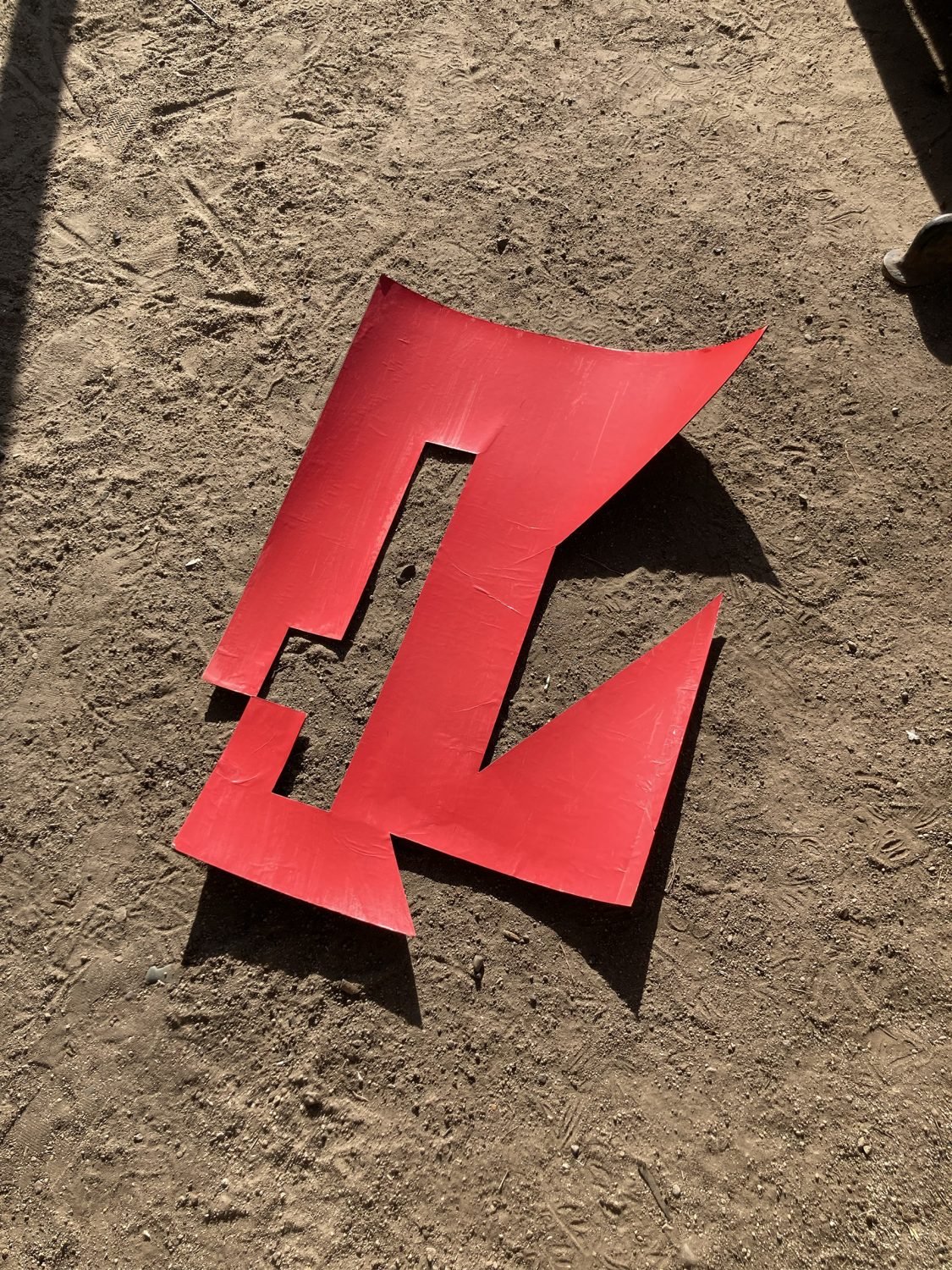
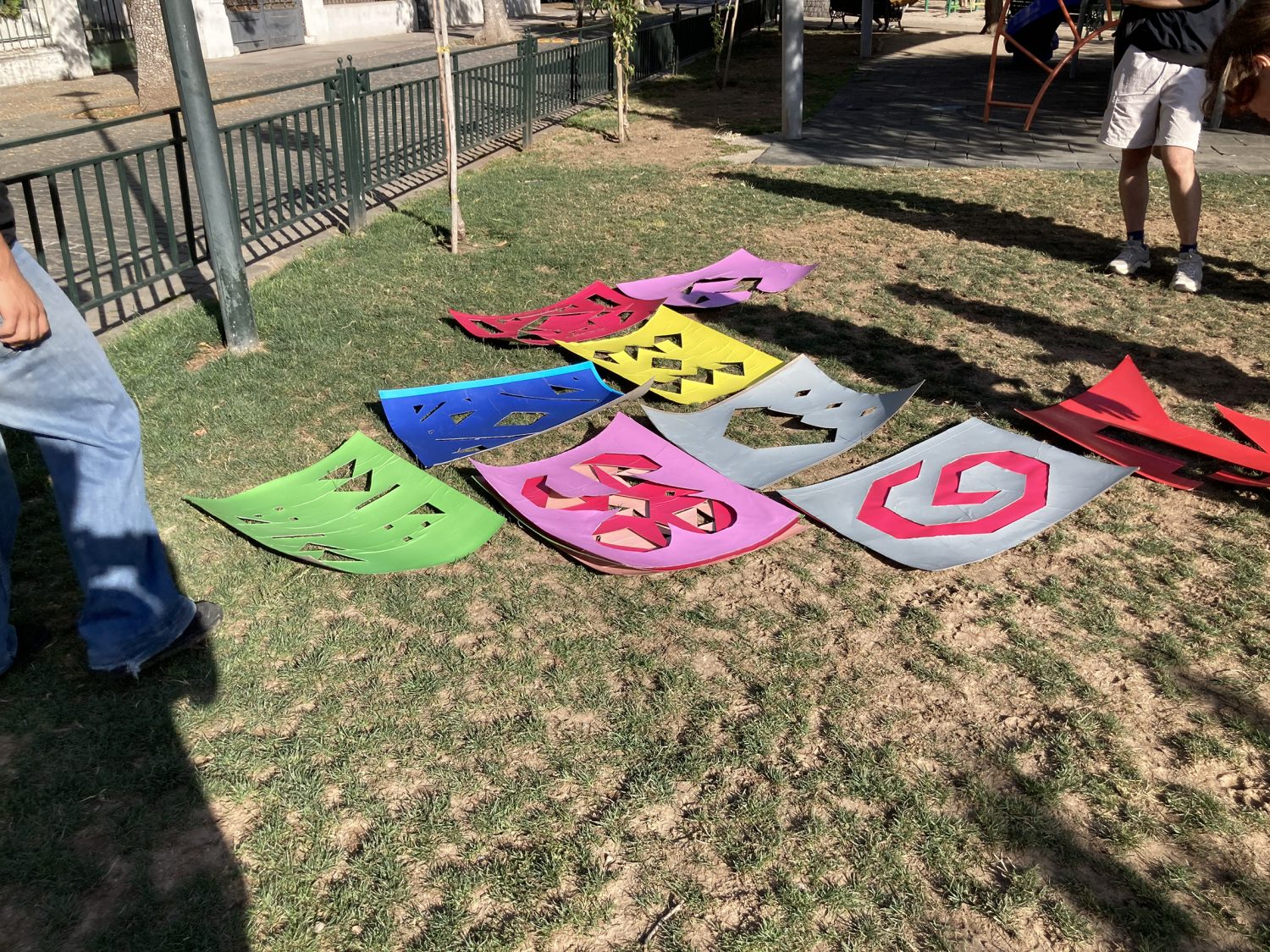
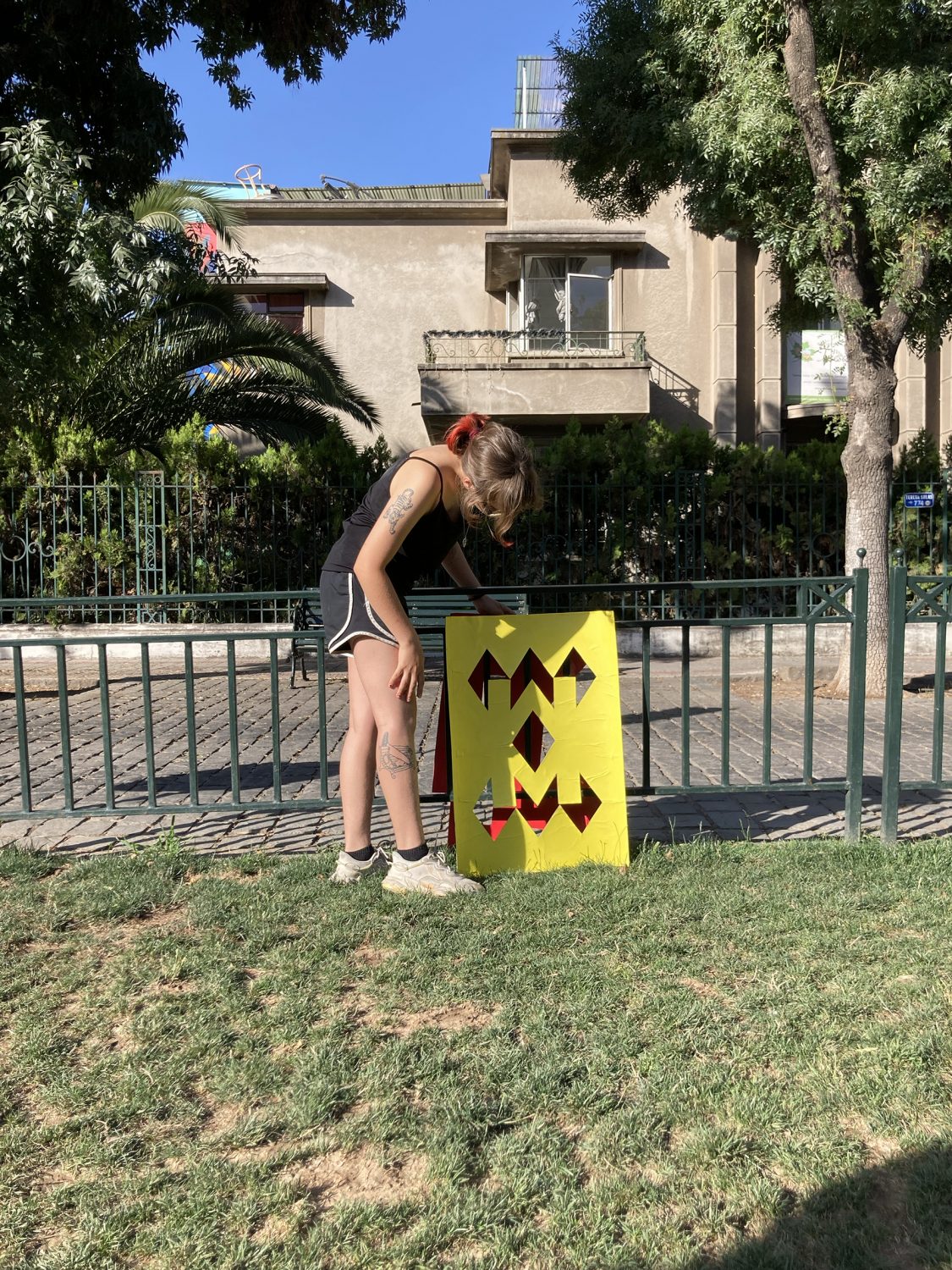
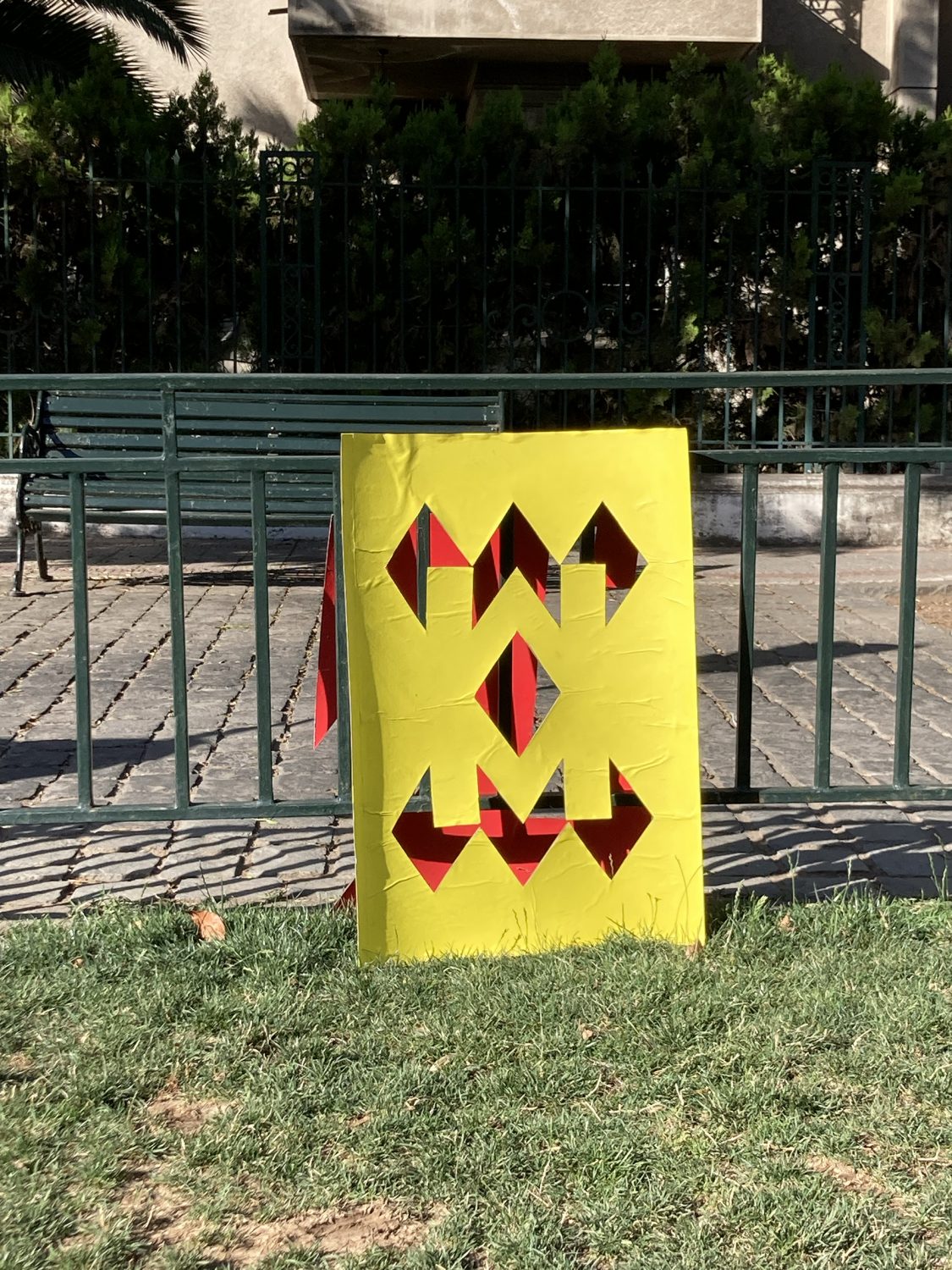
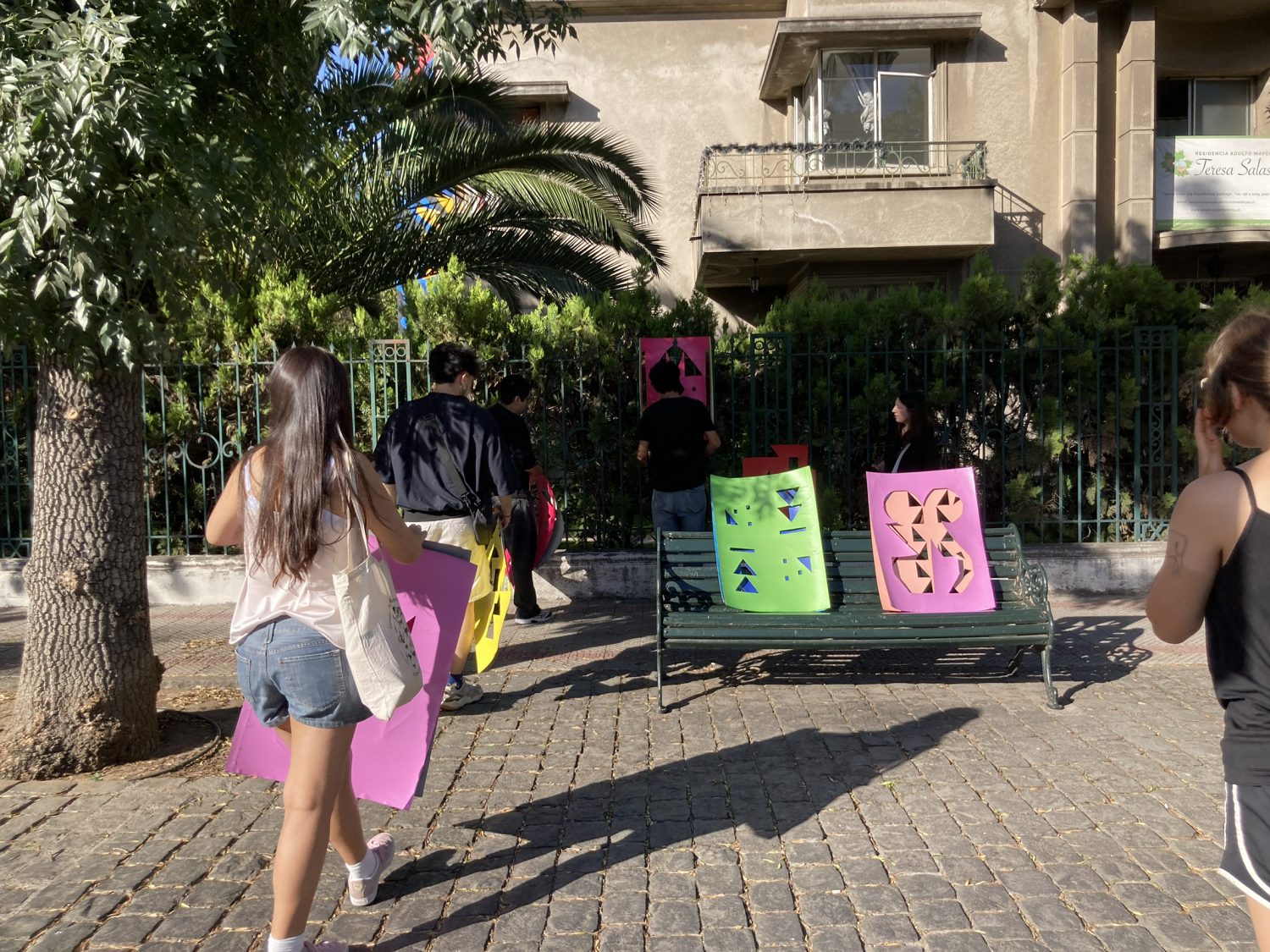
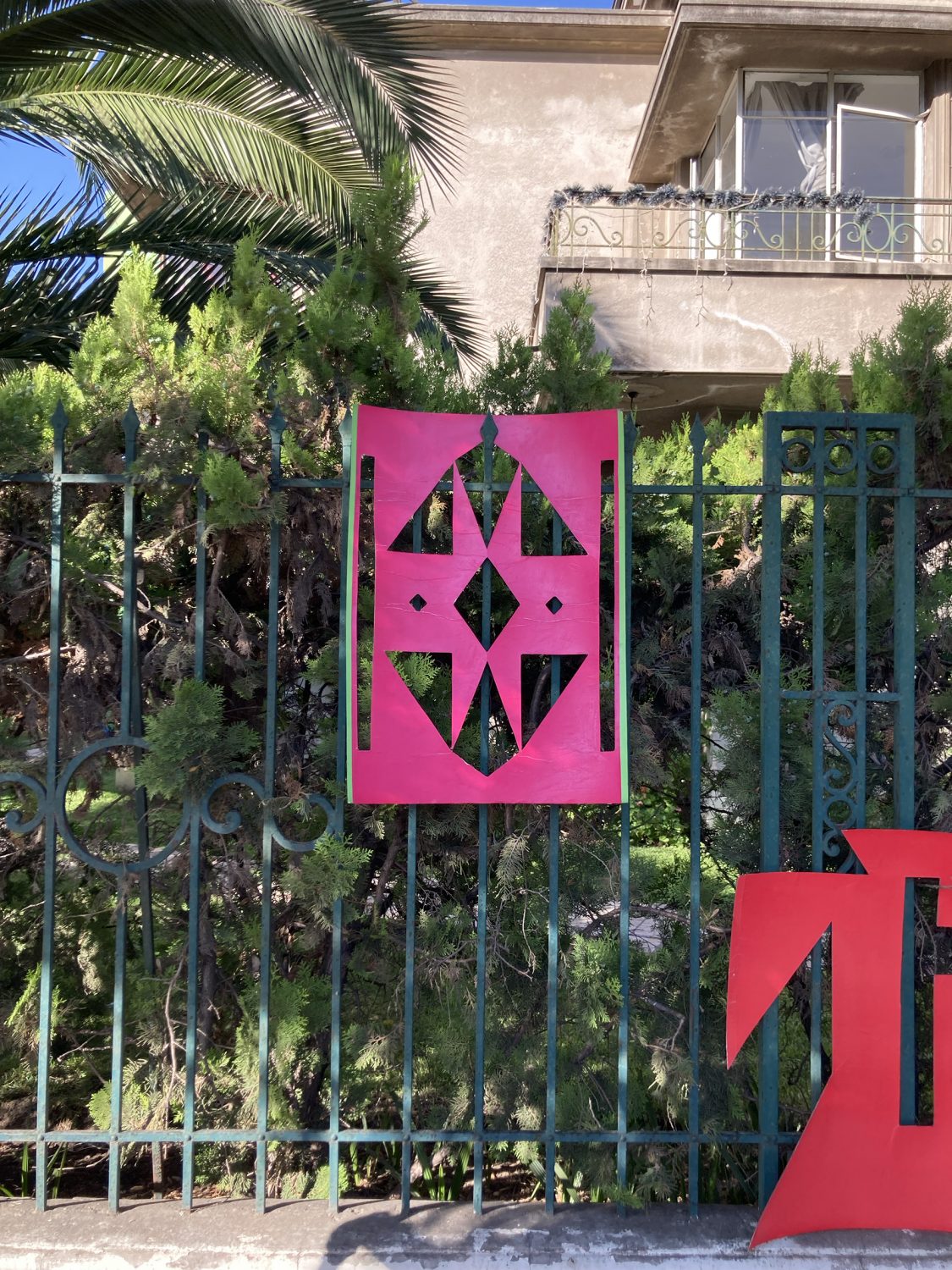
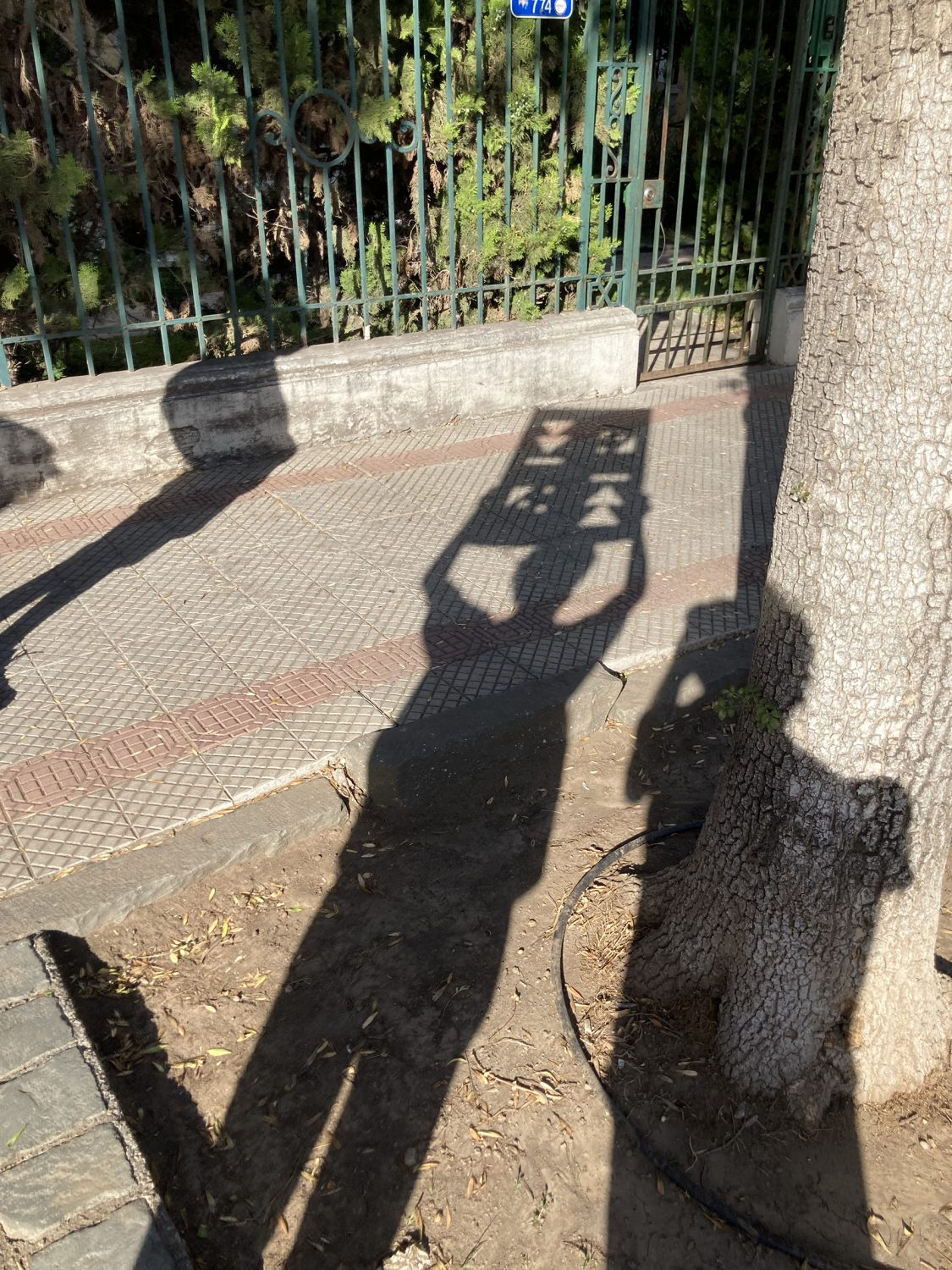
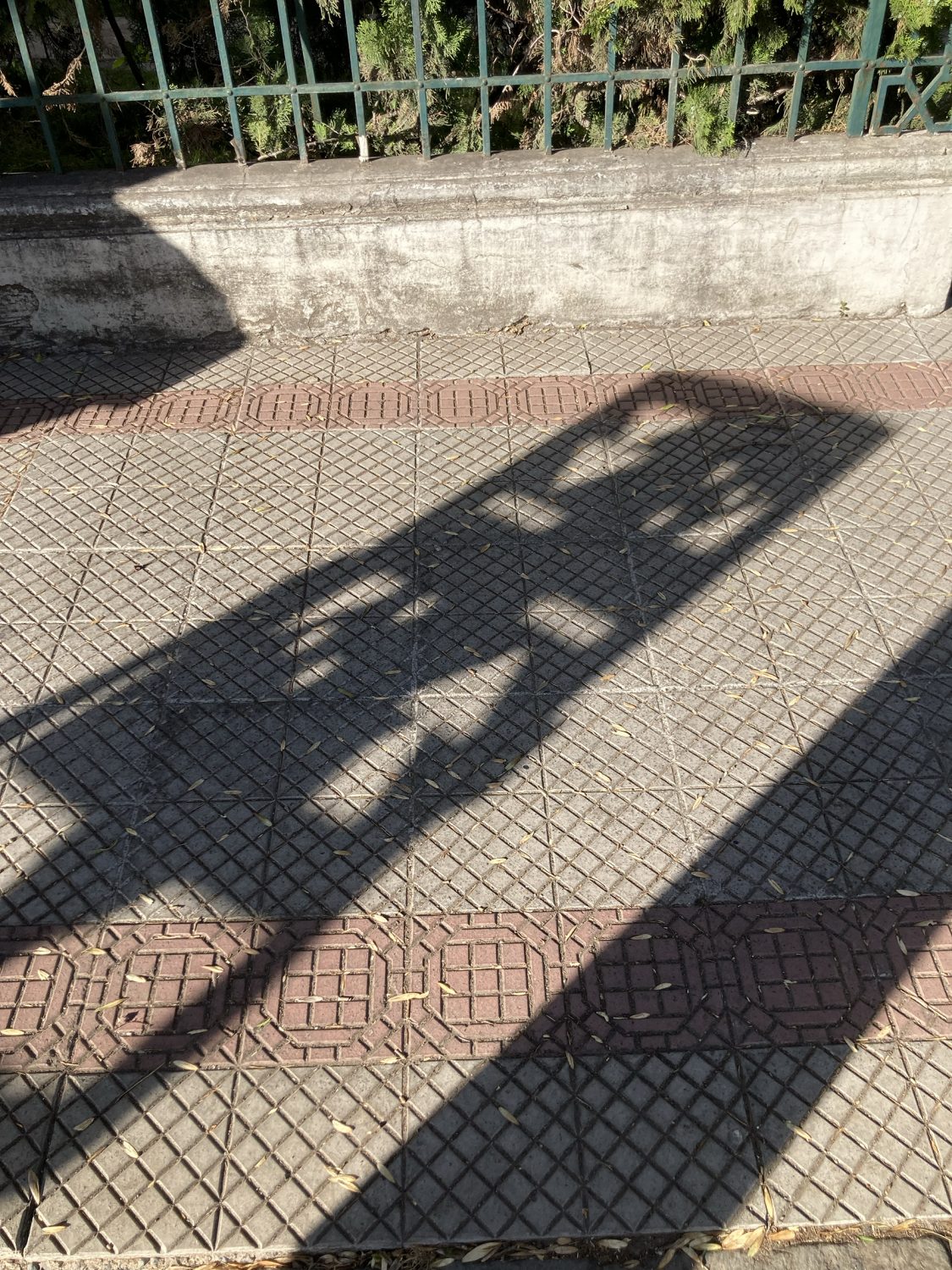
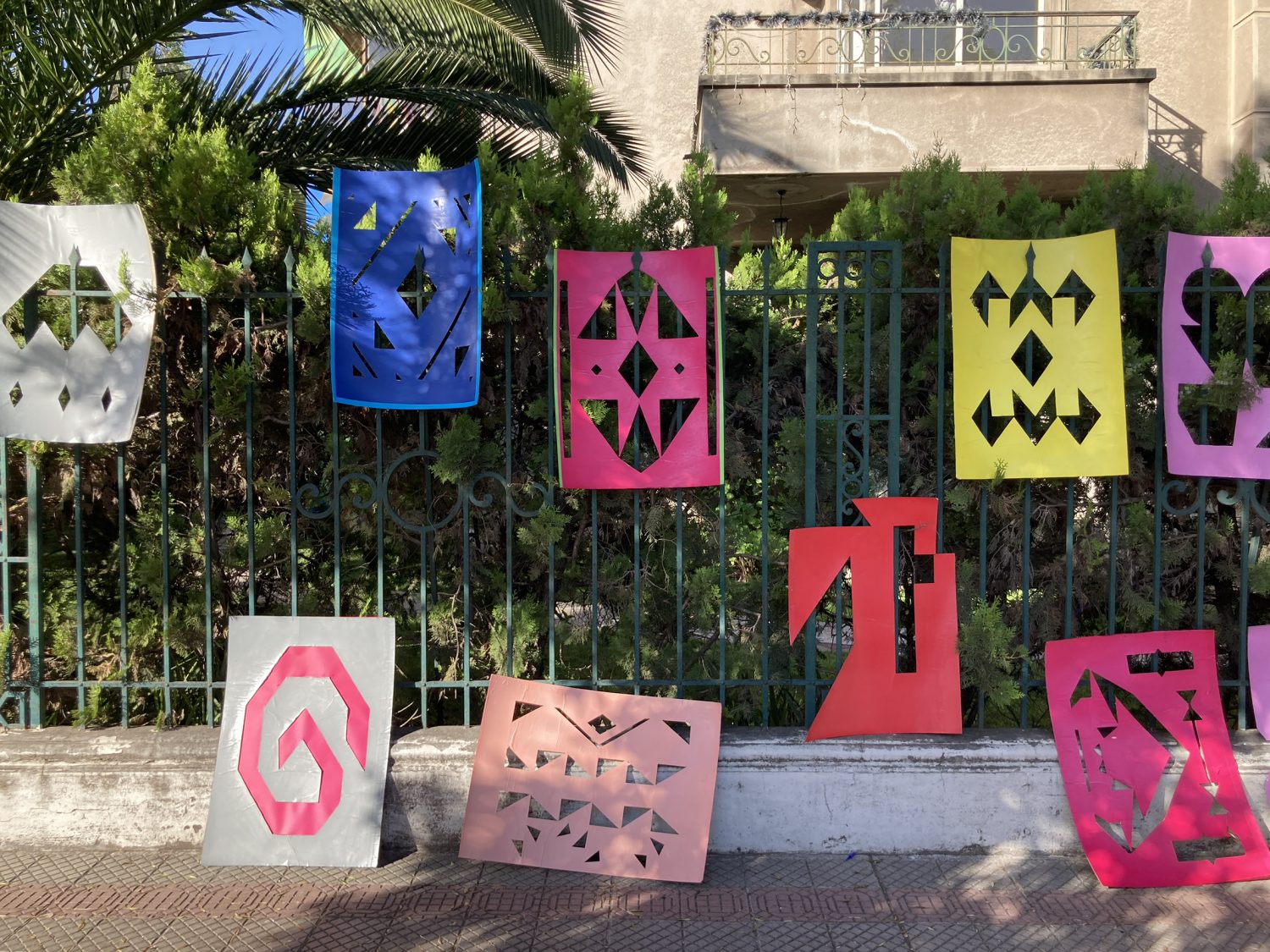
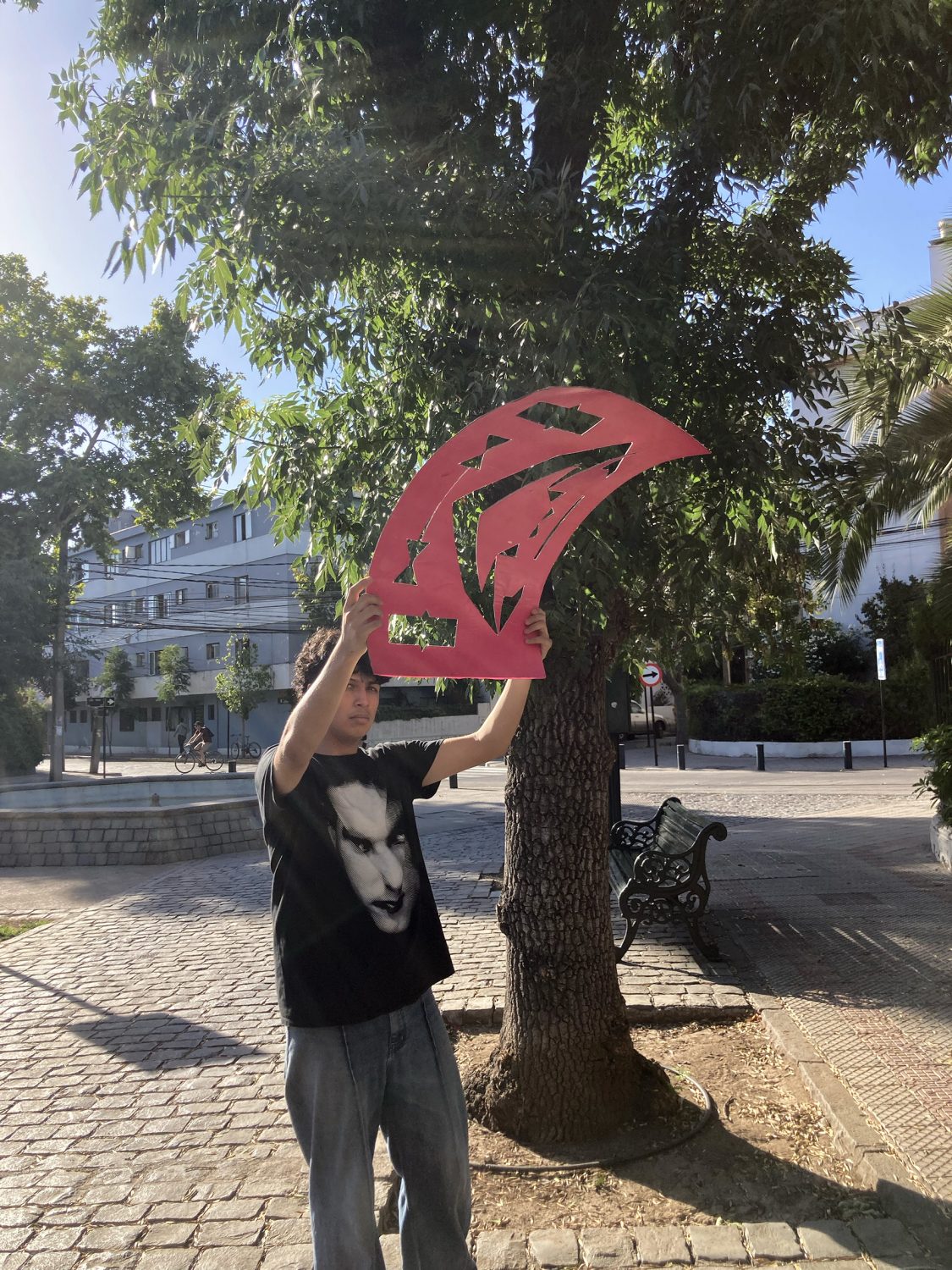
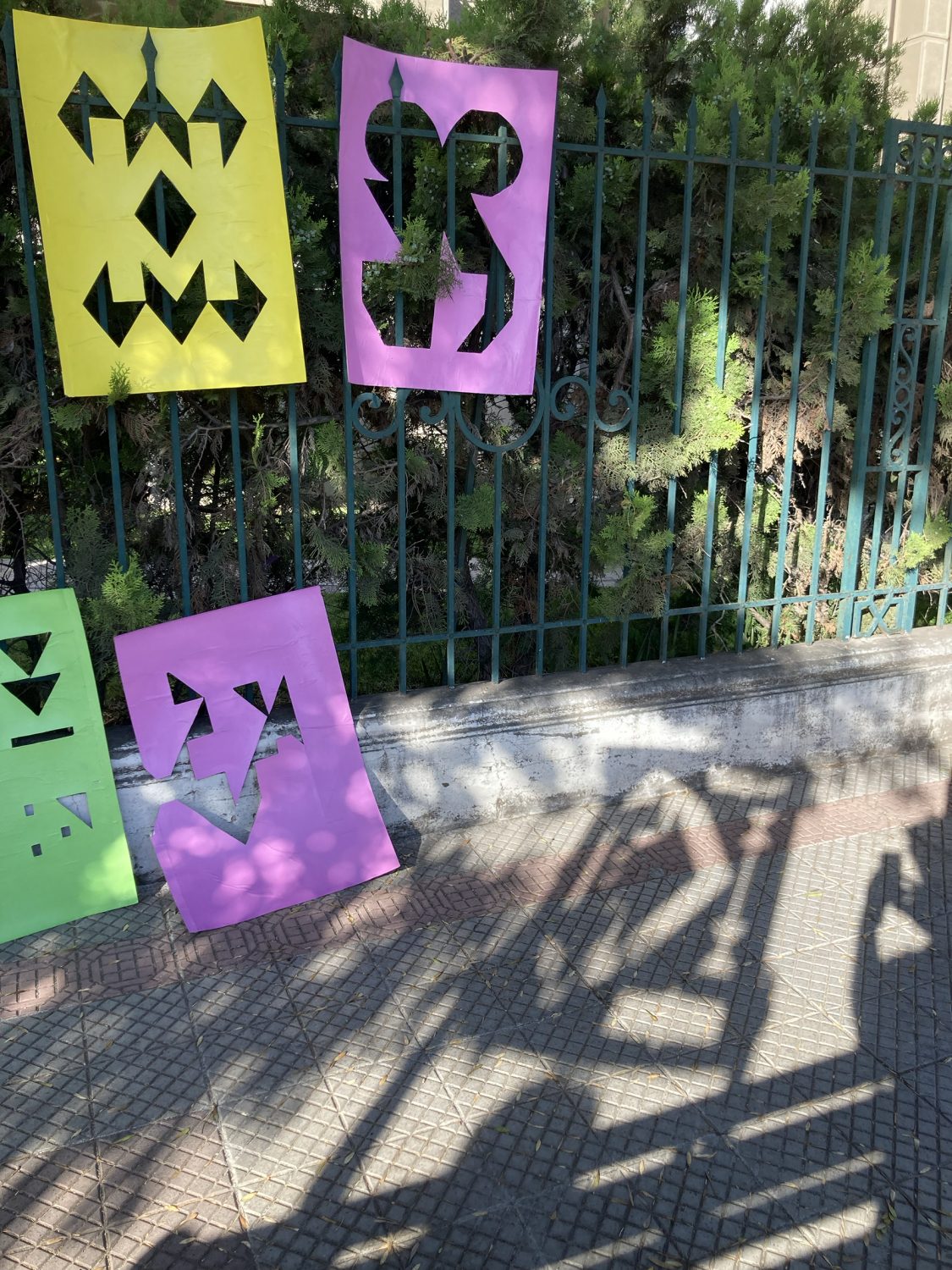
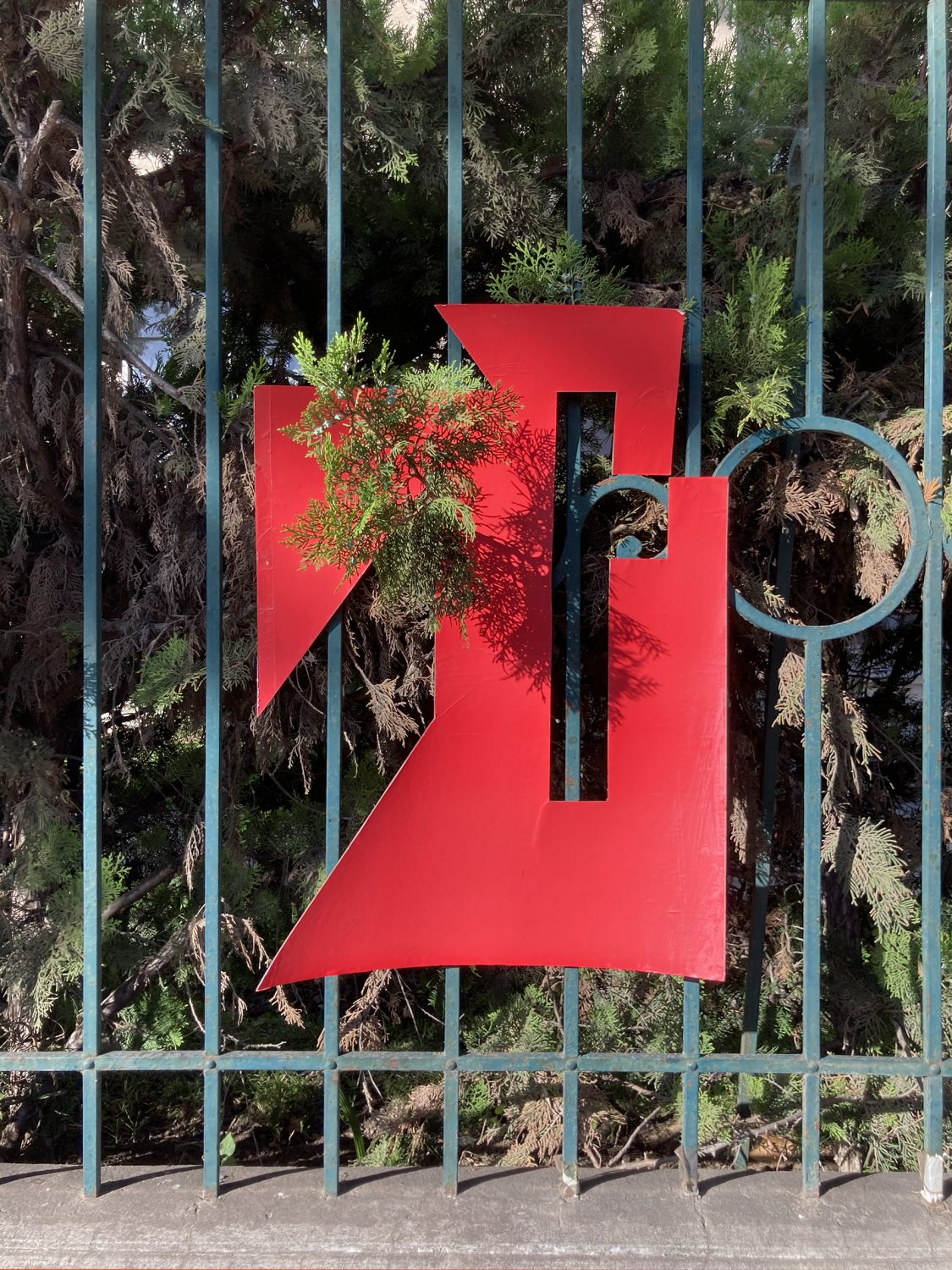
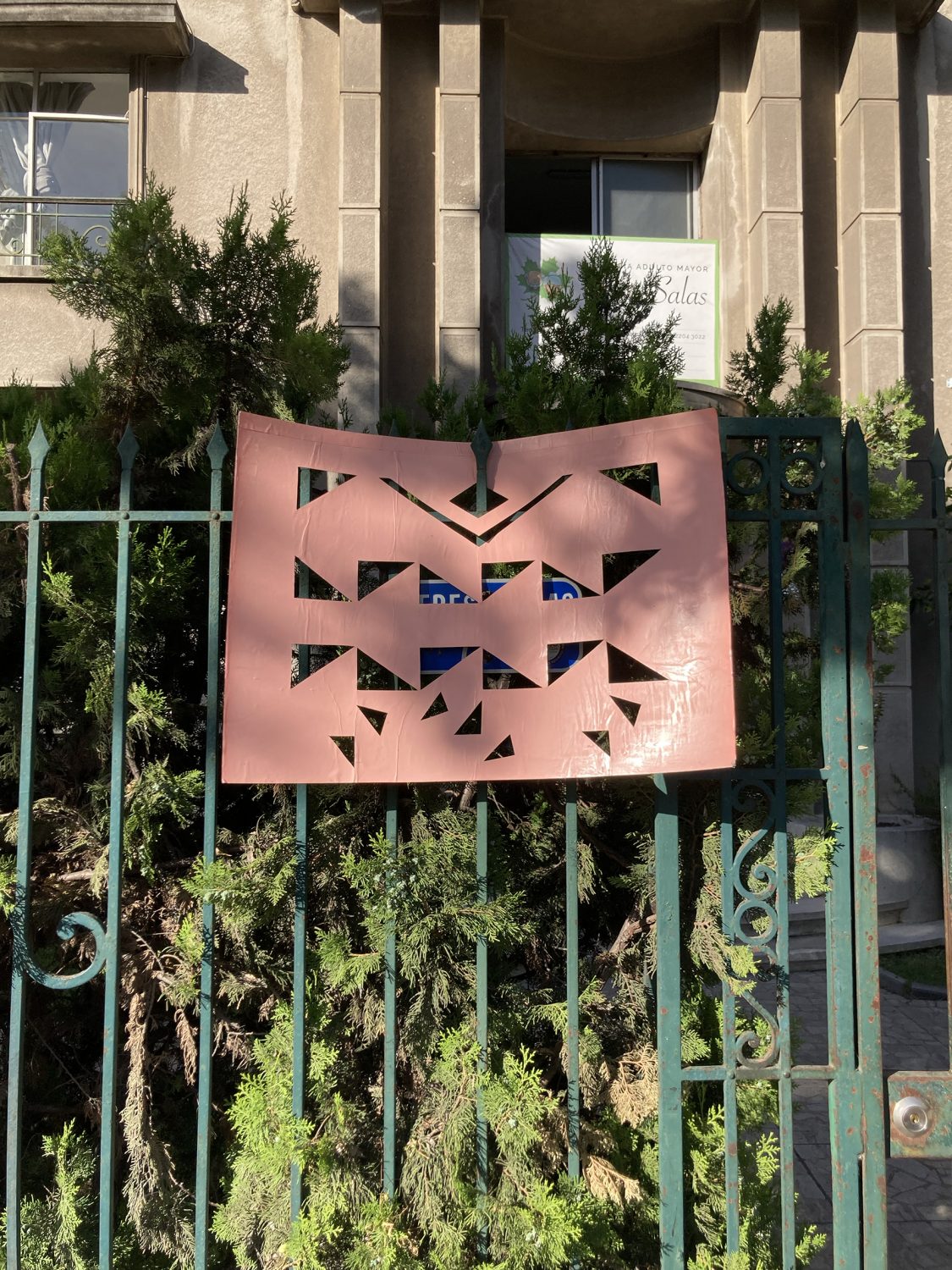
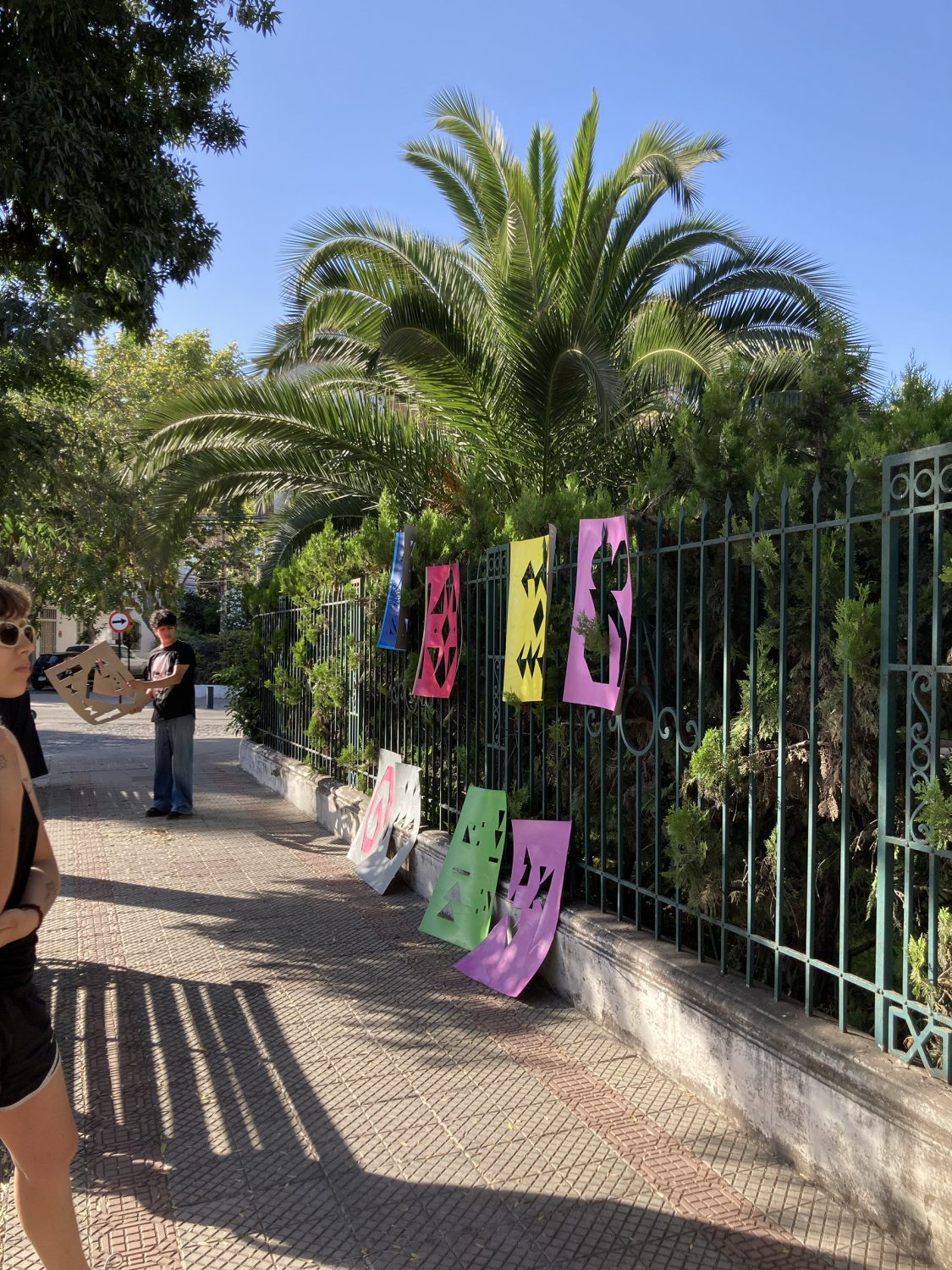
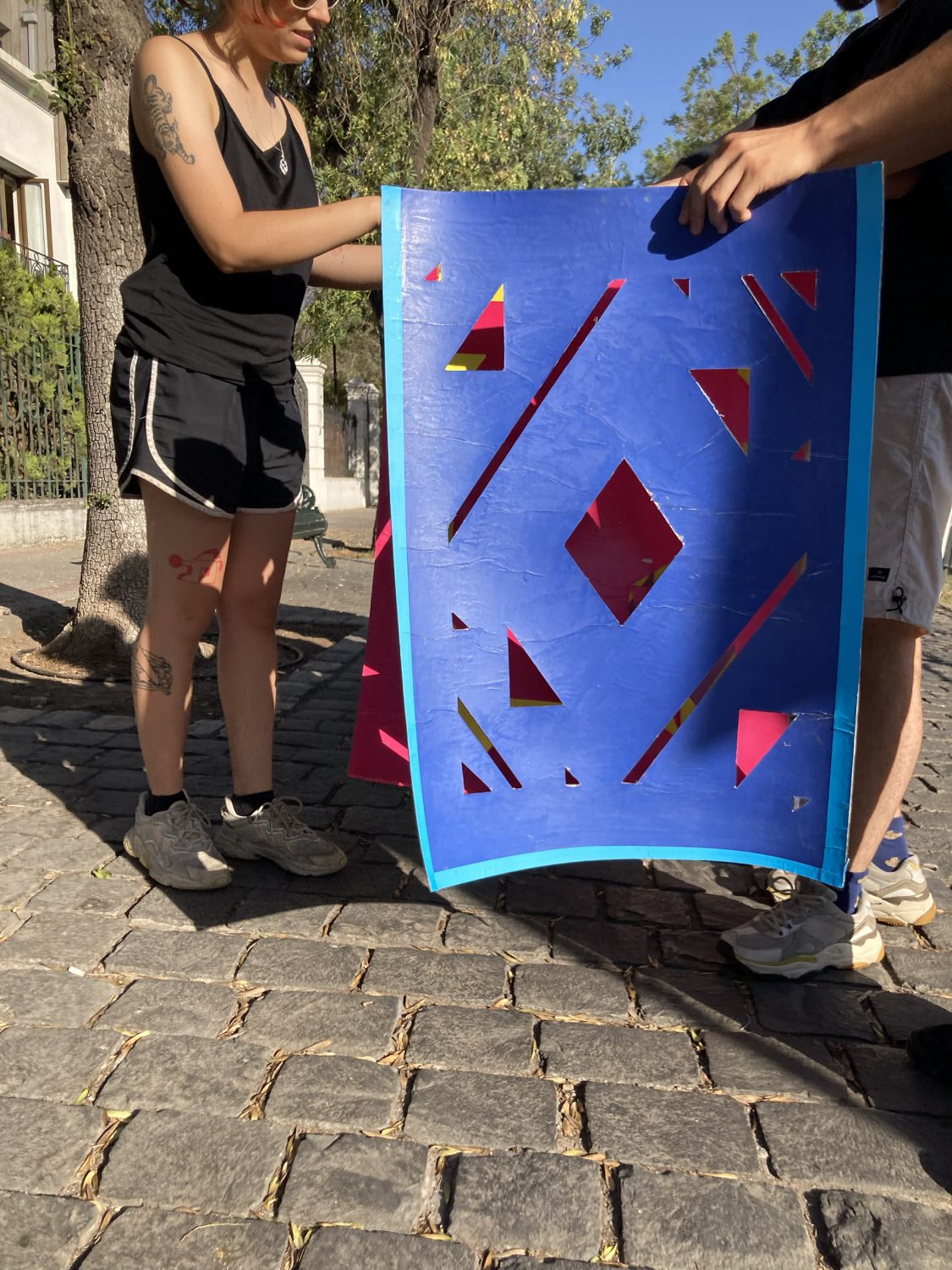
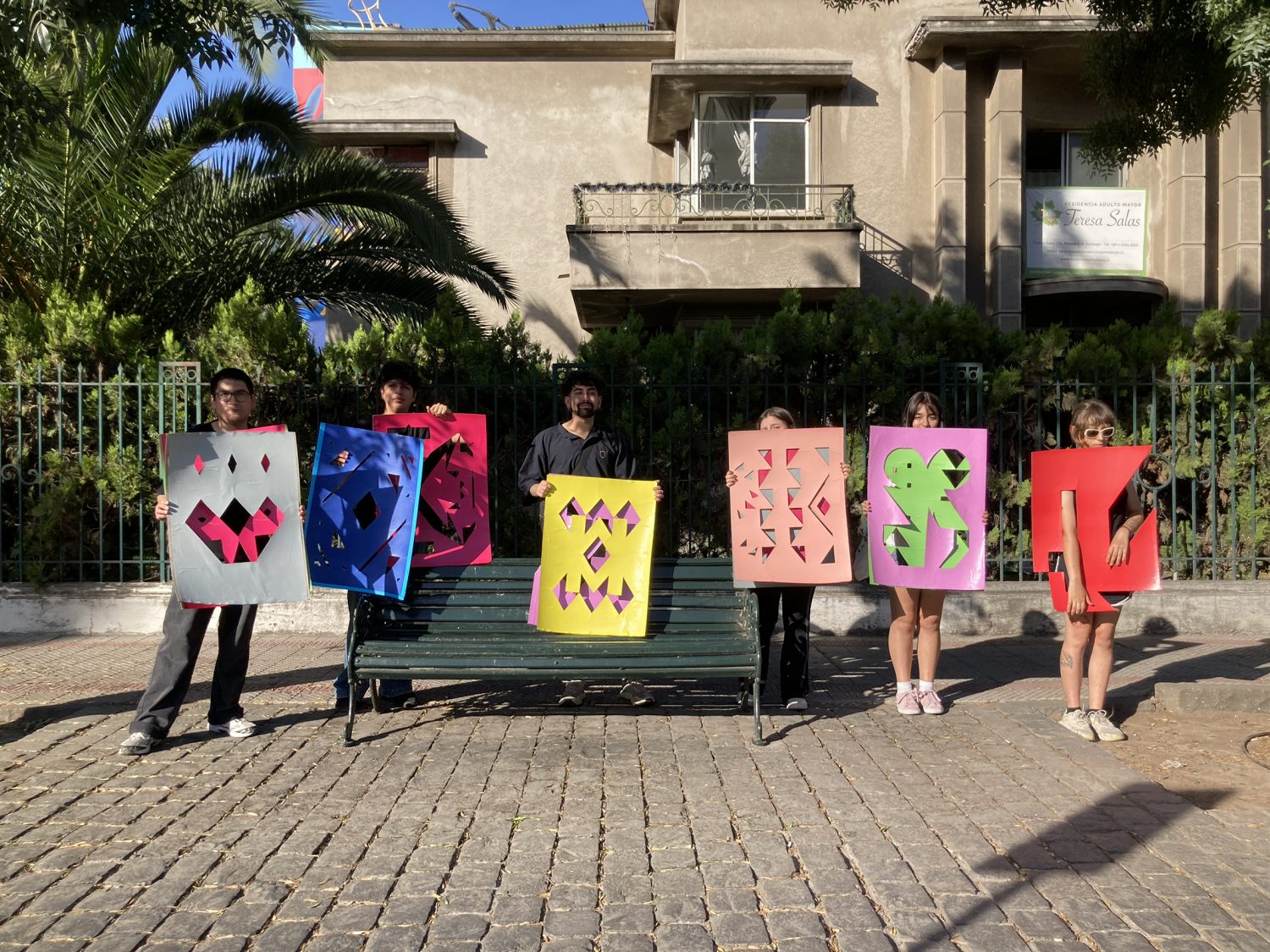
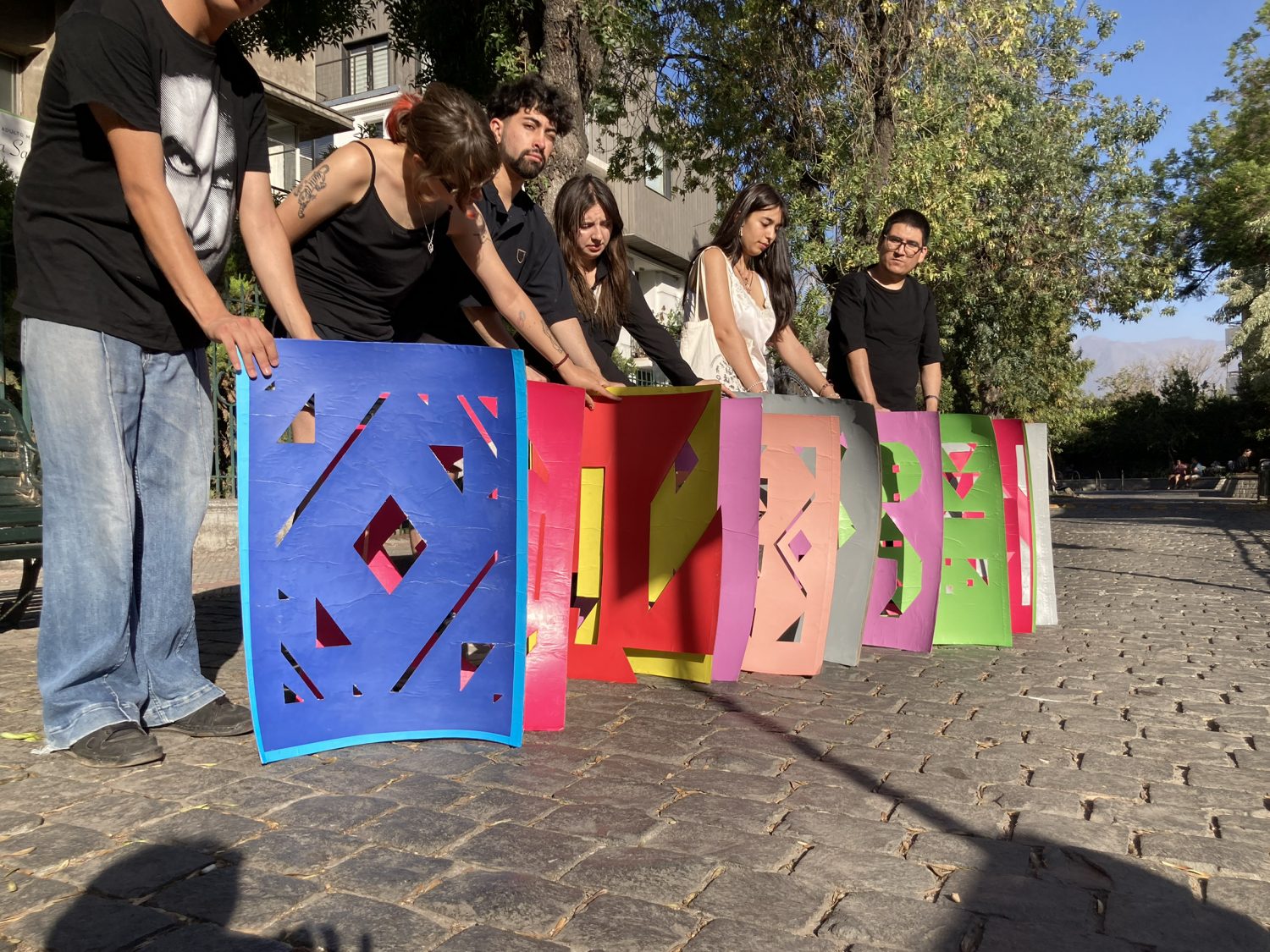
////////////////////////////////////////////////////////////////////////////////////////////////////////////
….
